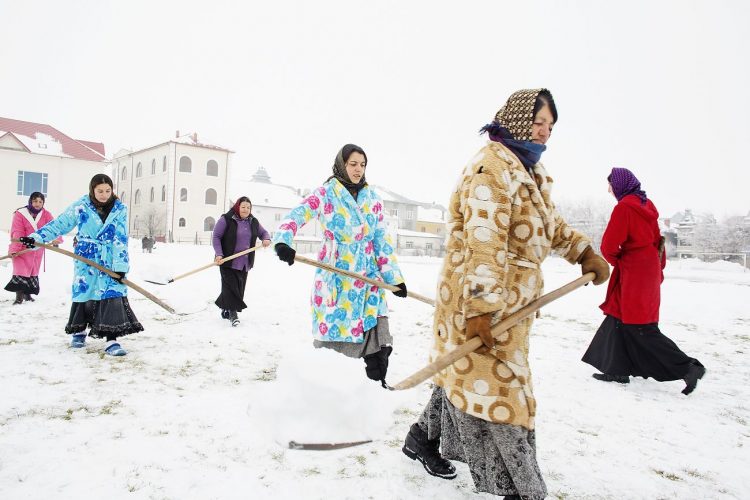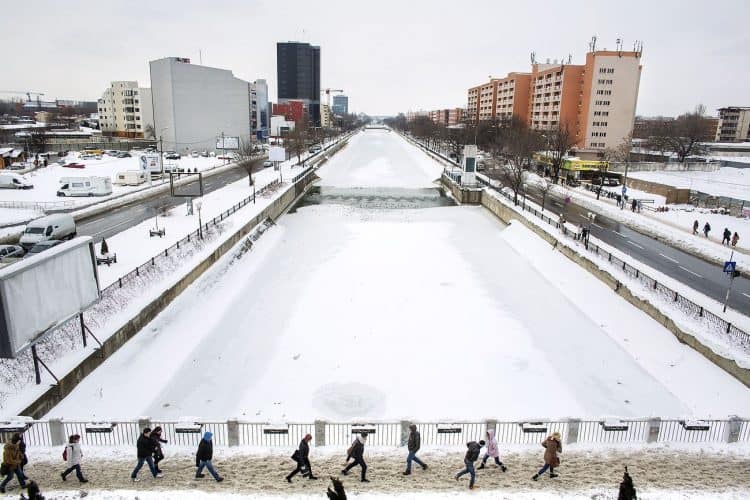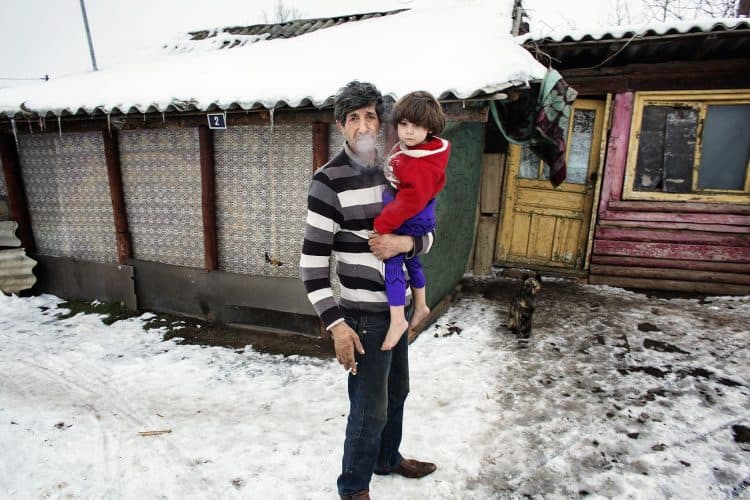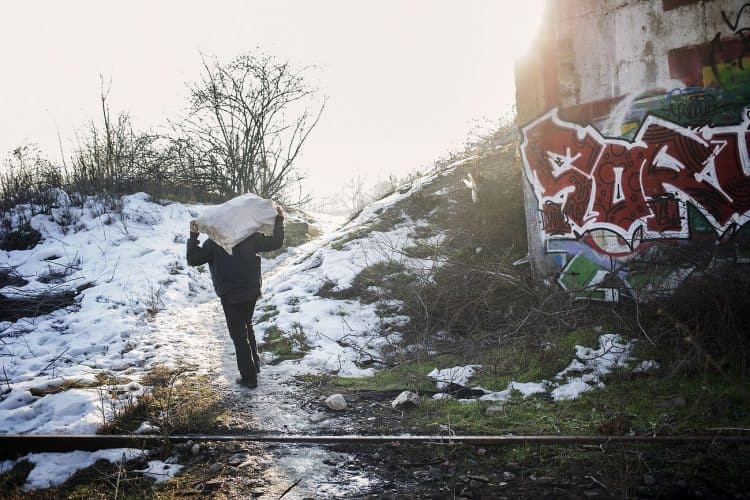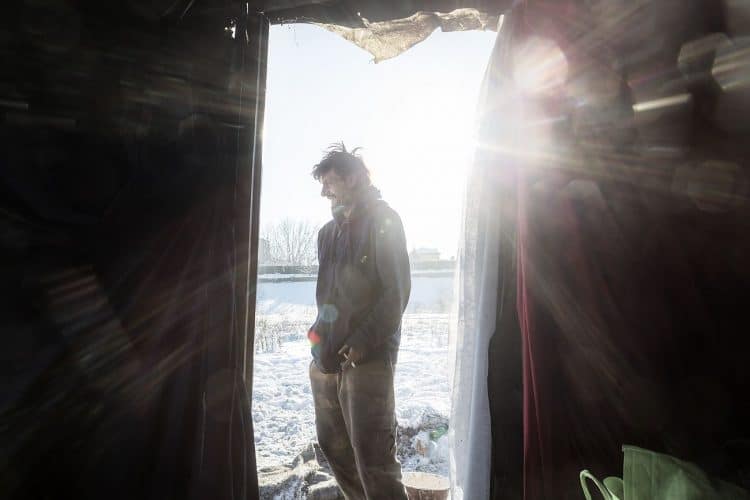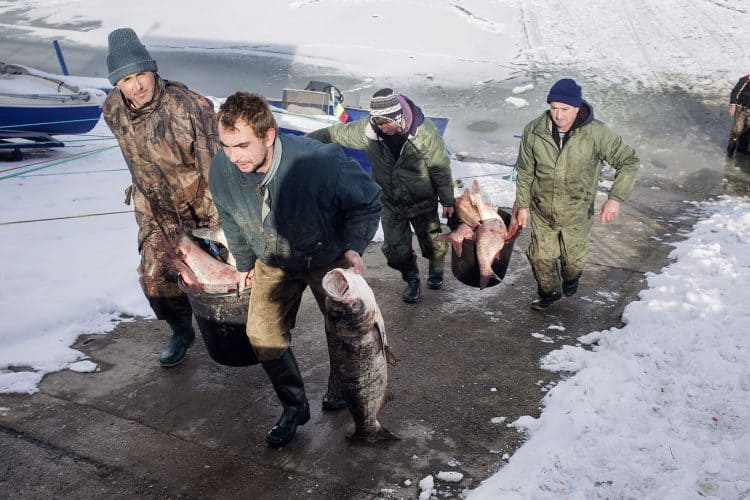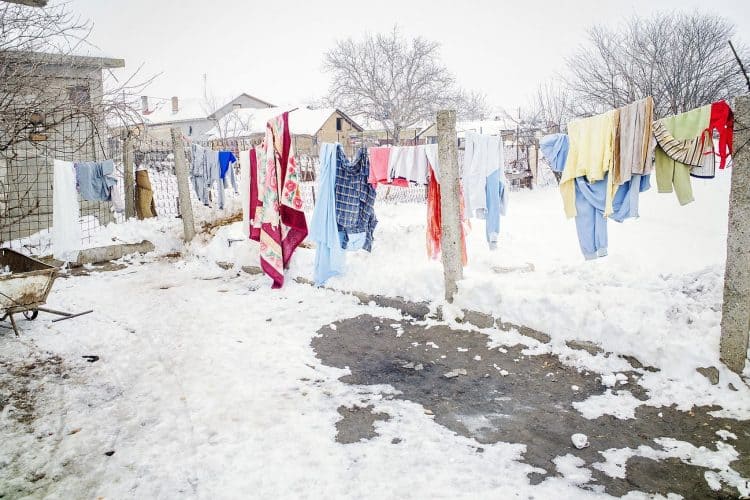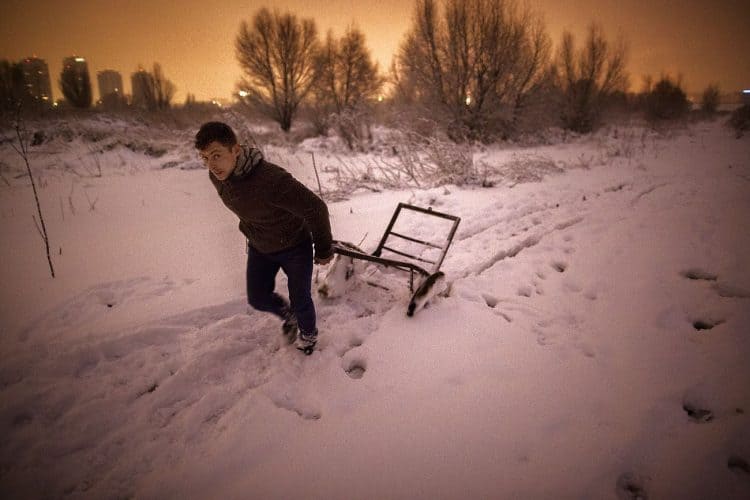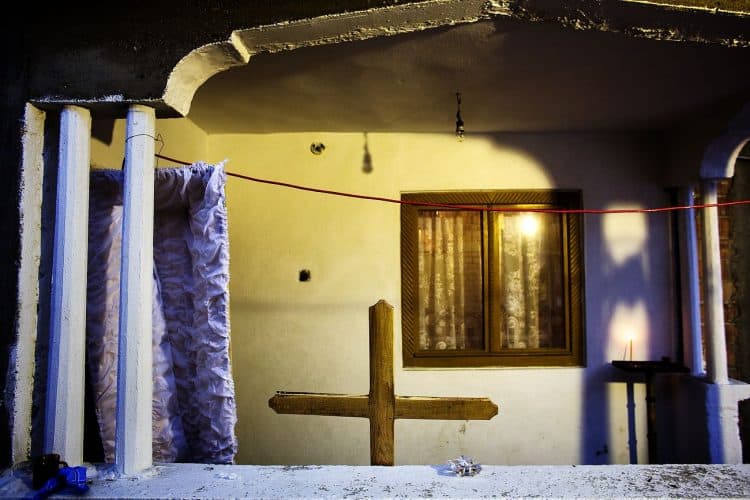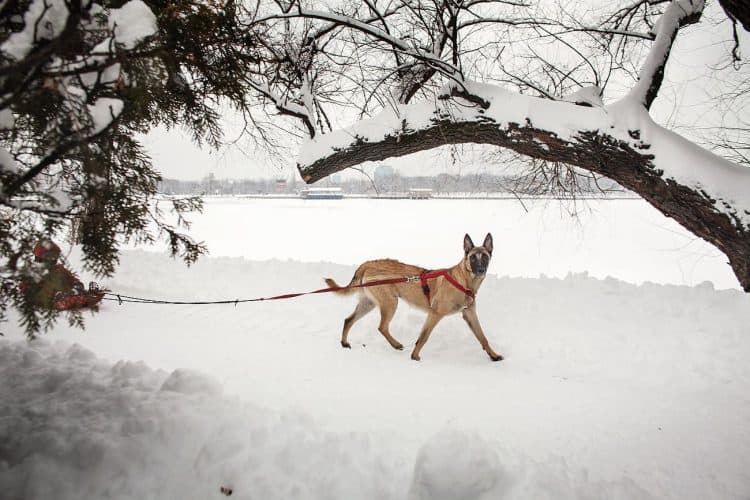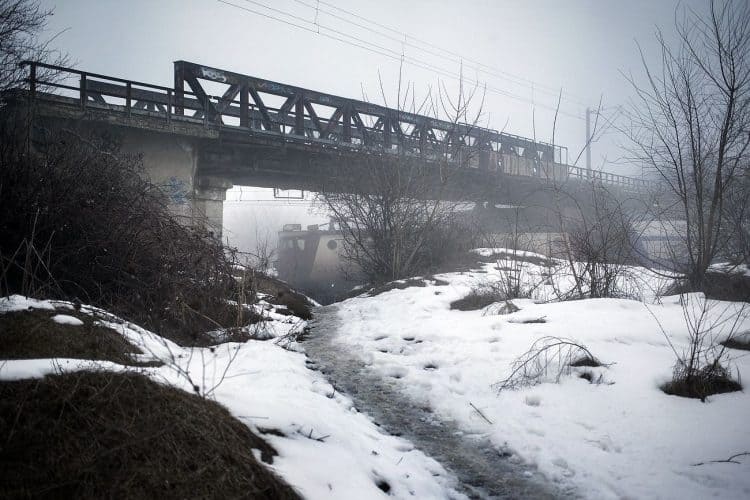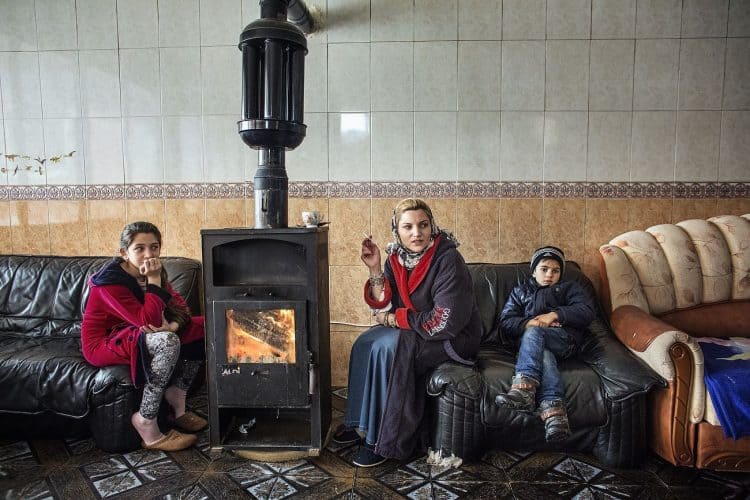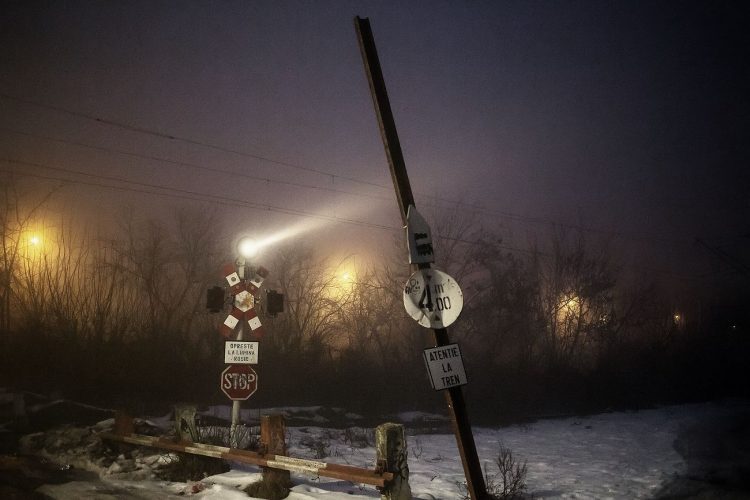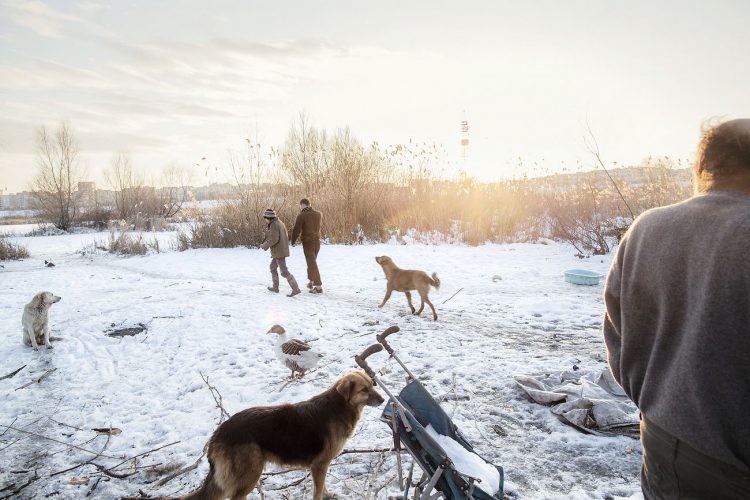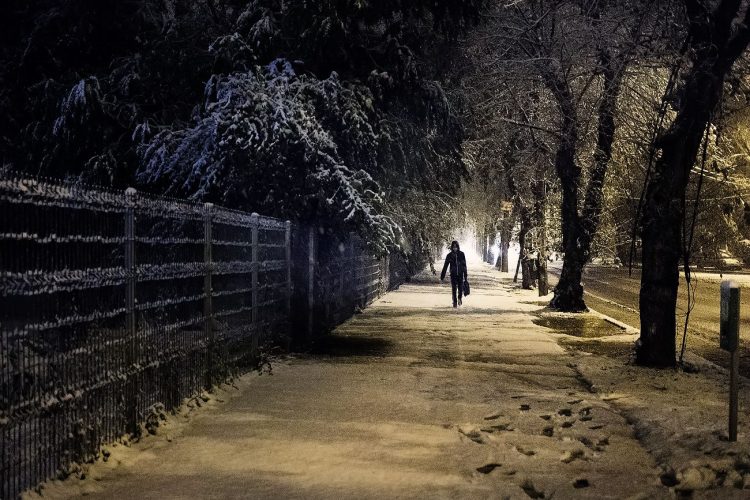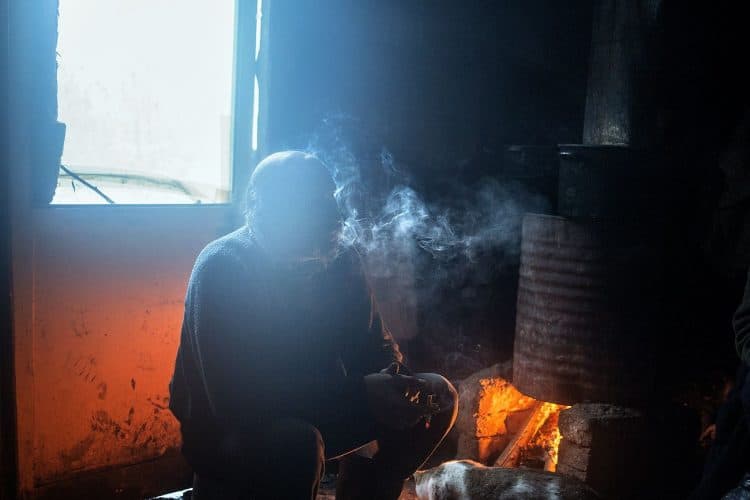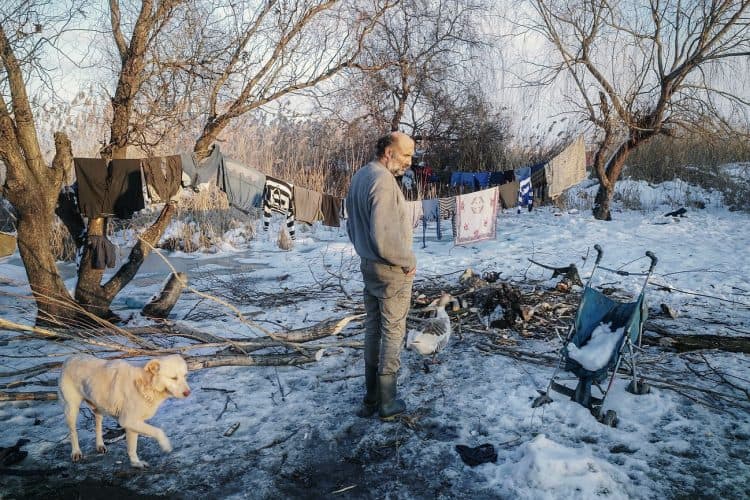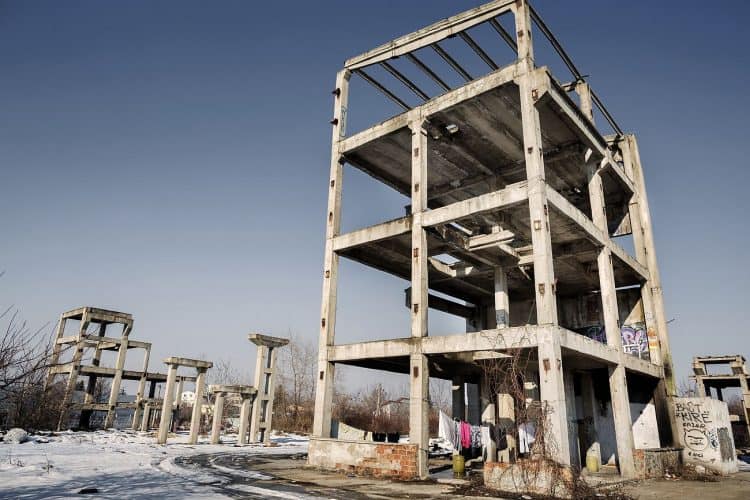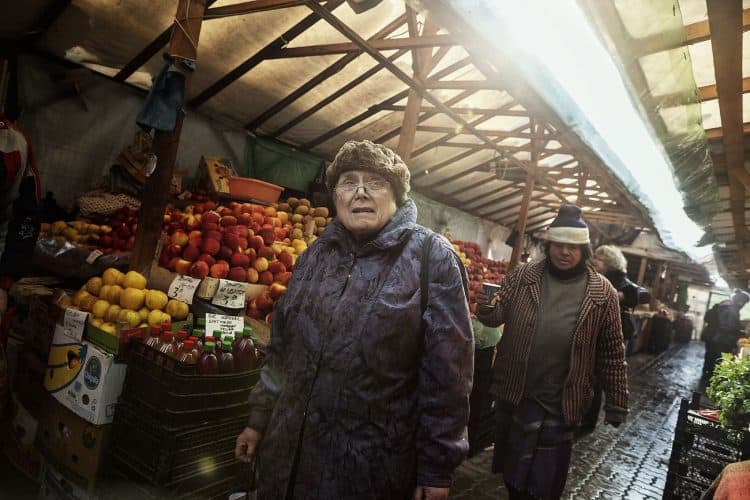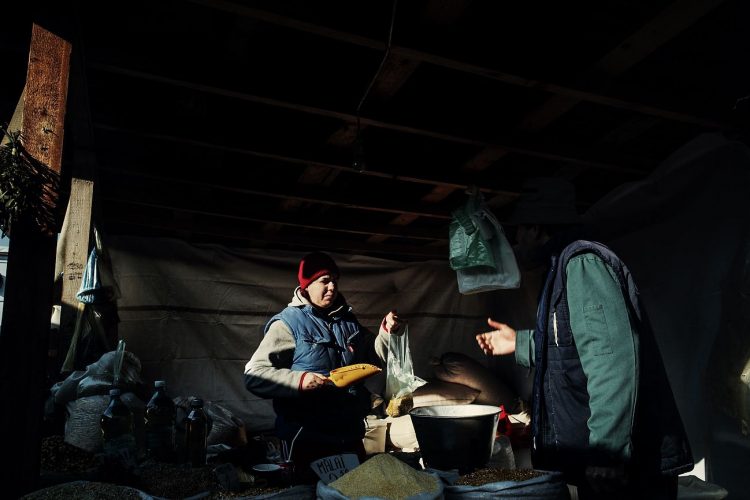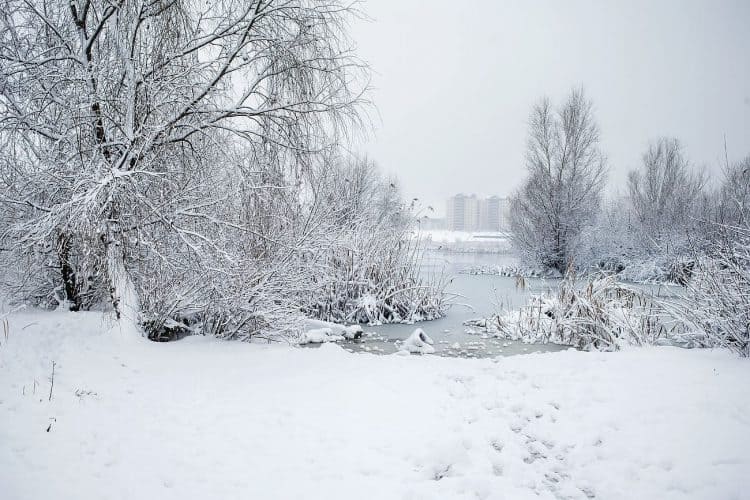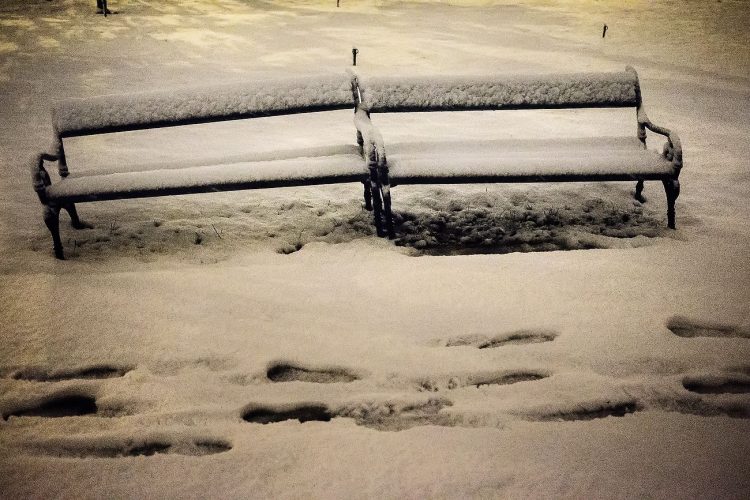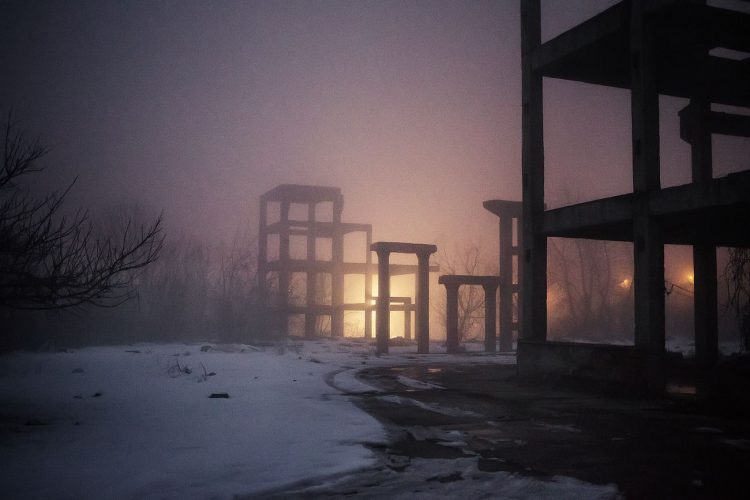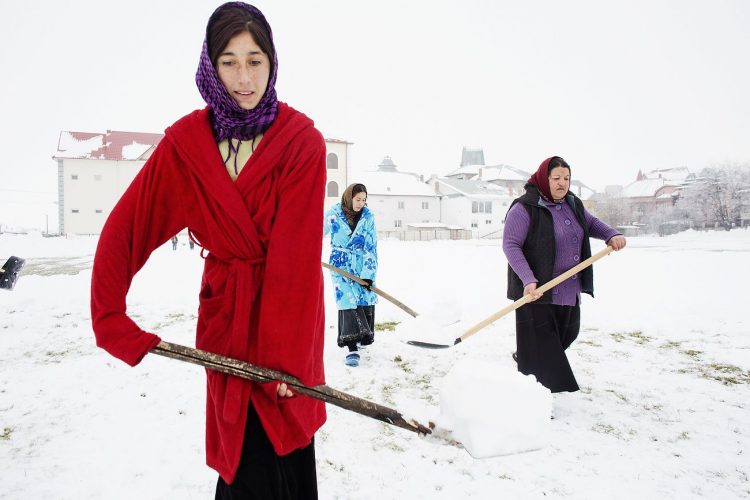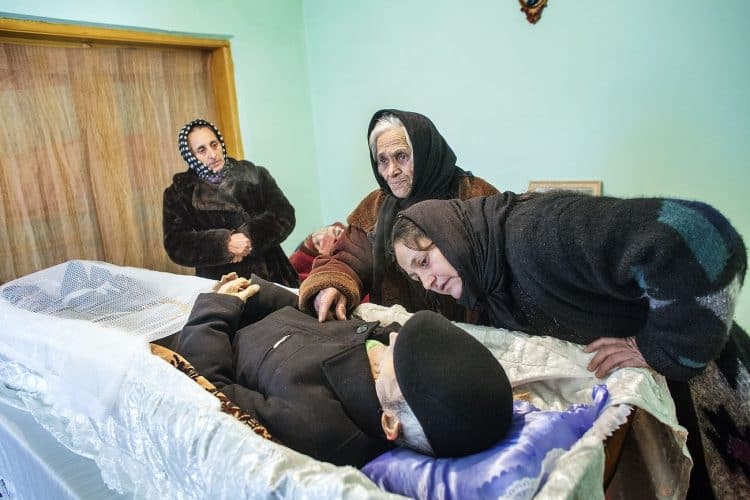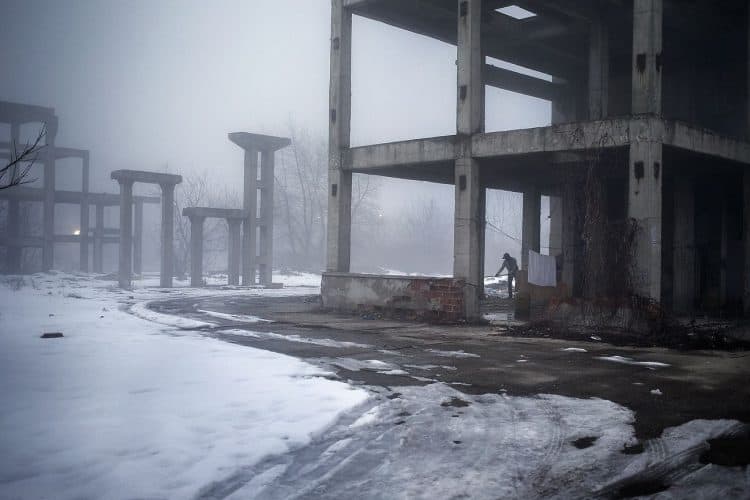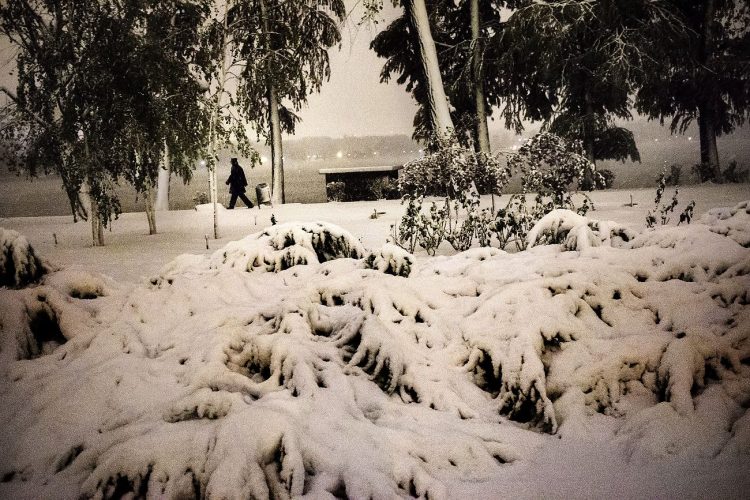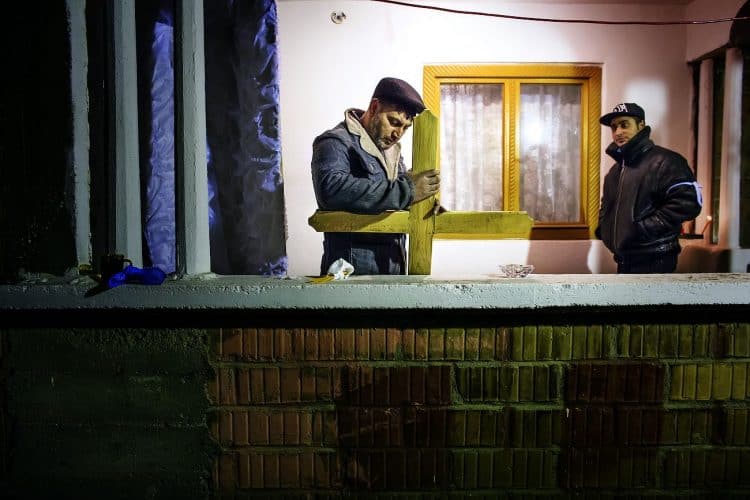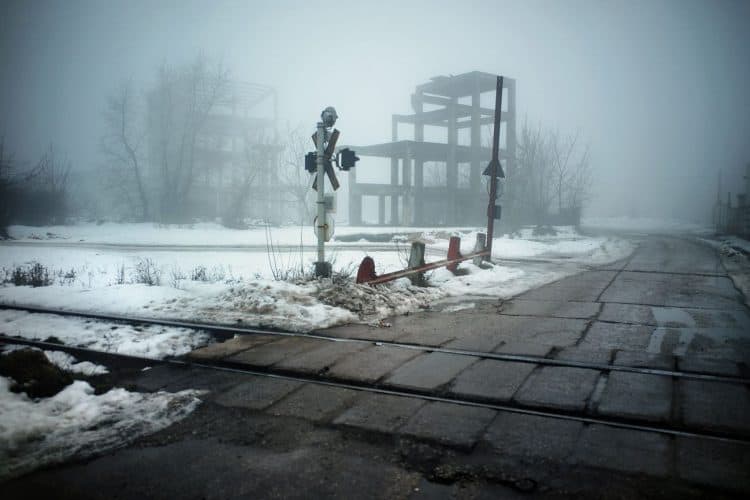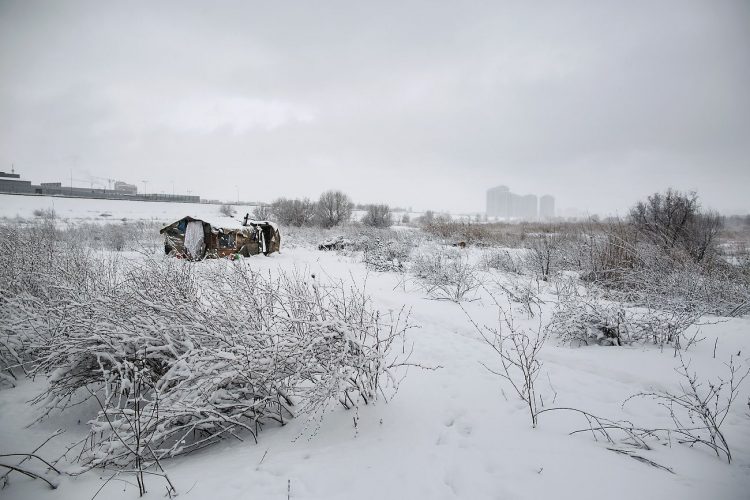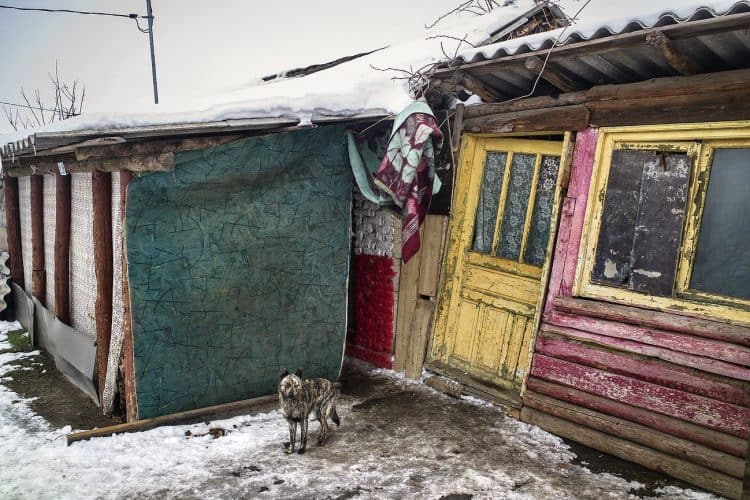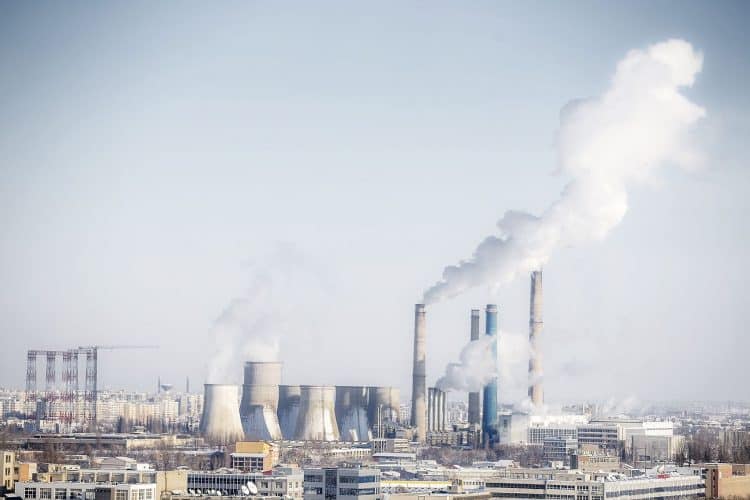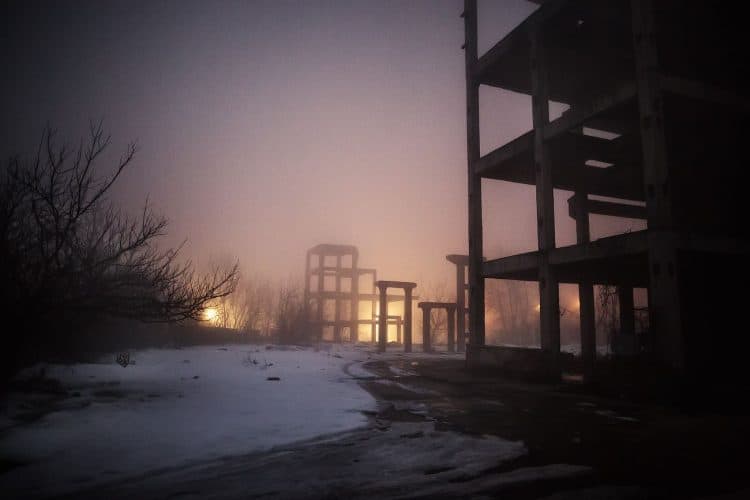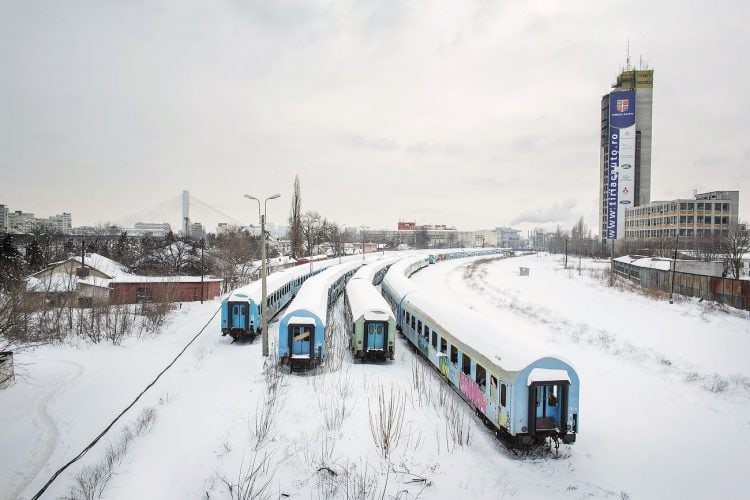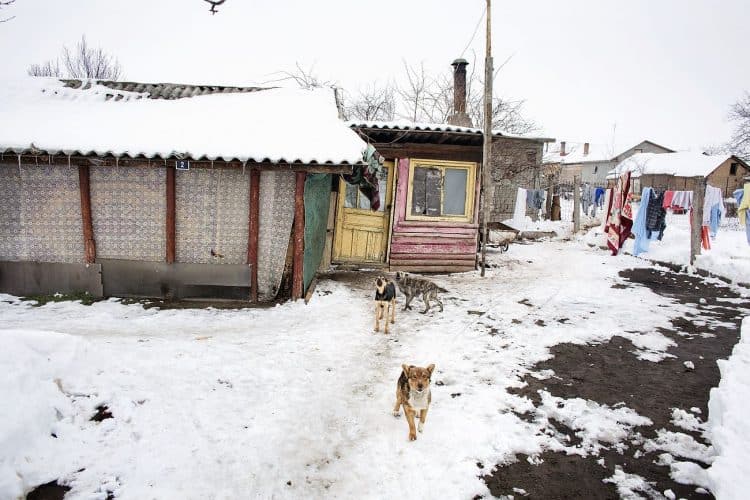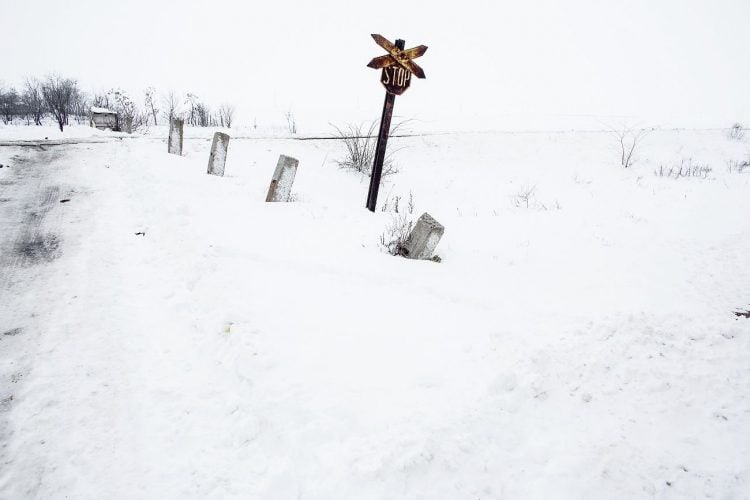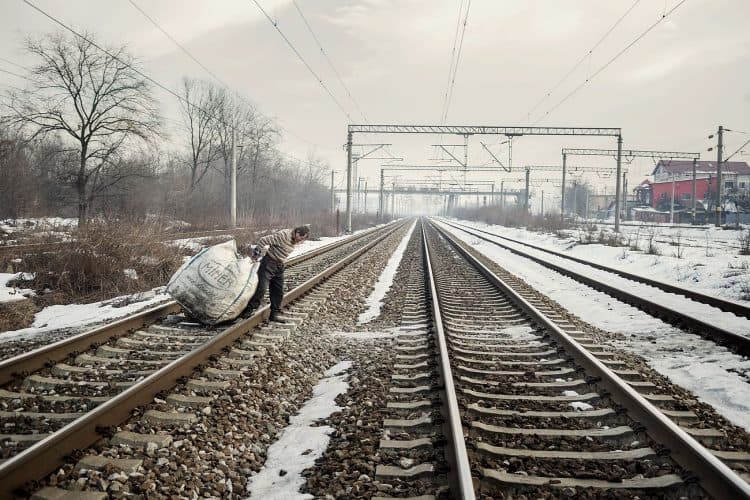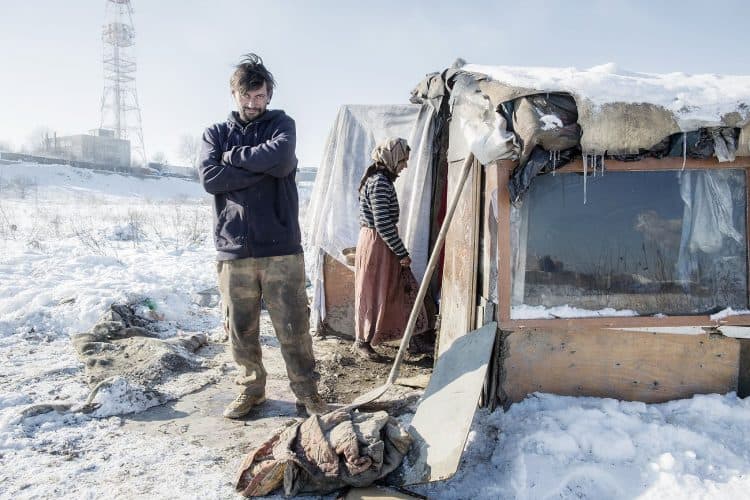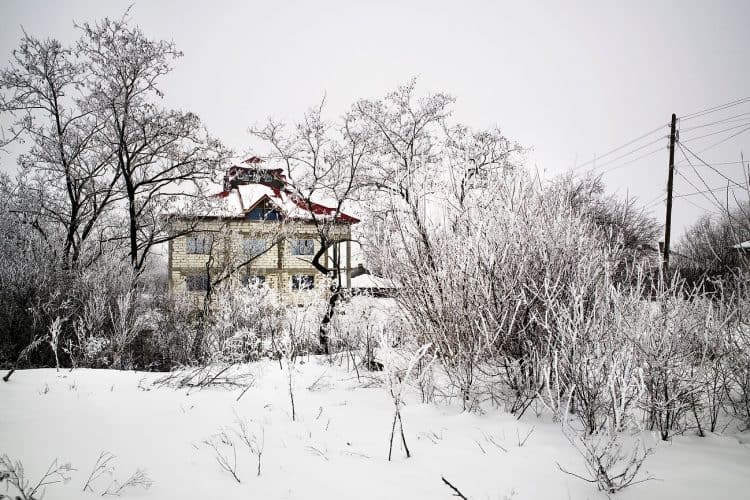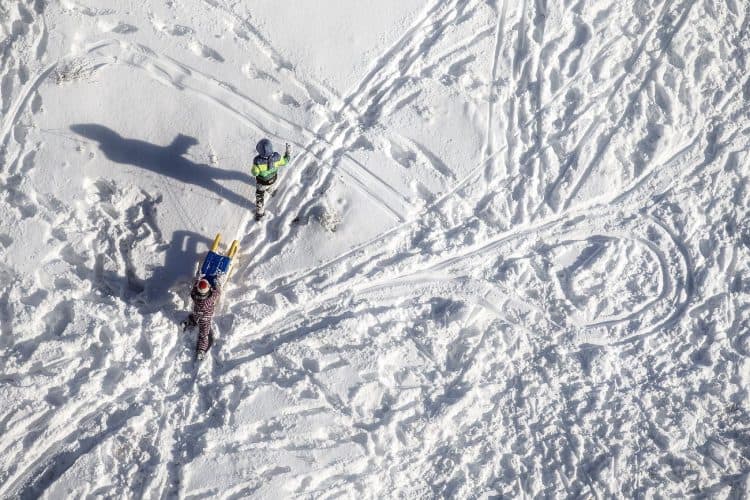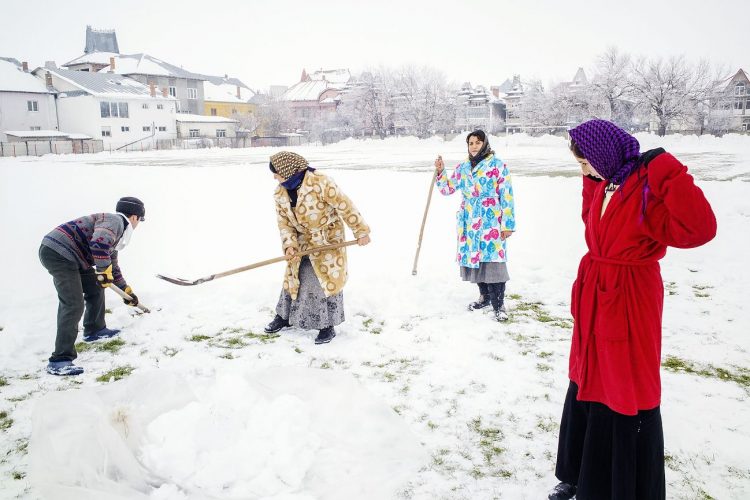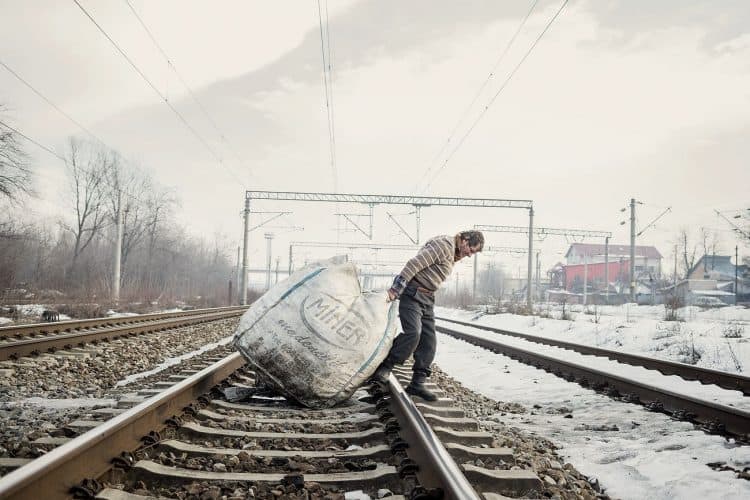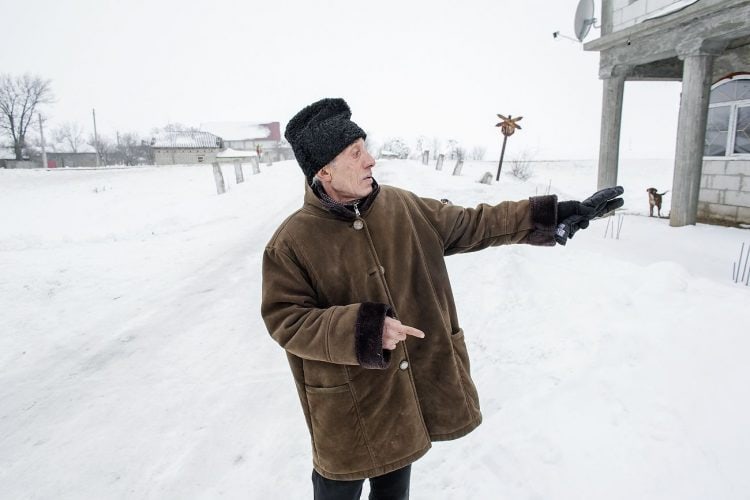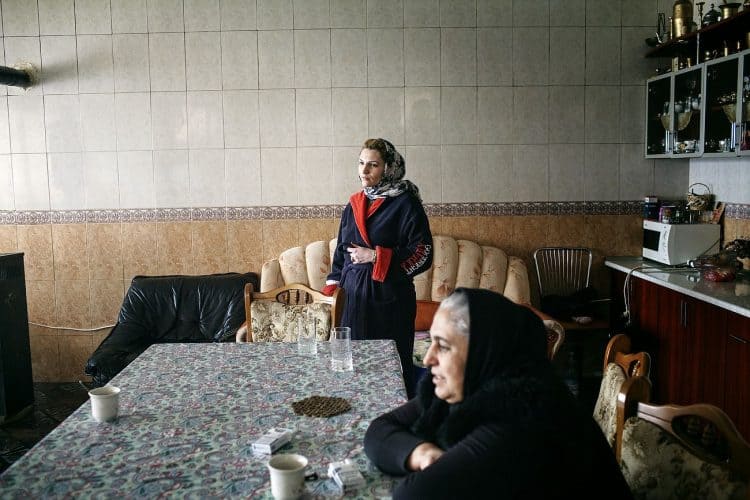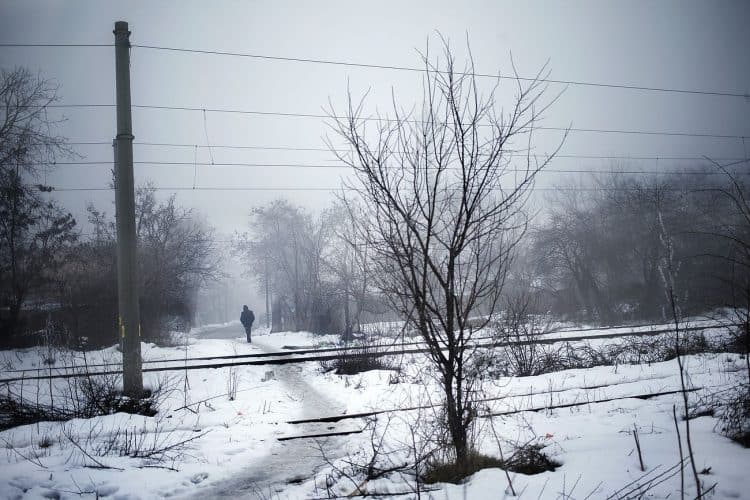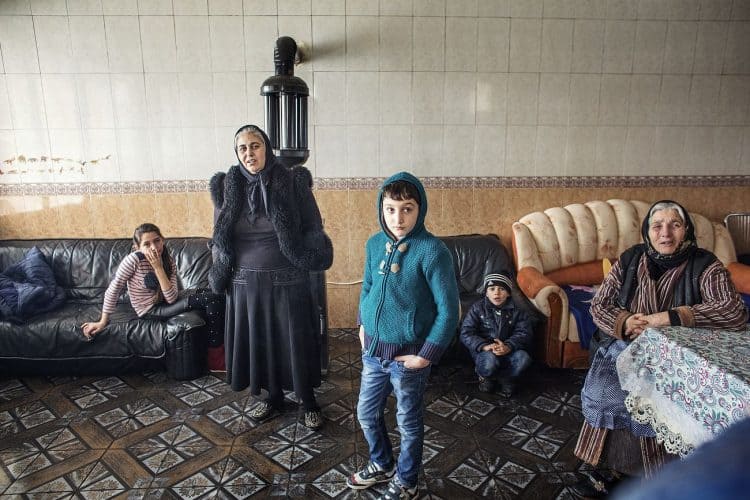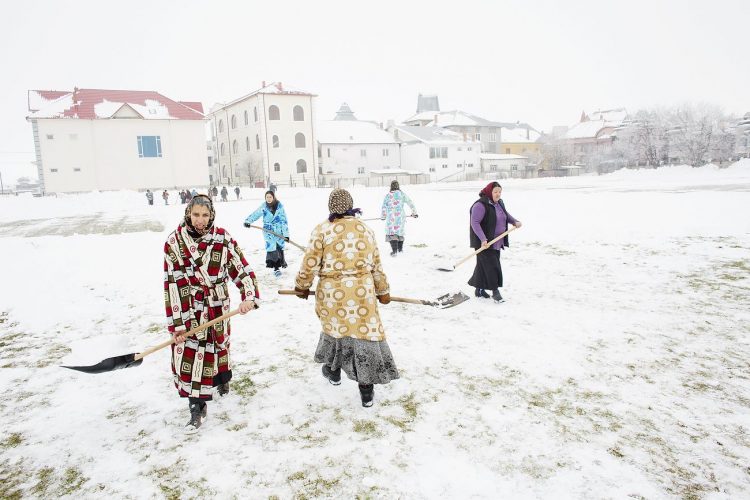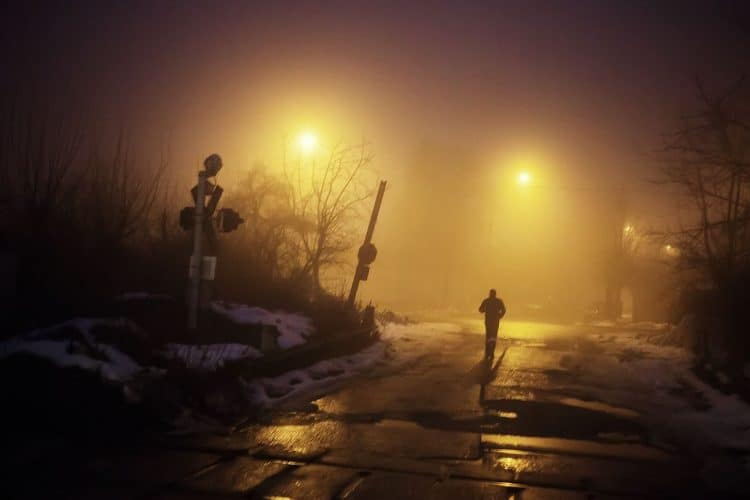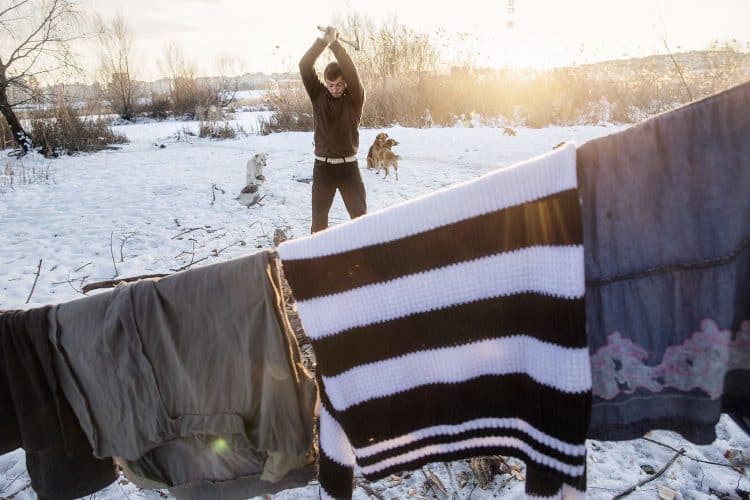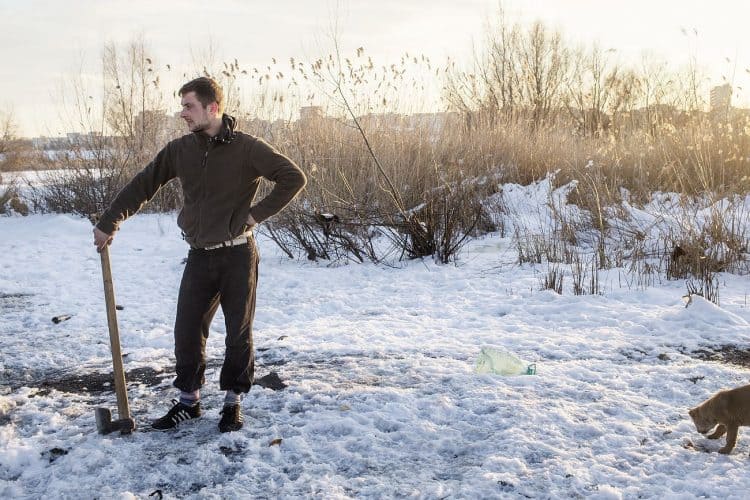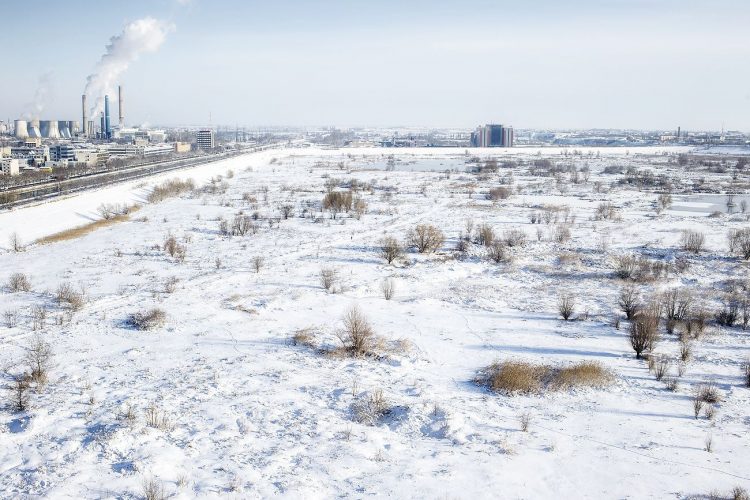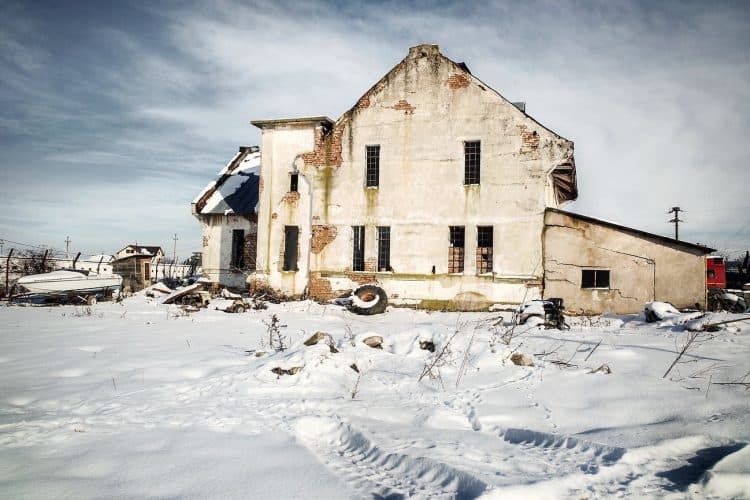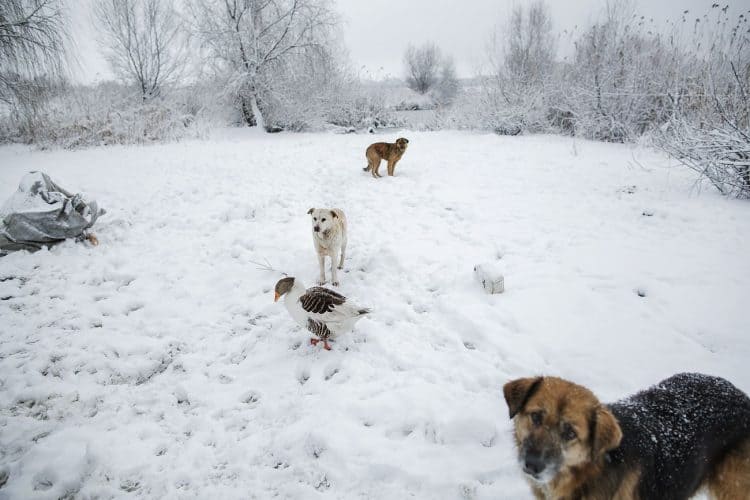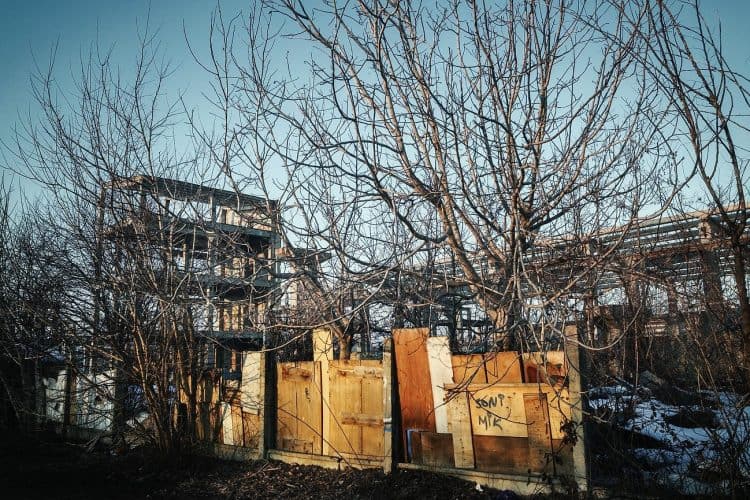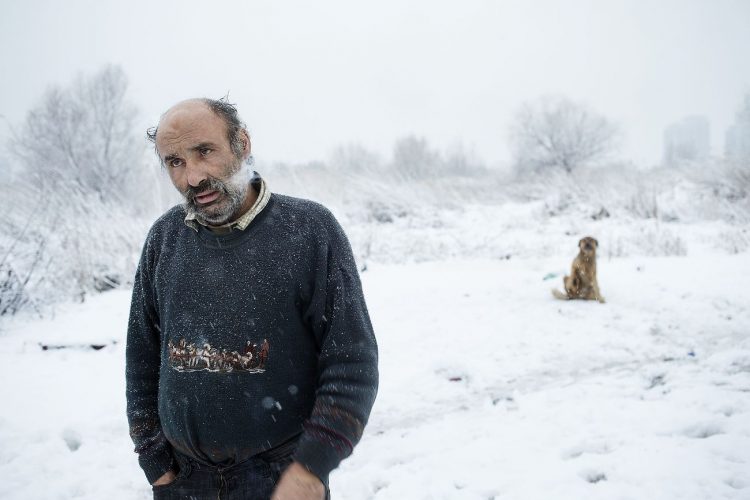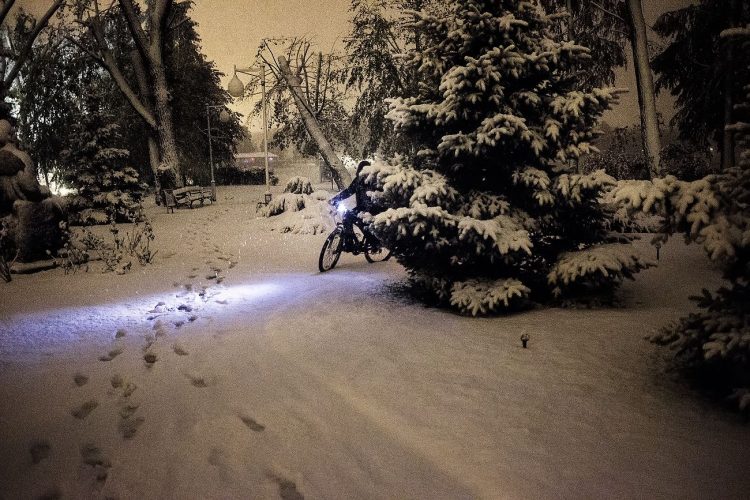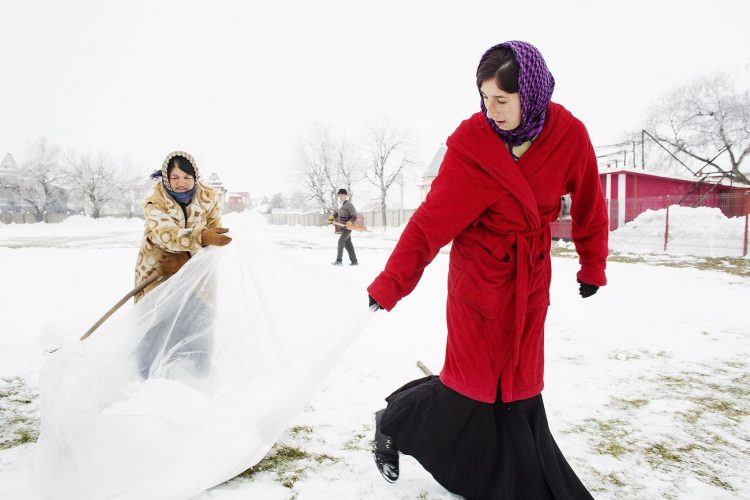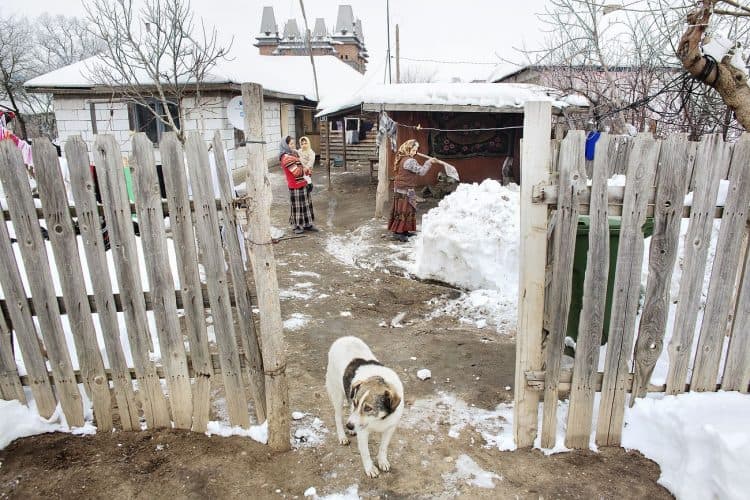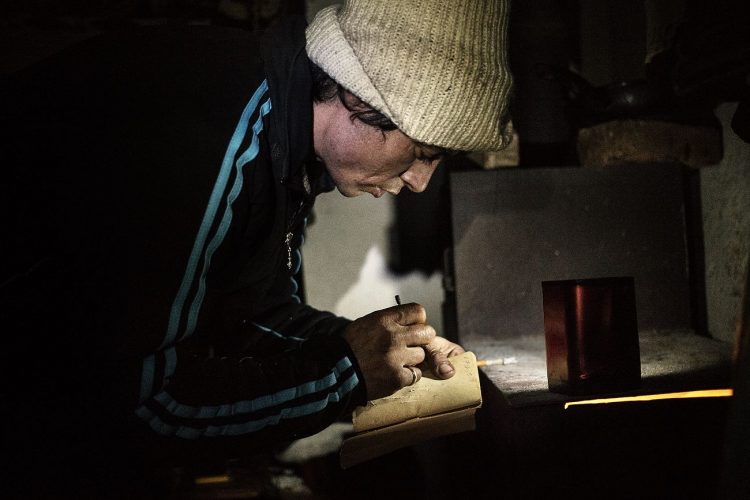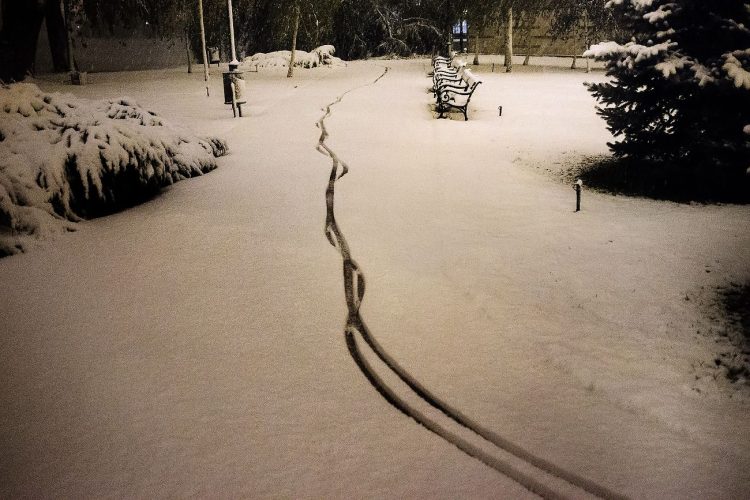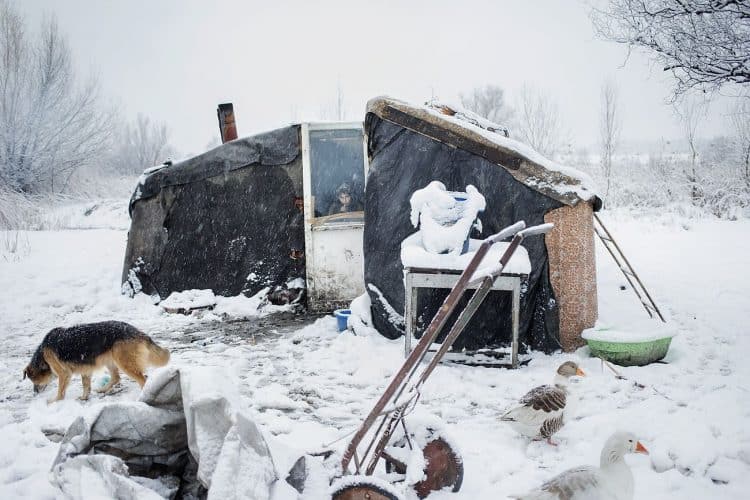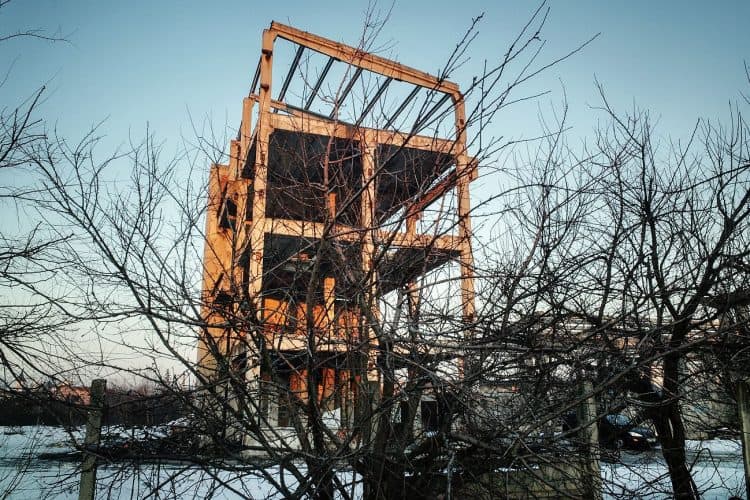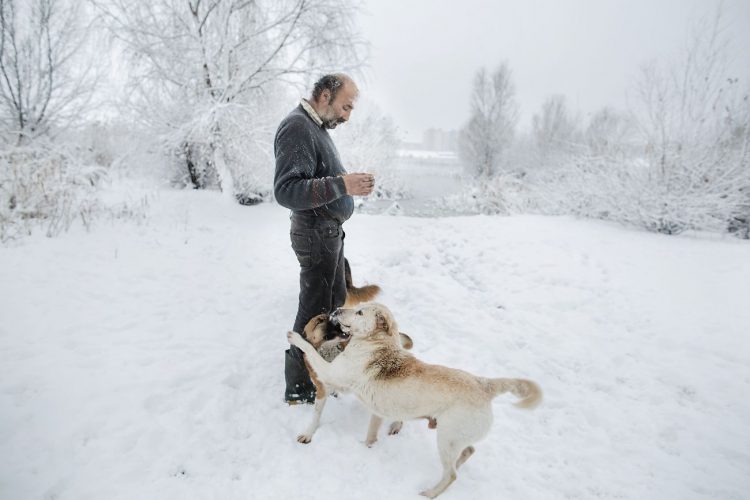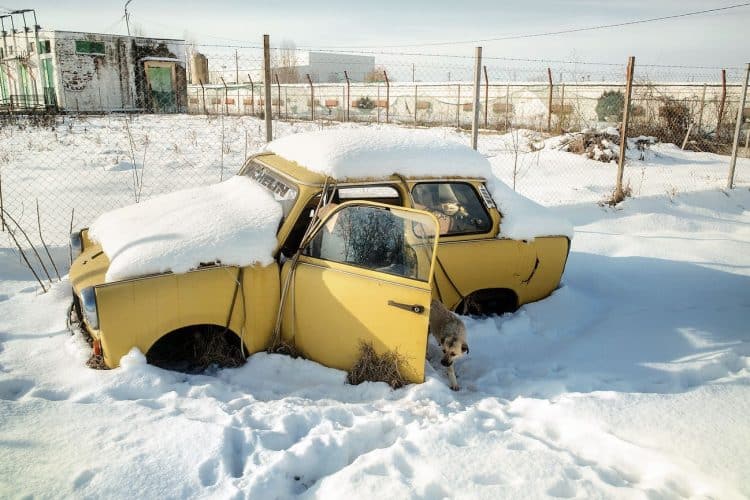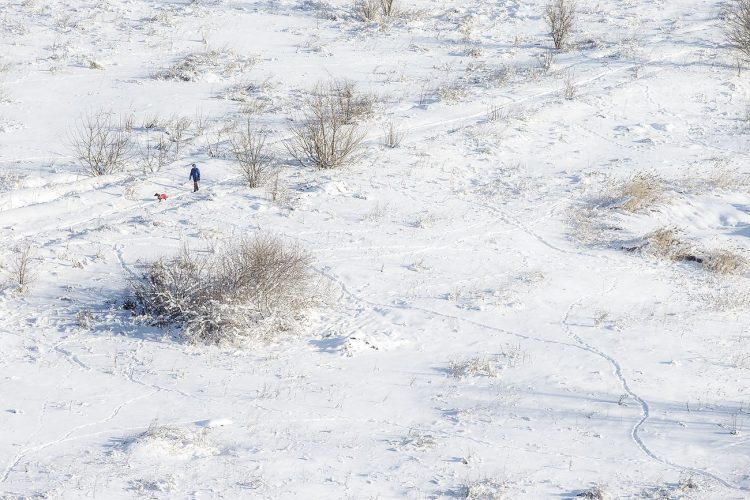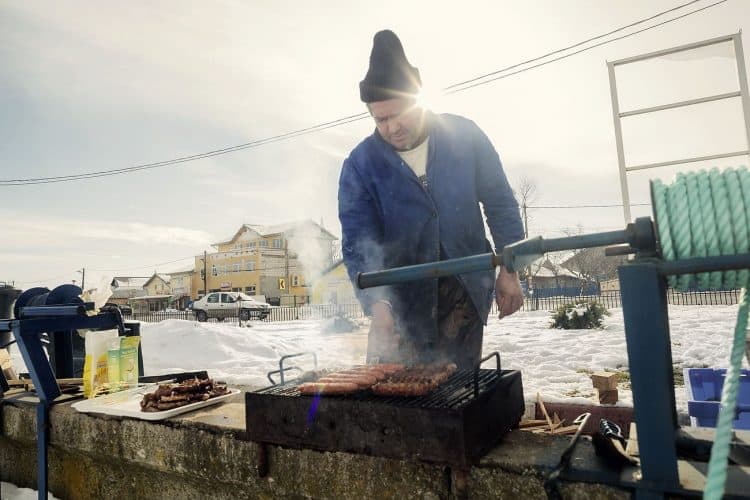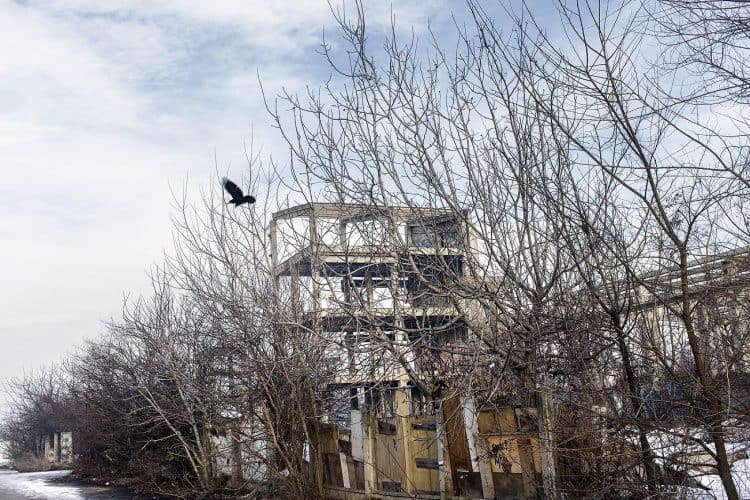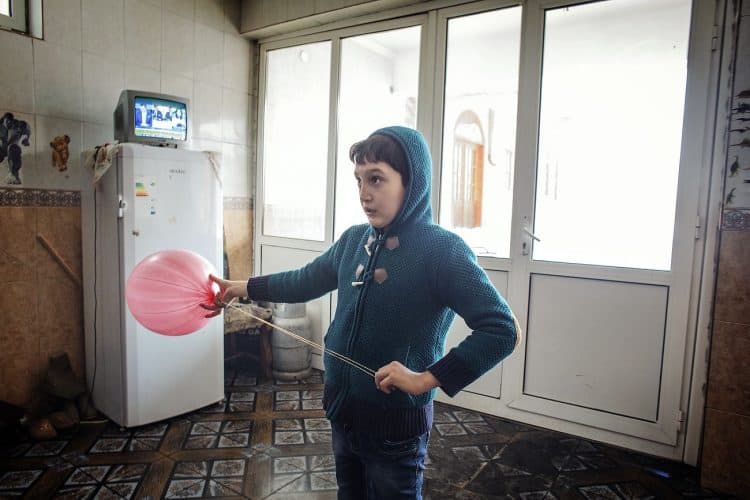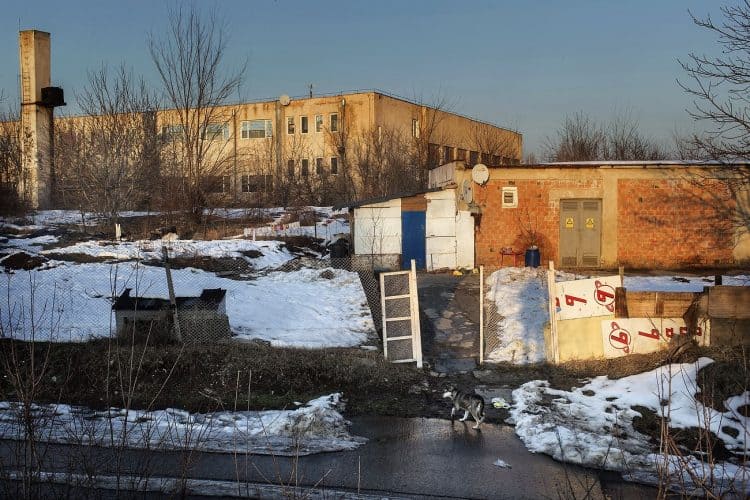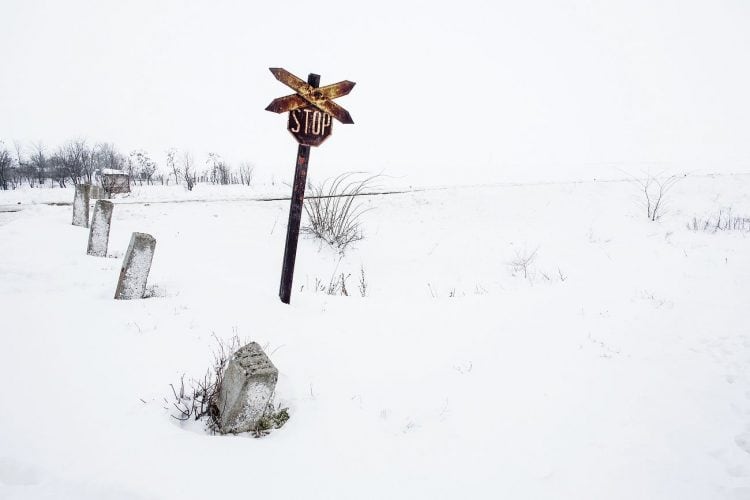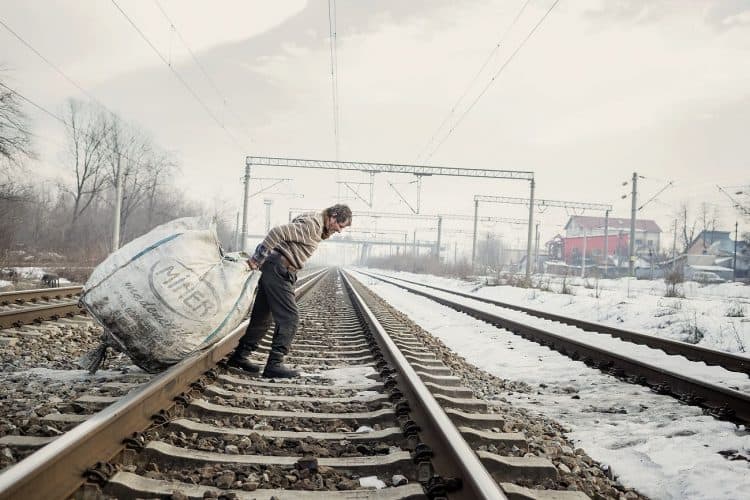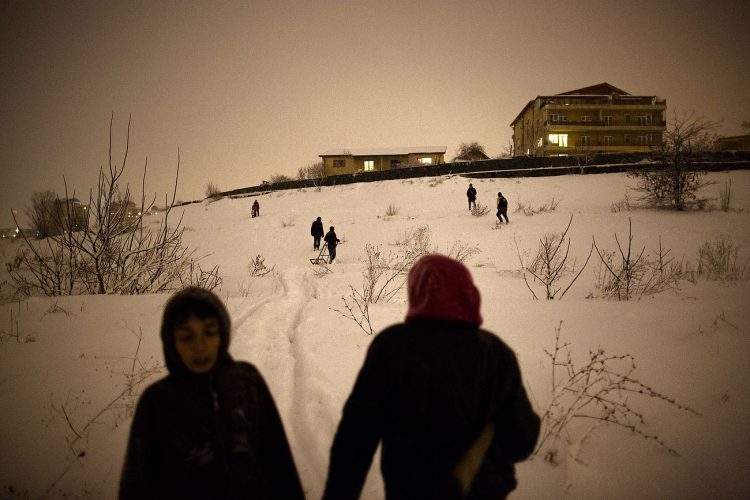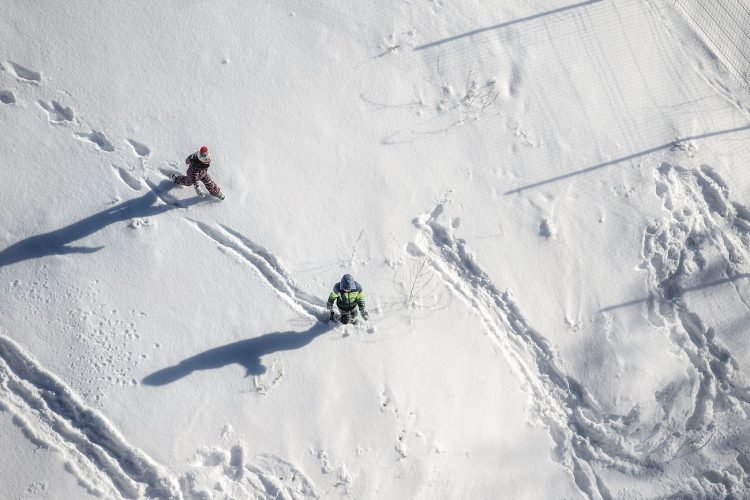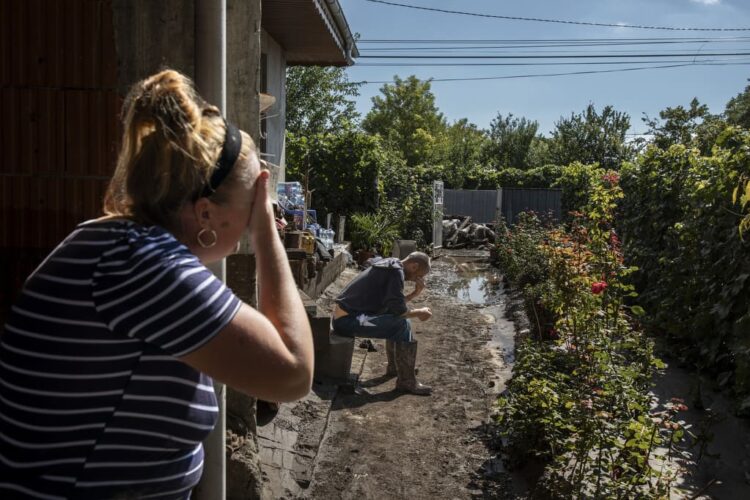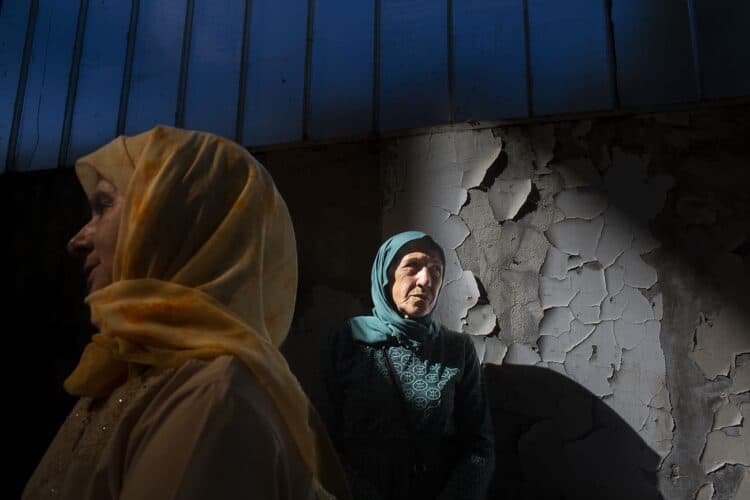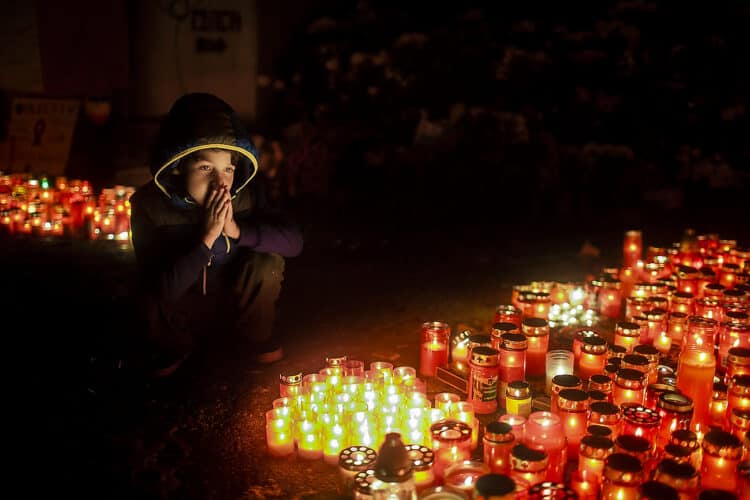
Roma people doing community work to secure social benefits eligibility, in Buzesti on February 6, 2014.
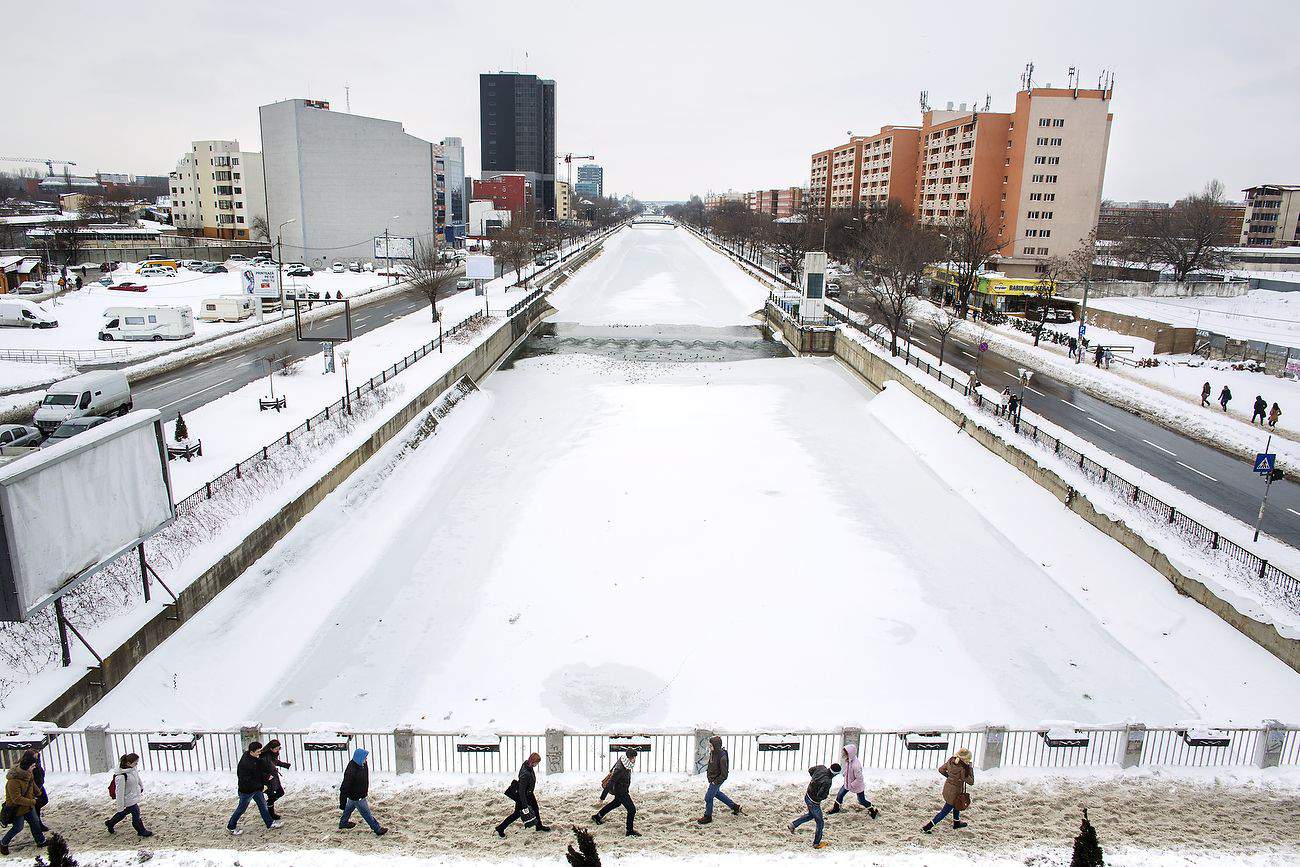
People walking by, near Regie, a university campus in Bucharest on January 30, 2014. Weather forecasters issued a code red severe weather warning as a second wave of blizzards affects the southeastern regions of Romania disrupting road and rail traffic.
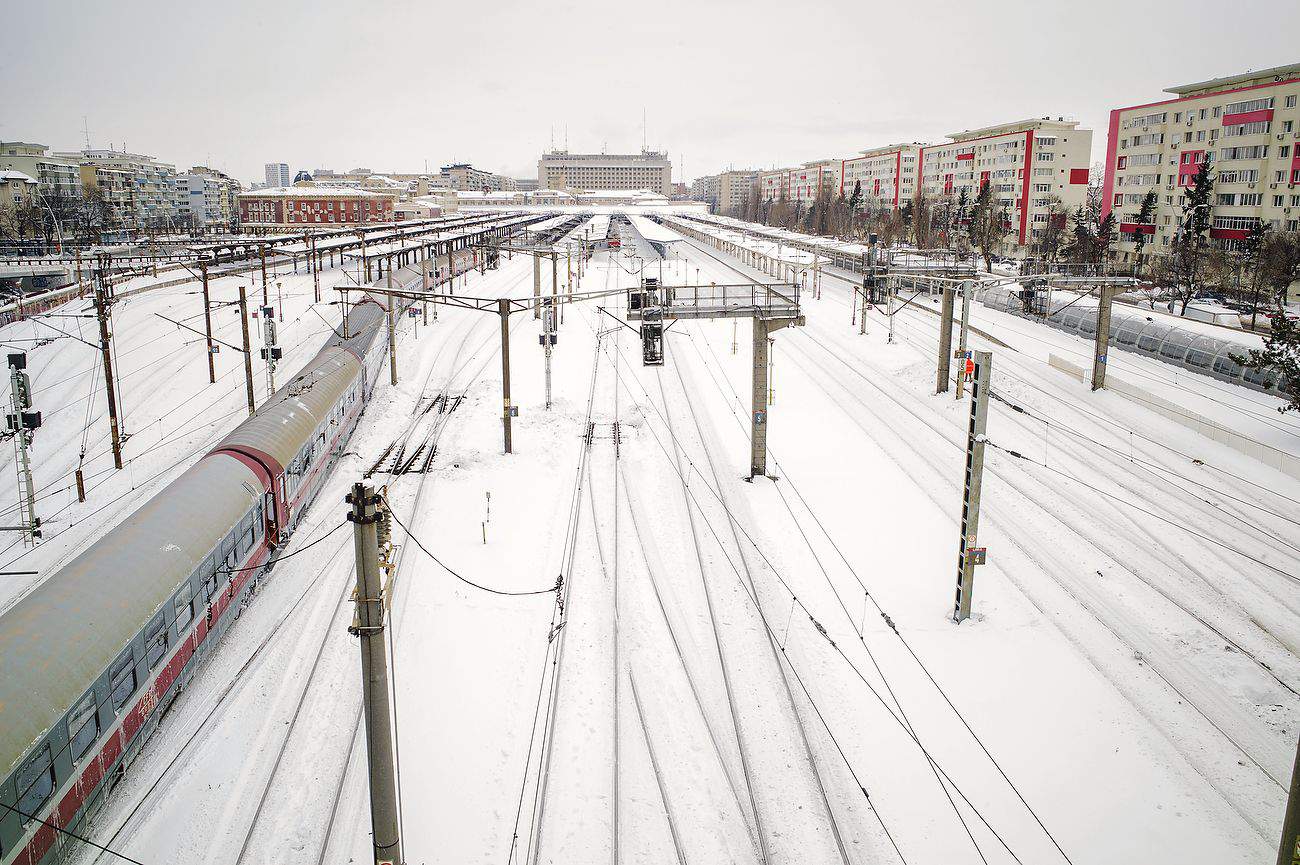
Train pulling into Gara de Nord station, in Bucharest on January 30, 2014. Weather forecasters issued a code red severe weather warning as a second wave of blizzards affects the southeastern regions of Romania disrupting road and rail traffic.

Fishermen in Mihailesti.
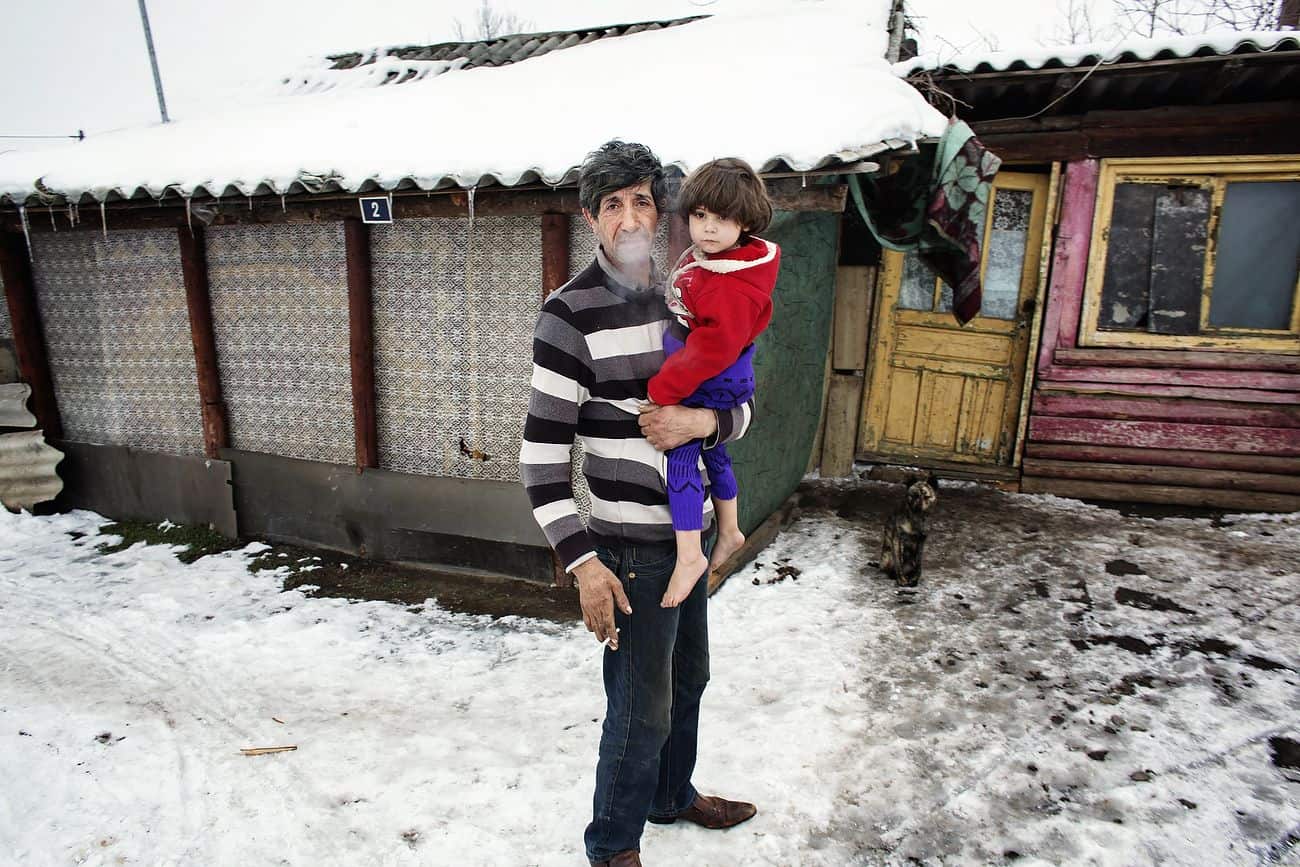
Roma people in Buzesti on February 6, 2014.
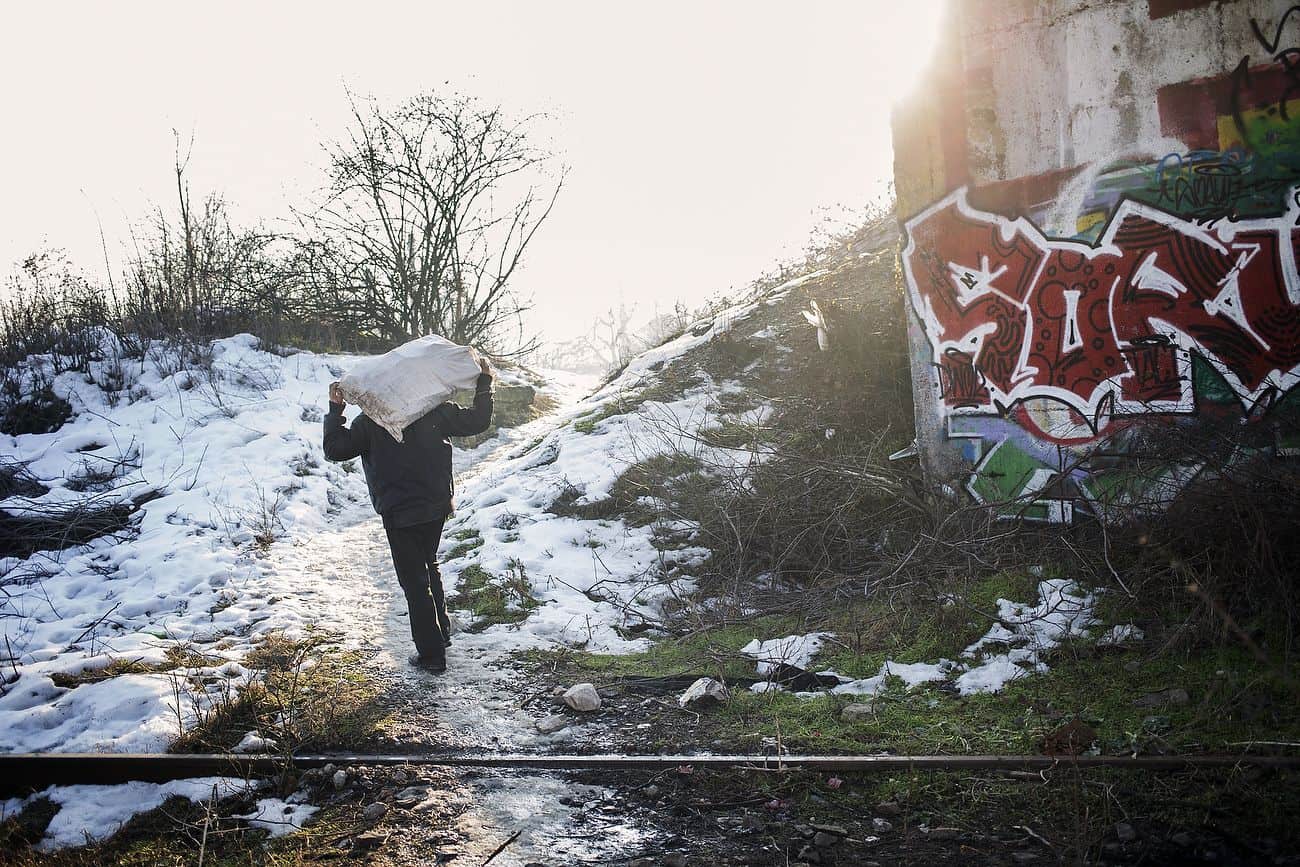
Man in Chitila.

Roma people as seen inside Vacaresti pit in Bucharest on December 31, 2014. During Ceausescu regime the Vacaresti area, which was accommodating a 17th century monastery and a district of houses with big gardens, was demolished in order to build a lake. Since the works were abandoned in 1988 nothing has been done here. In the presence of surfaced underground springs and plenty of time, mother nature has shape shifted the pit into a green oasis with delta like particularities where a variety of flora and fauna have blossomed. Starting 15 years ago many poor families, mainly Roma, have found shelter in the pit since the land property is still in dispute between the state and the former owners of the demolished houses. They all live in improvised shacks made from scraps they gather in the neighborhood. Those people are most resourceful when it comes to improvisation of what actually constitutes their life.
It seems that soon enough also the last three families will leave the area and move out while the pit would remain open to its next challenge as a natural park.

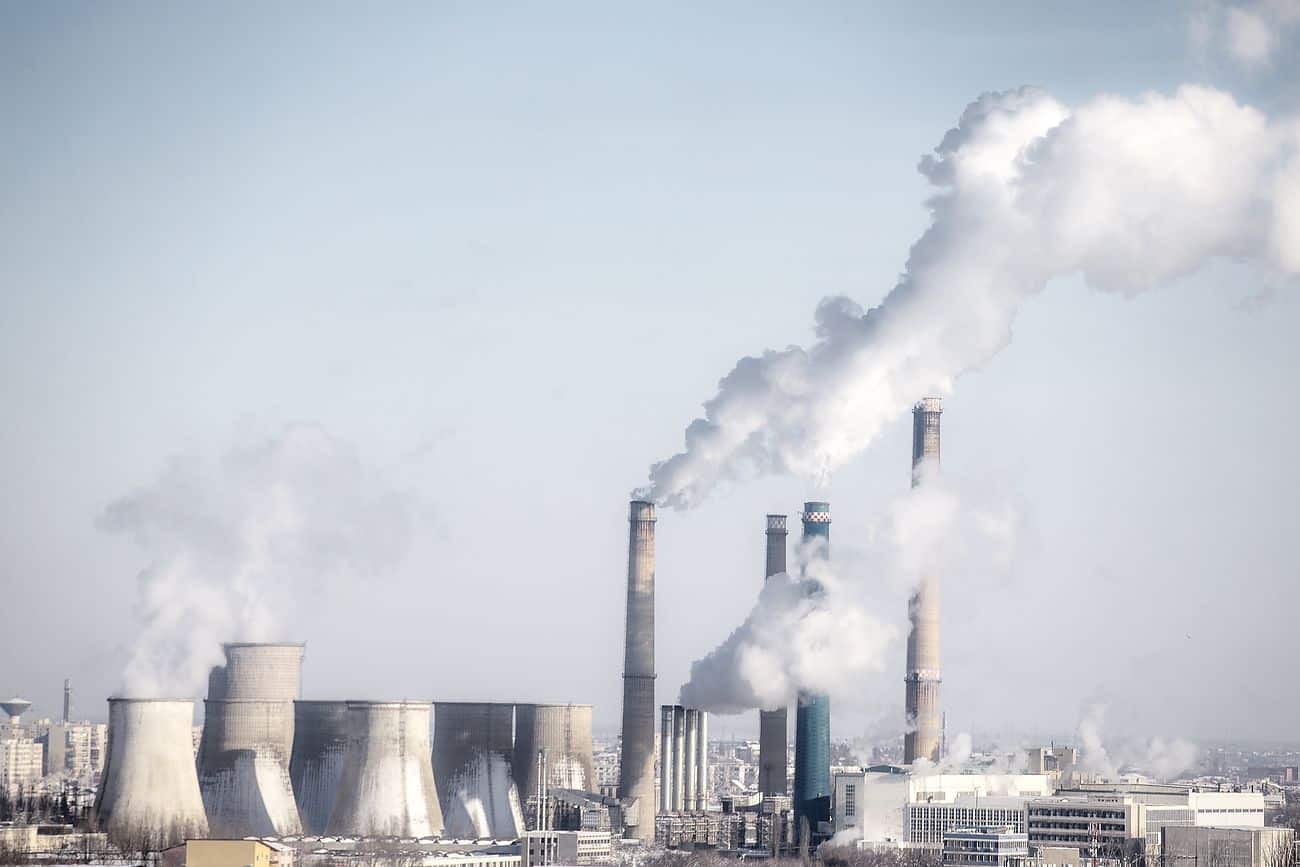
CET Sud powerstation in Bucuresti.
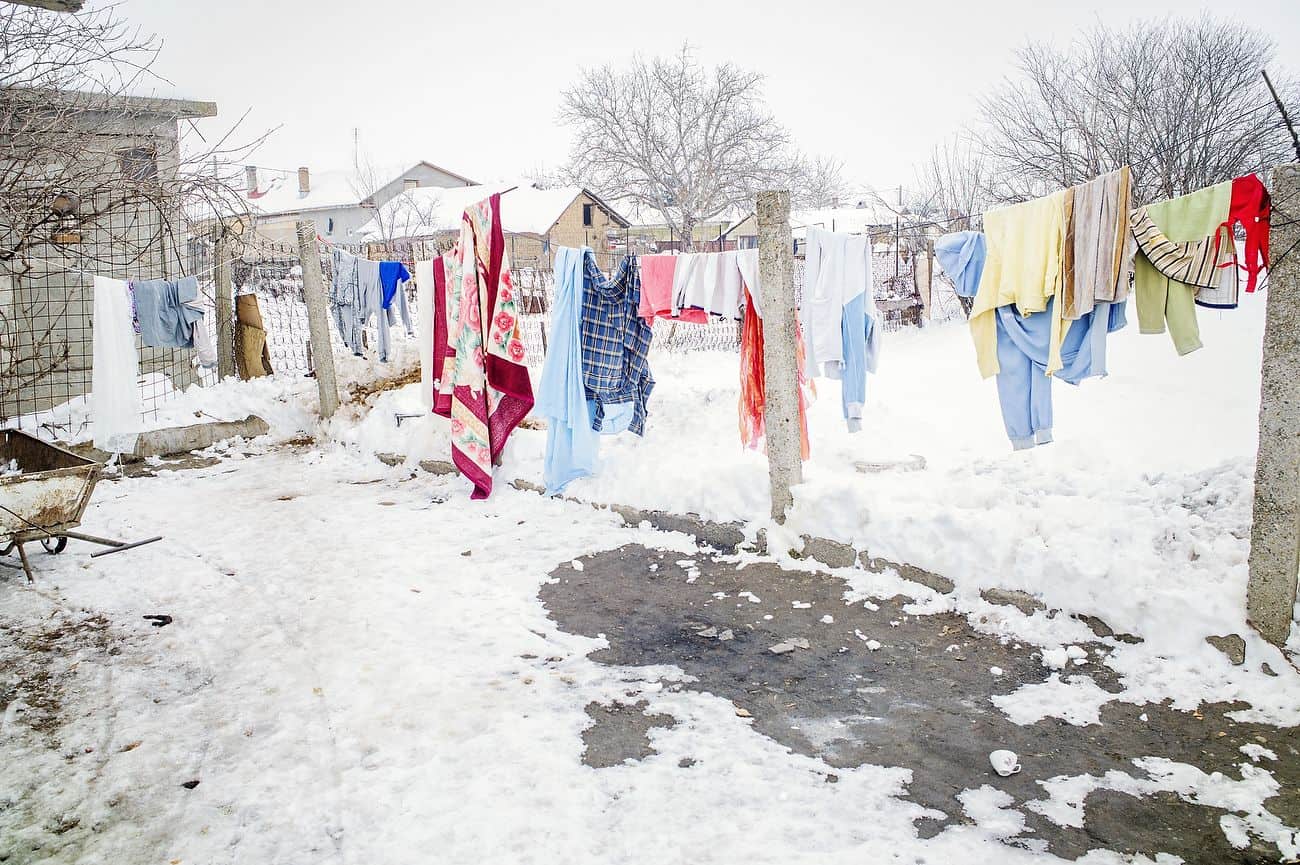
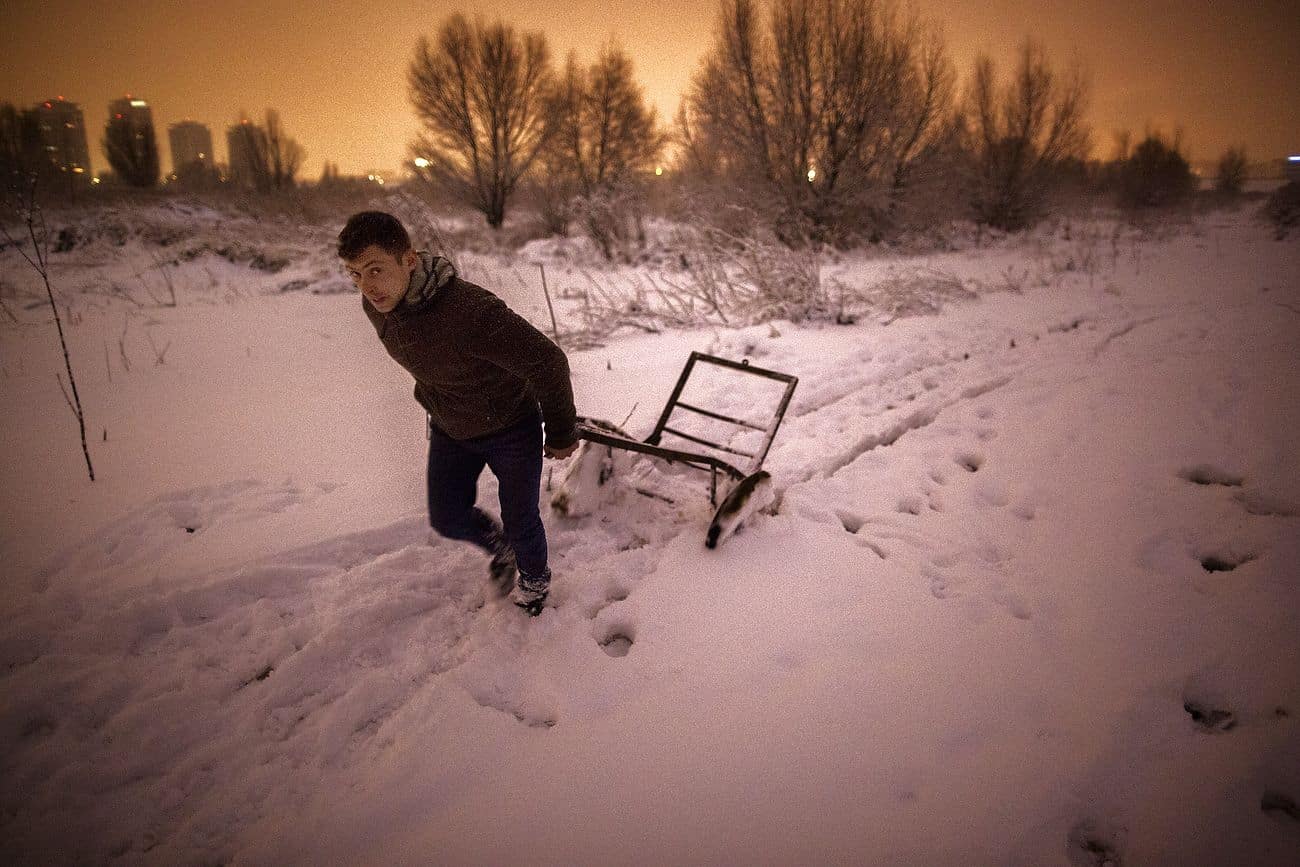
Roma man pulling a trolley as seen inside Vacaresti pit in Bucharest on December 29, 2014. During Ceausescu regime the Vacaresti area, which was accommodating a 17th century monastery and a district of houses with big gardens, was demolished in order to build a lake. Since the works were abandoned in Õ88 nothing has been done here. In the presence of surfaced underground springs and plenty of time, mother nature has shape shifted the pit into a green oasis with delta like particularities where a variety of flora and fauna have blossomed. Starting 15 years ago many poor families, mainly Roma, have found shelter in the pit since the land property is still in dispute between the state and the former owners of the demolished houses. They all live in improvised shacks made from scraps they gather in the neighborhood. Those people are most resourceful when it comes to improvisation of what actually constitutes their life.
It seems that soon enough also the last three families will leave the area and move out while the pit would remain open to its next challenge Ð a natural park.
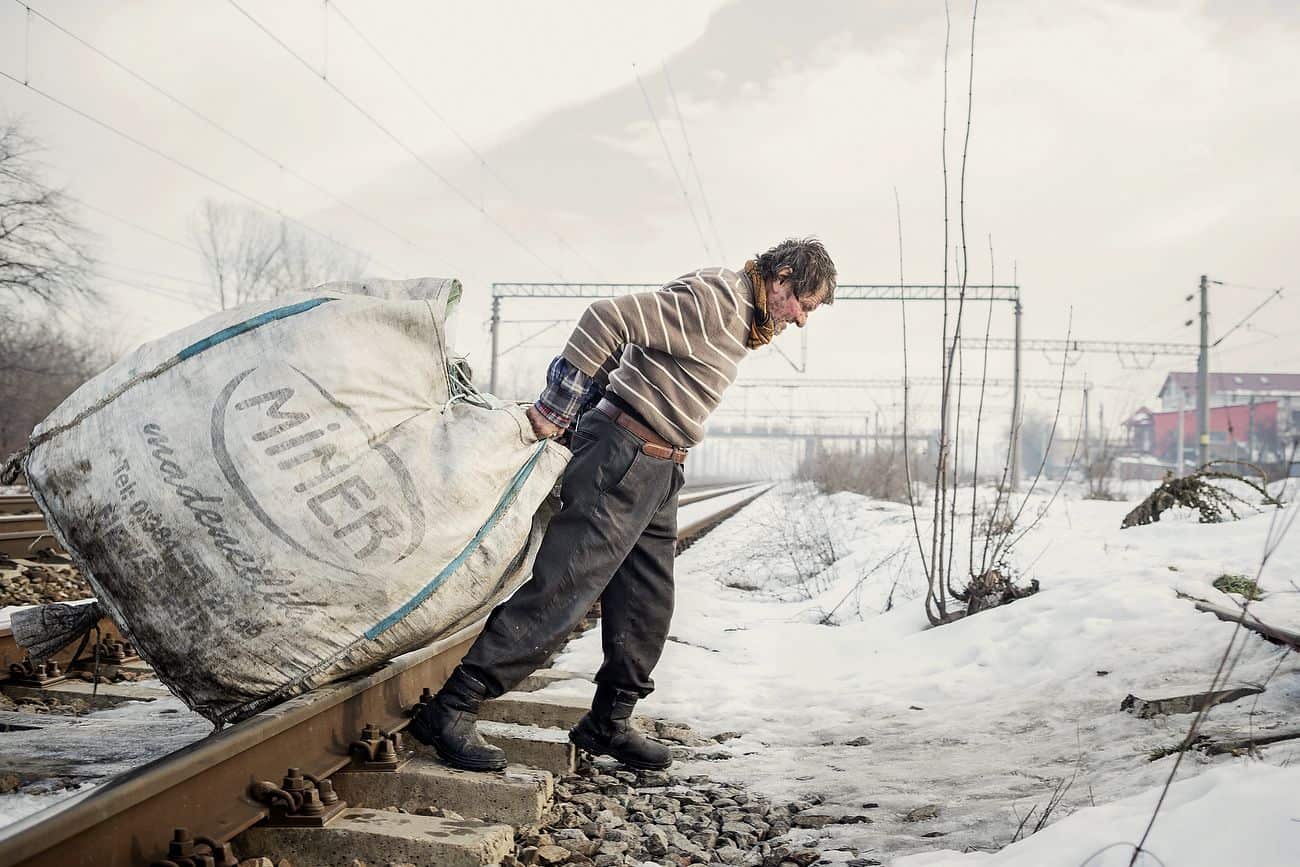
Man in Chitila.

Roma people in Buzesti on February 6, 2014.
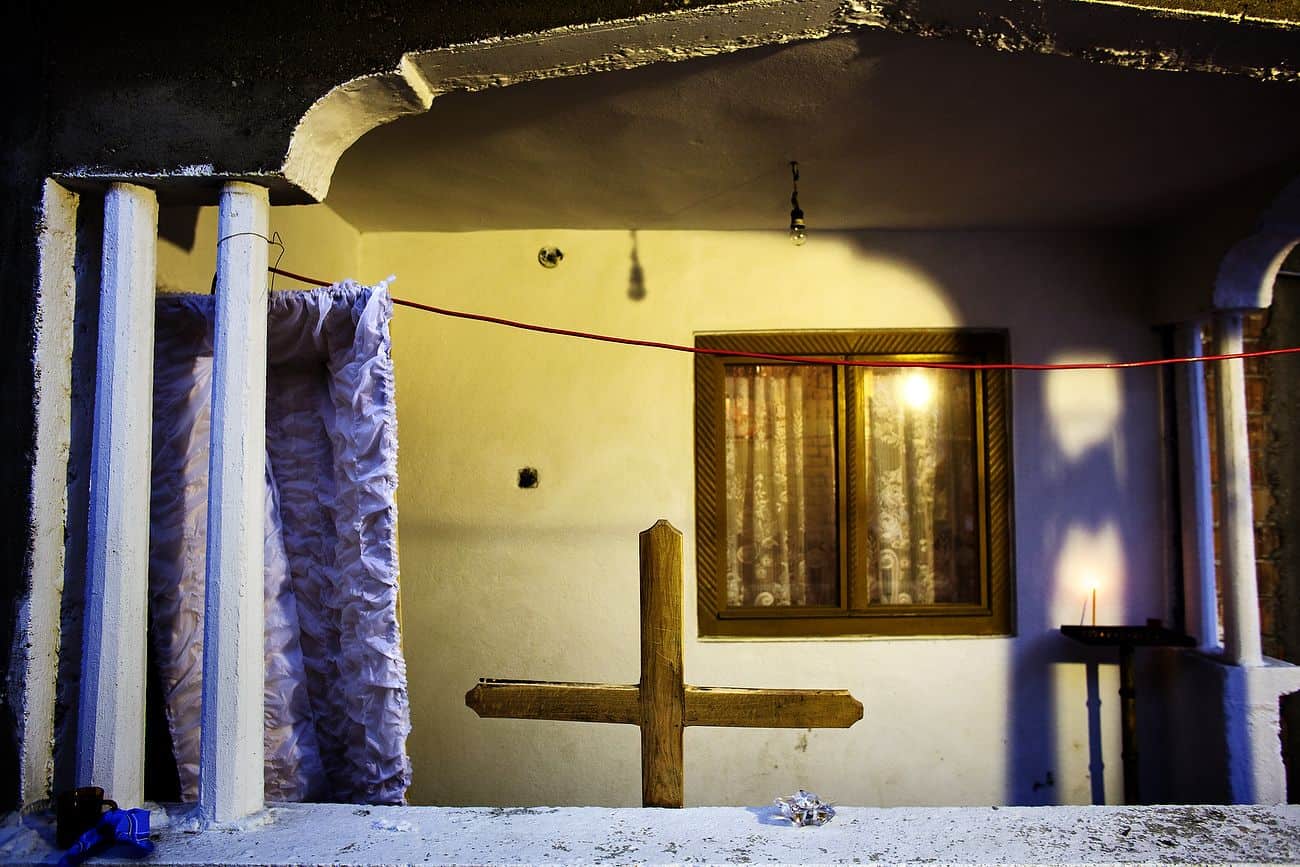
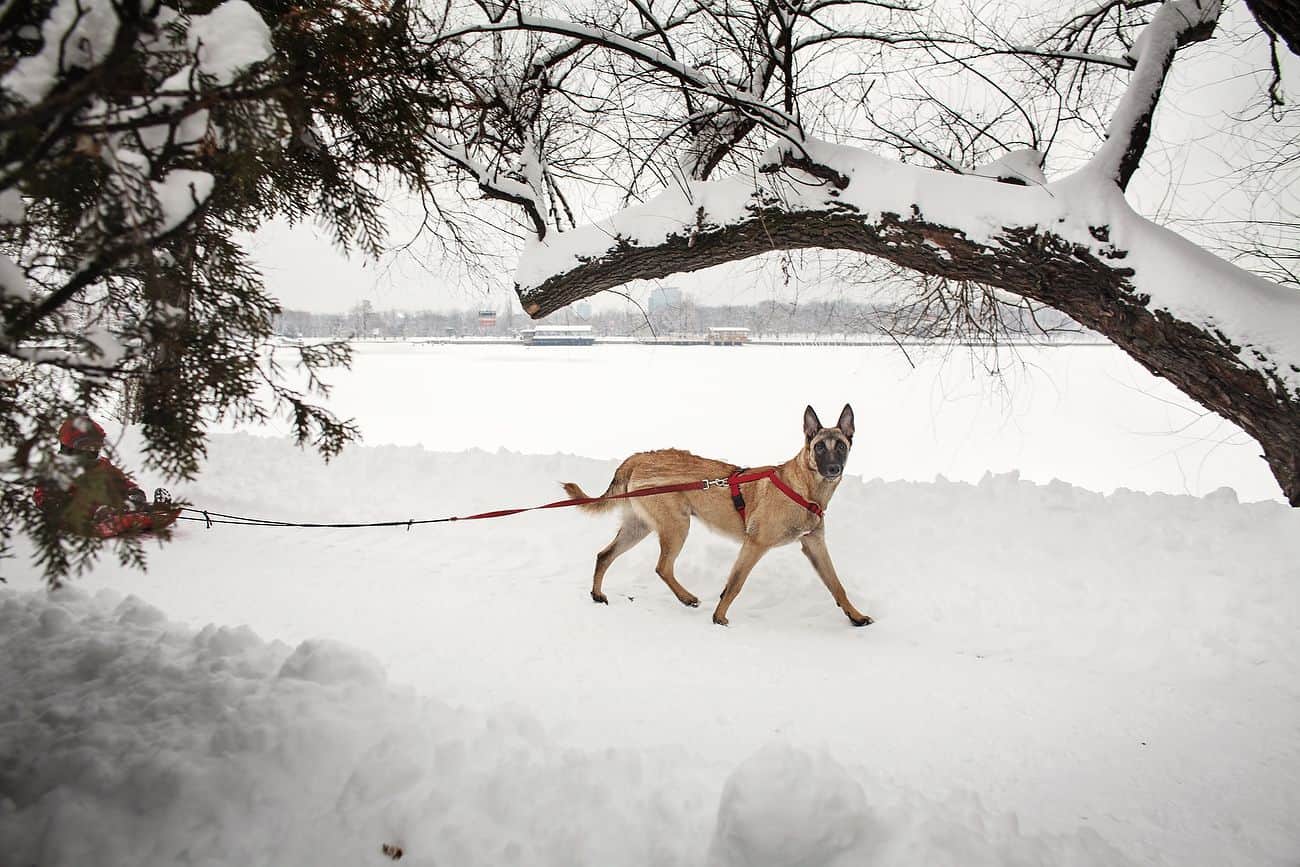
Dog pulling a sledge, as seen in Bucharest near Herastrau Lake on January 27, 2014. Weather forecasters issued a code red severe weather warning as a second wave of blizzards affects the southeastern regions of Romania disrupting road and rail traffic.
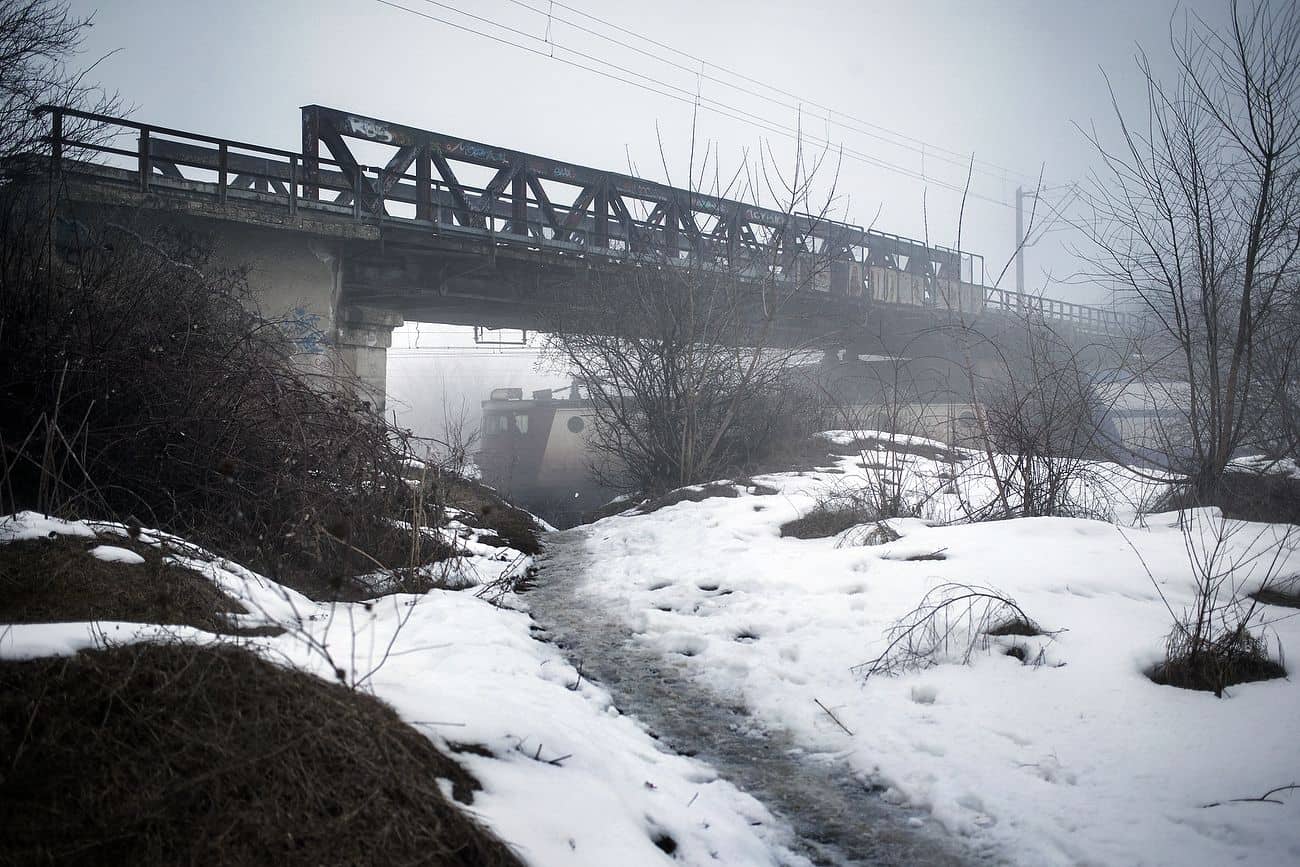

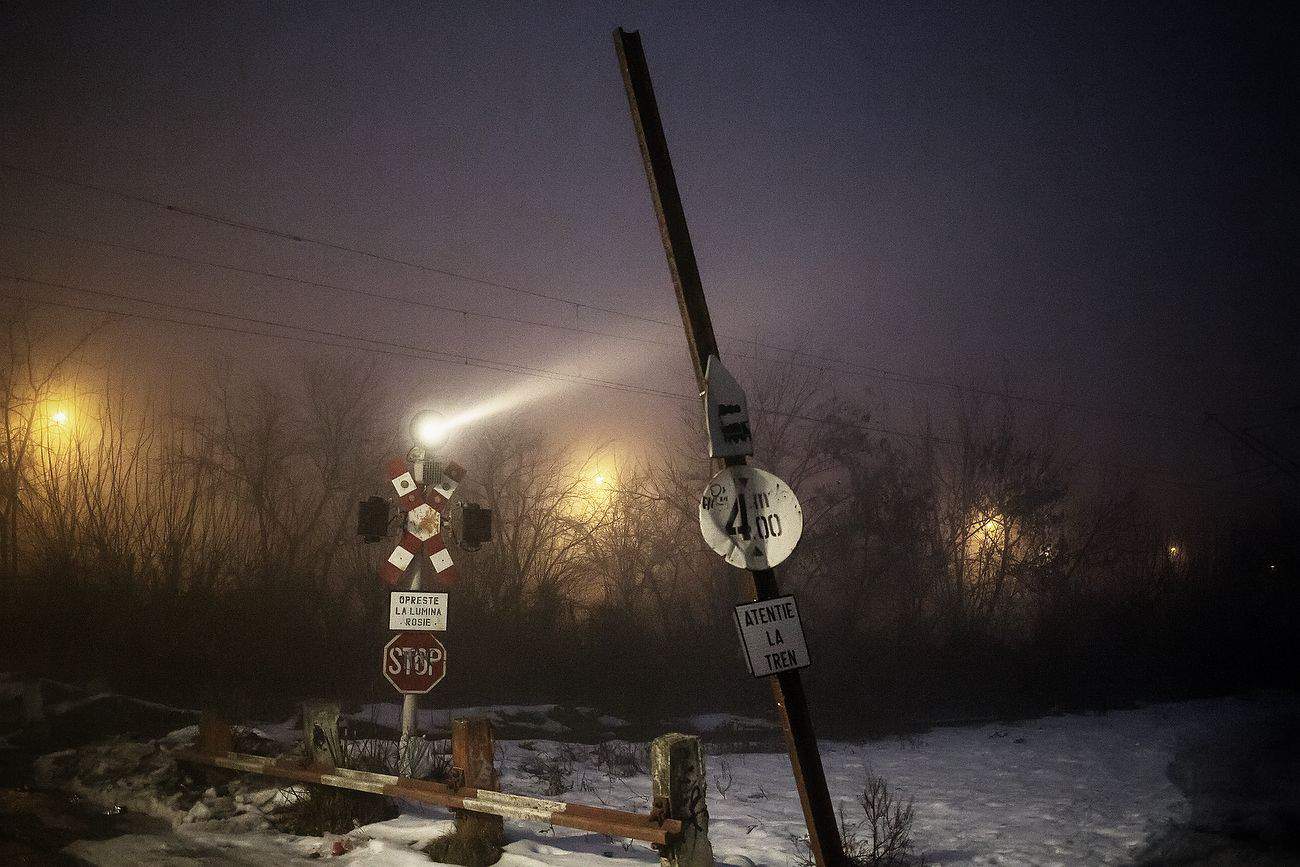
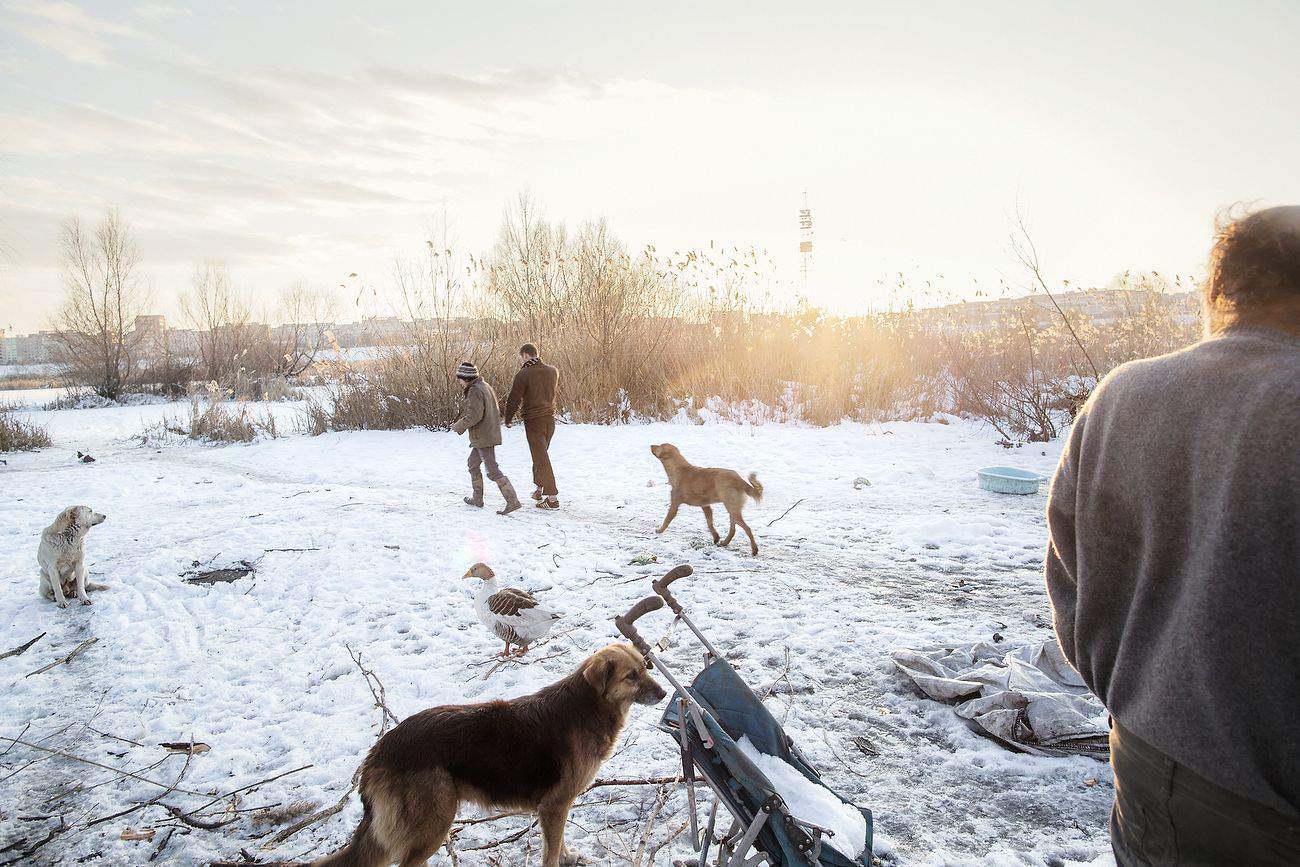
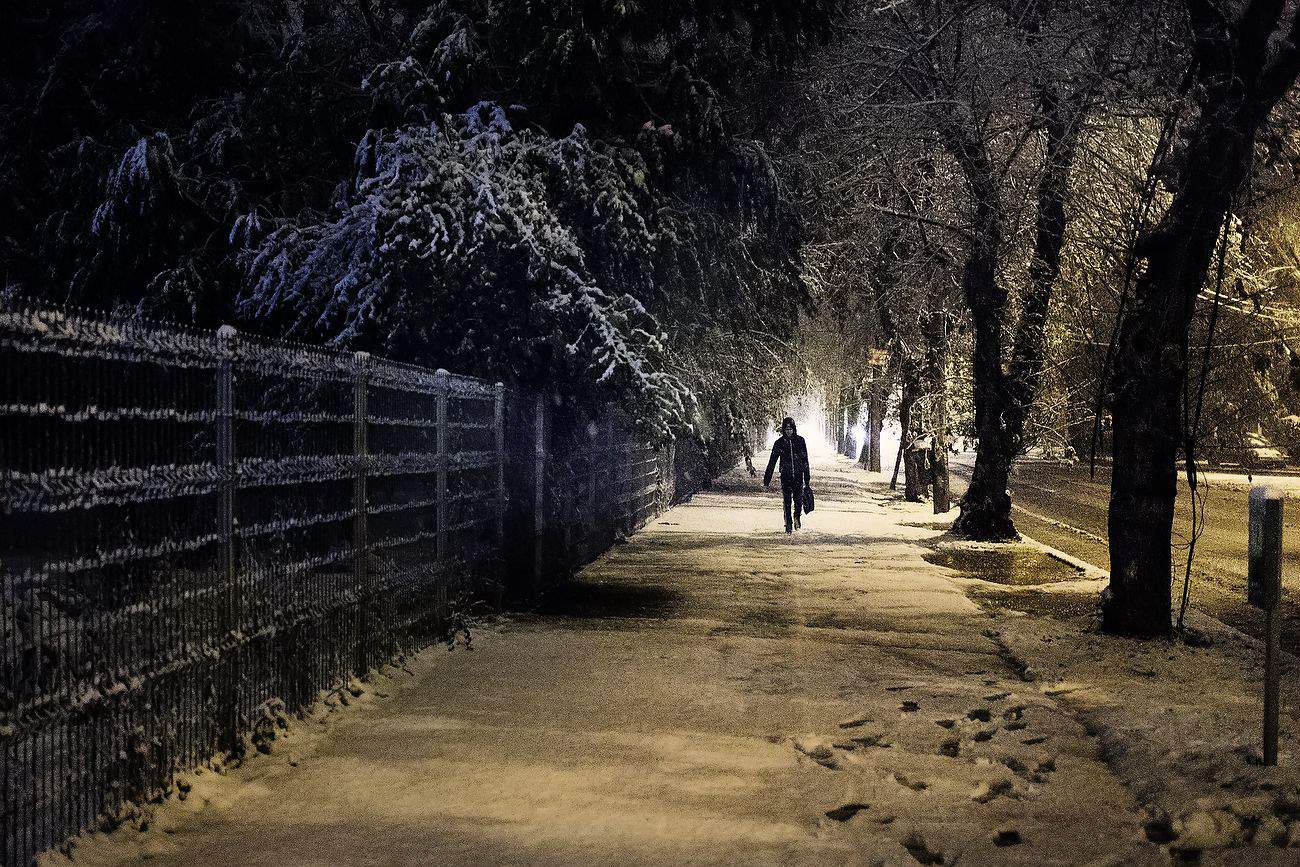
First snowfall of 2014, as seen in Bucharest on October 25, 2014.
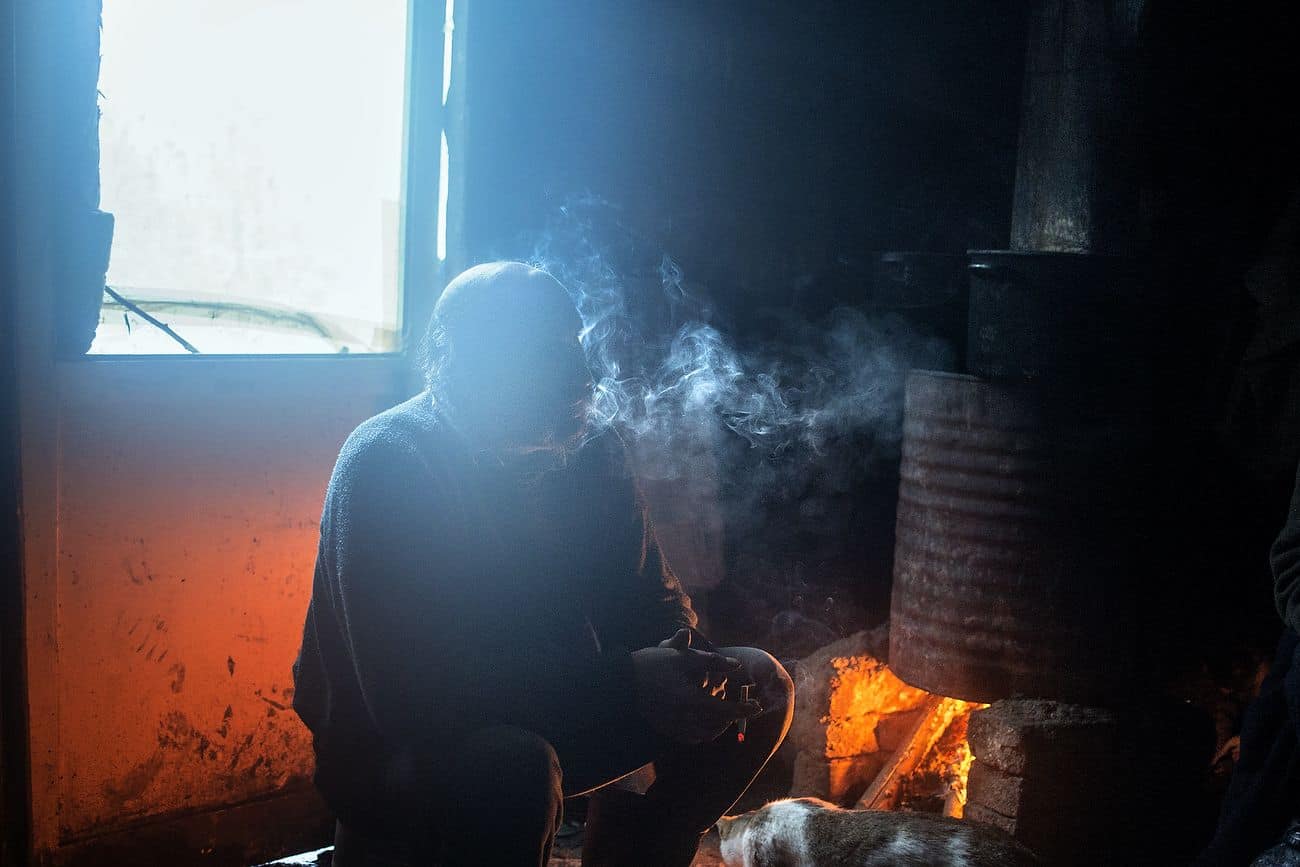
Roma man smoking inside a ramshackle dwelling inside Vacaresti pit in Bucharest on December 29, 2014.
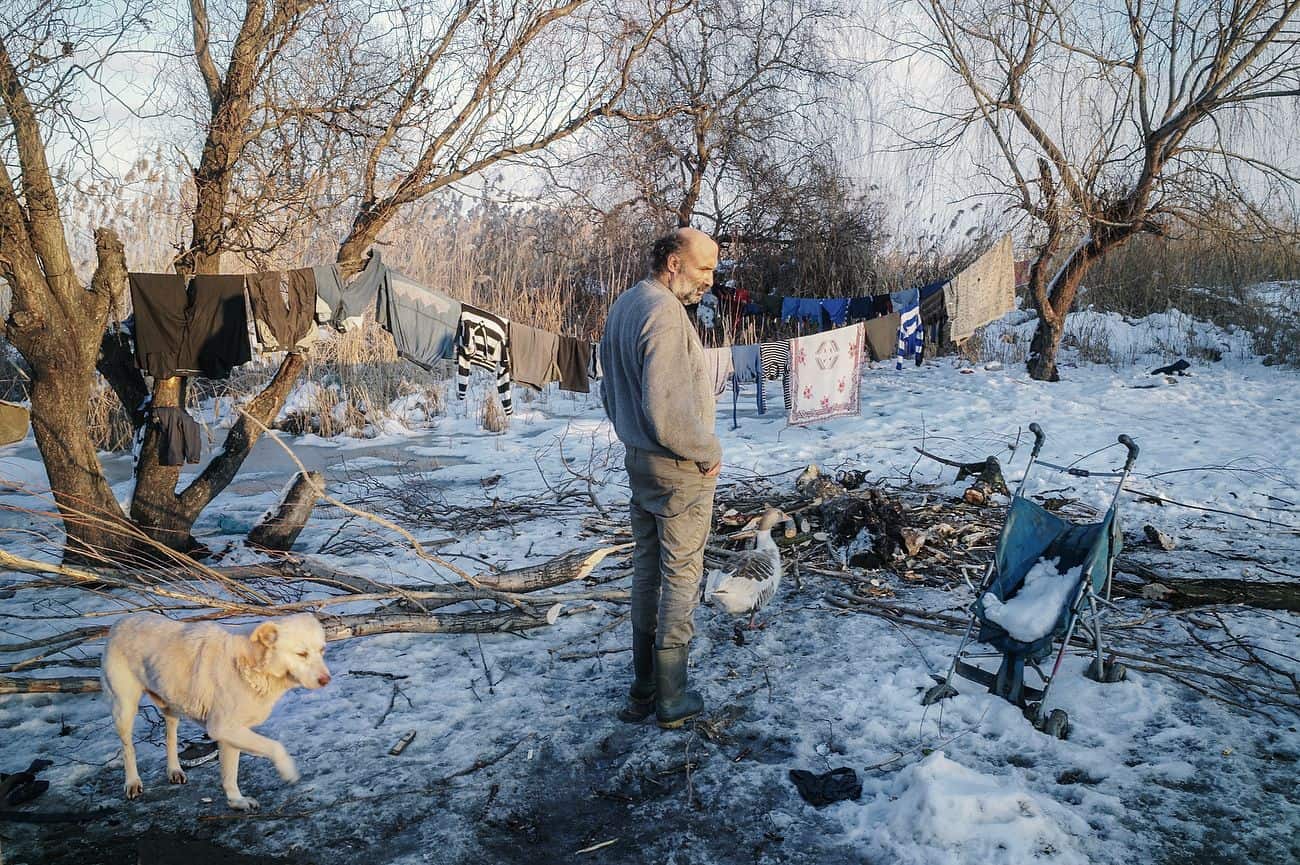

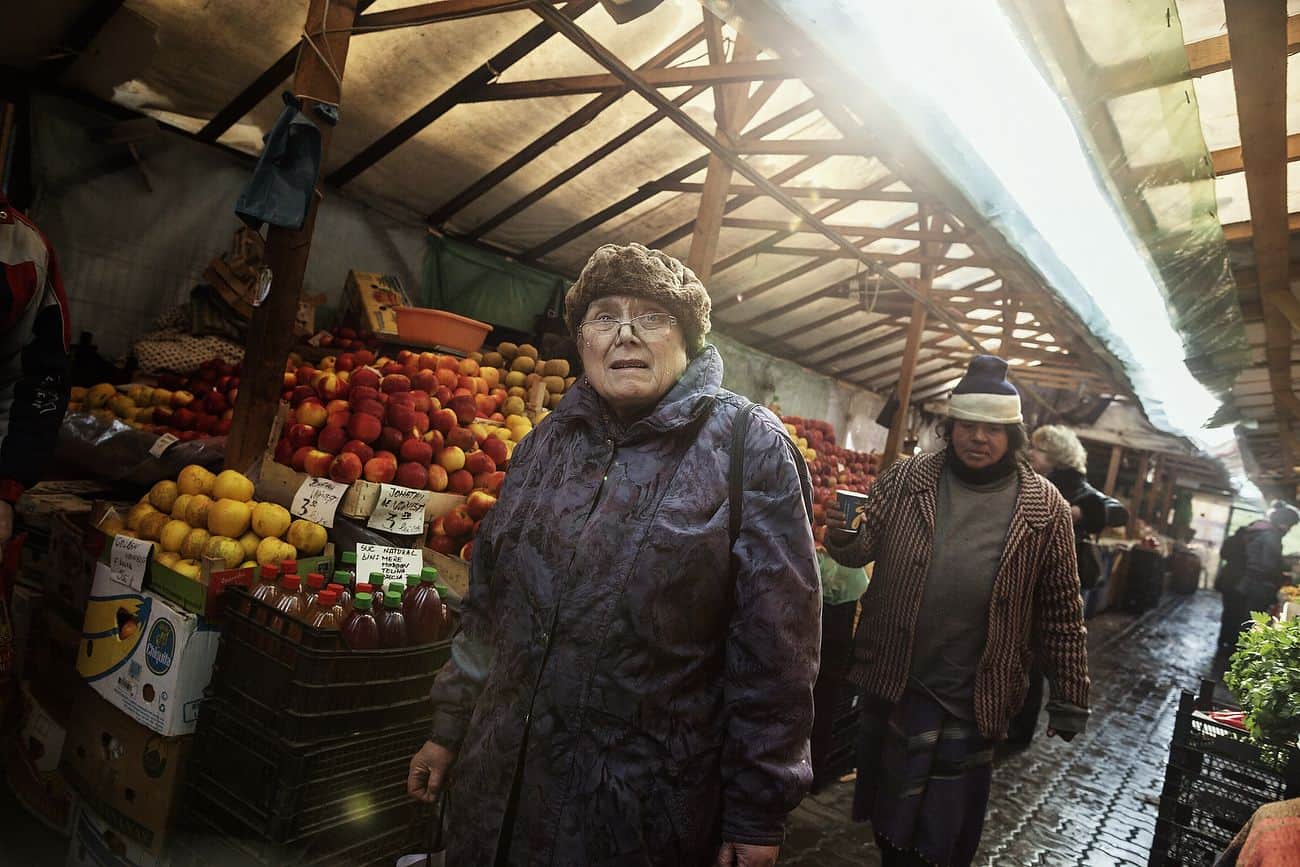

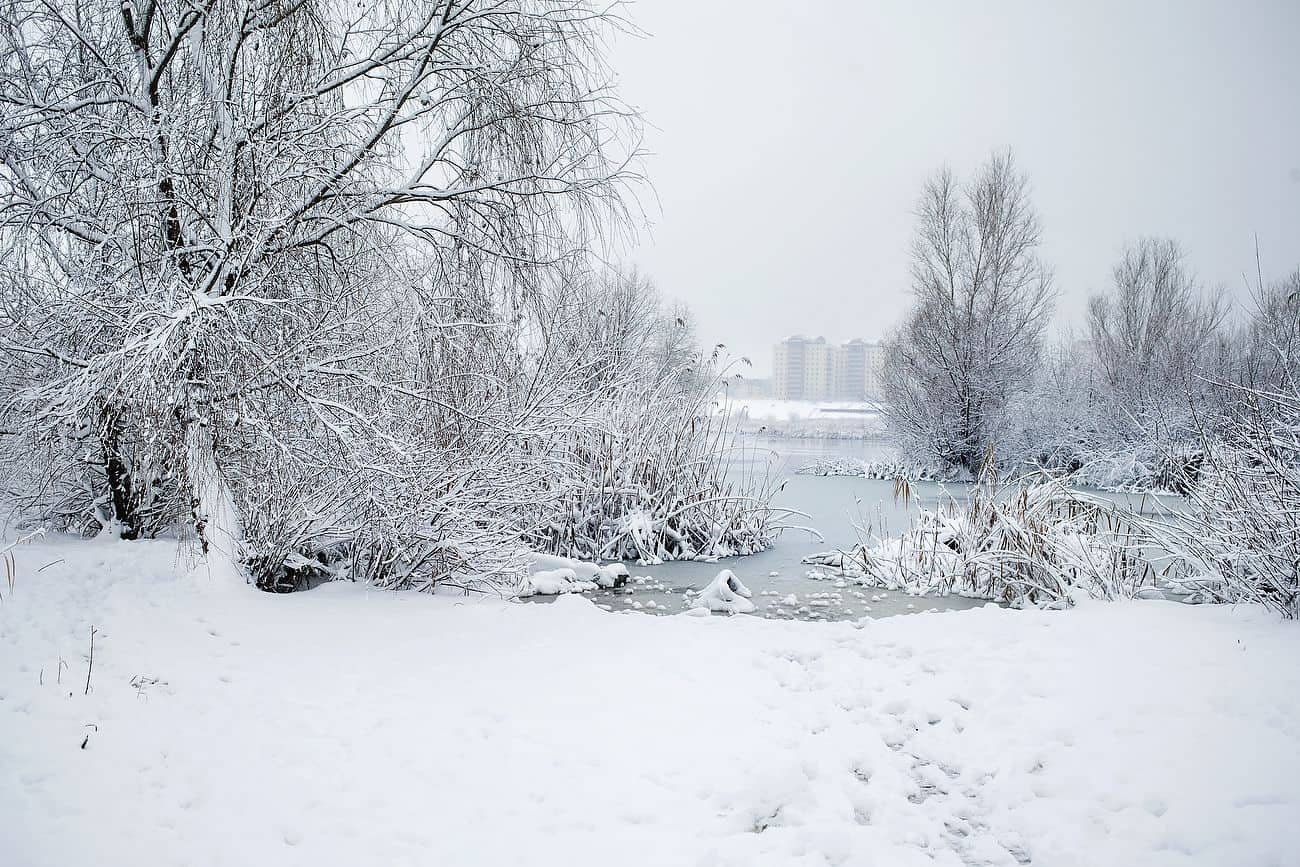
General view of the Vacaresti pit as seen in Bucharest on December 29, 2014.
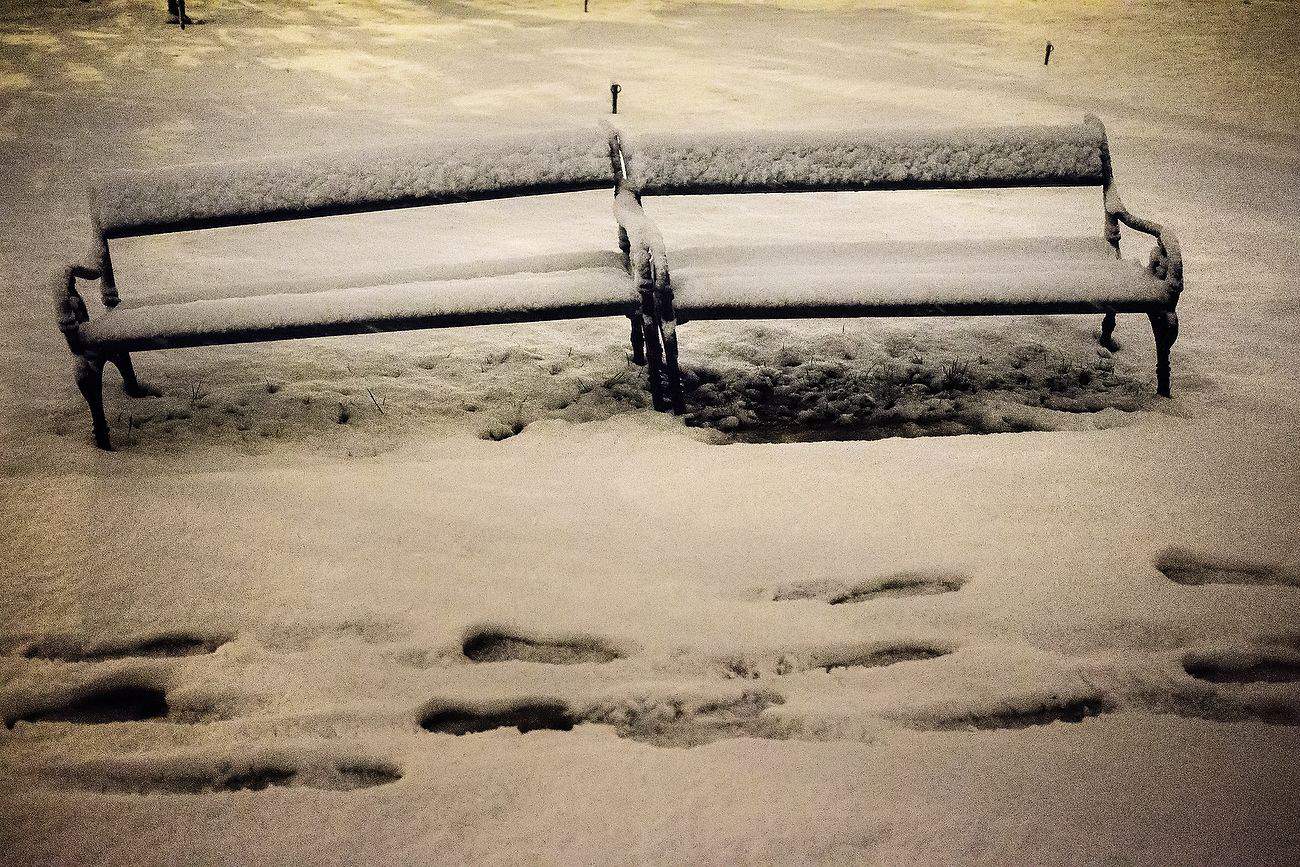
First snowfall of 2014, as seen in Bucharest on October 25th.
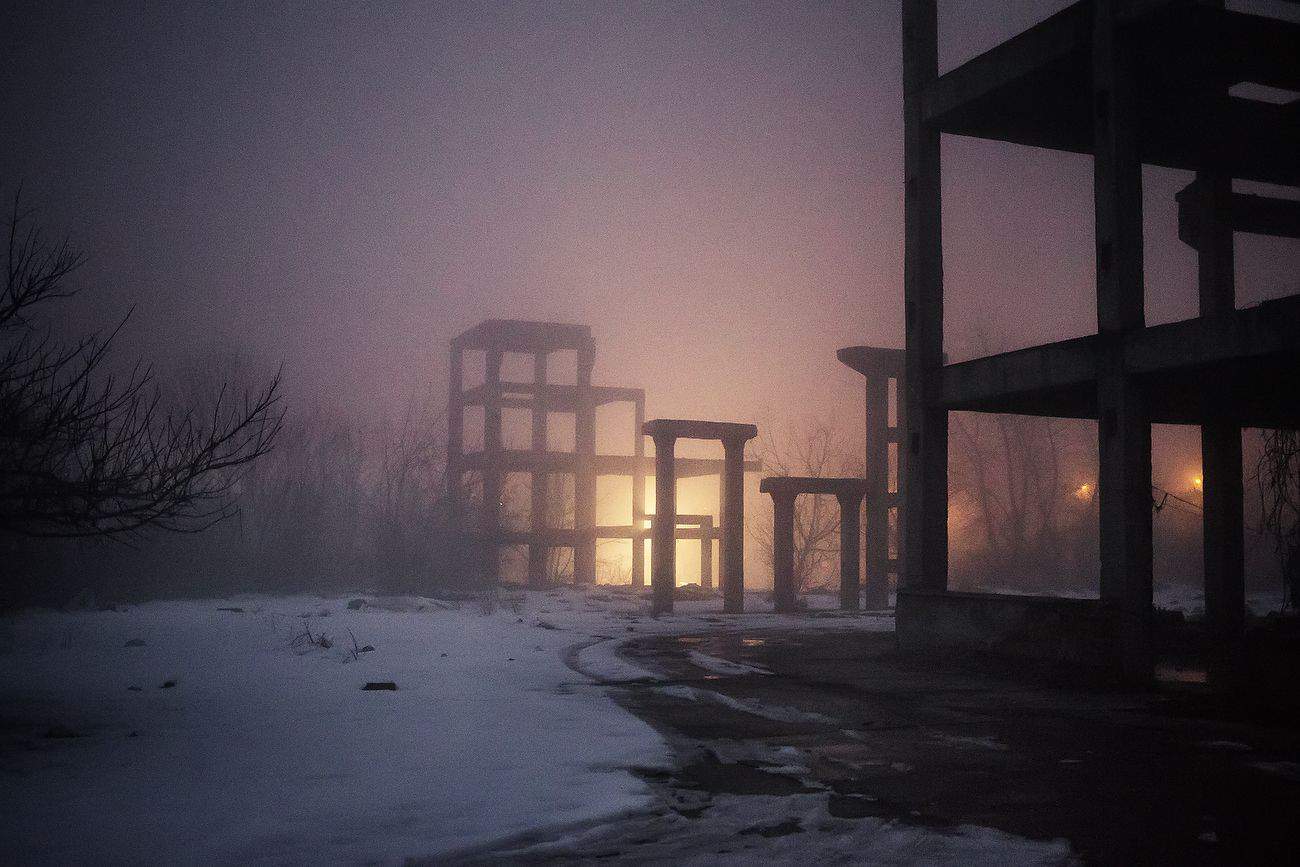
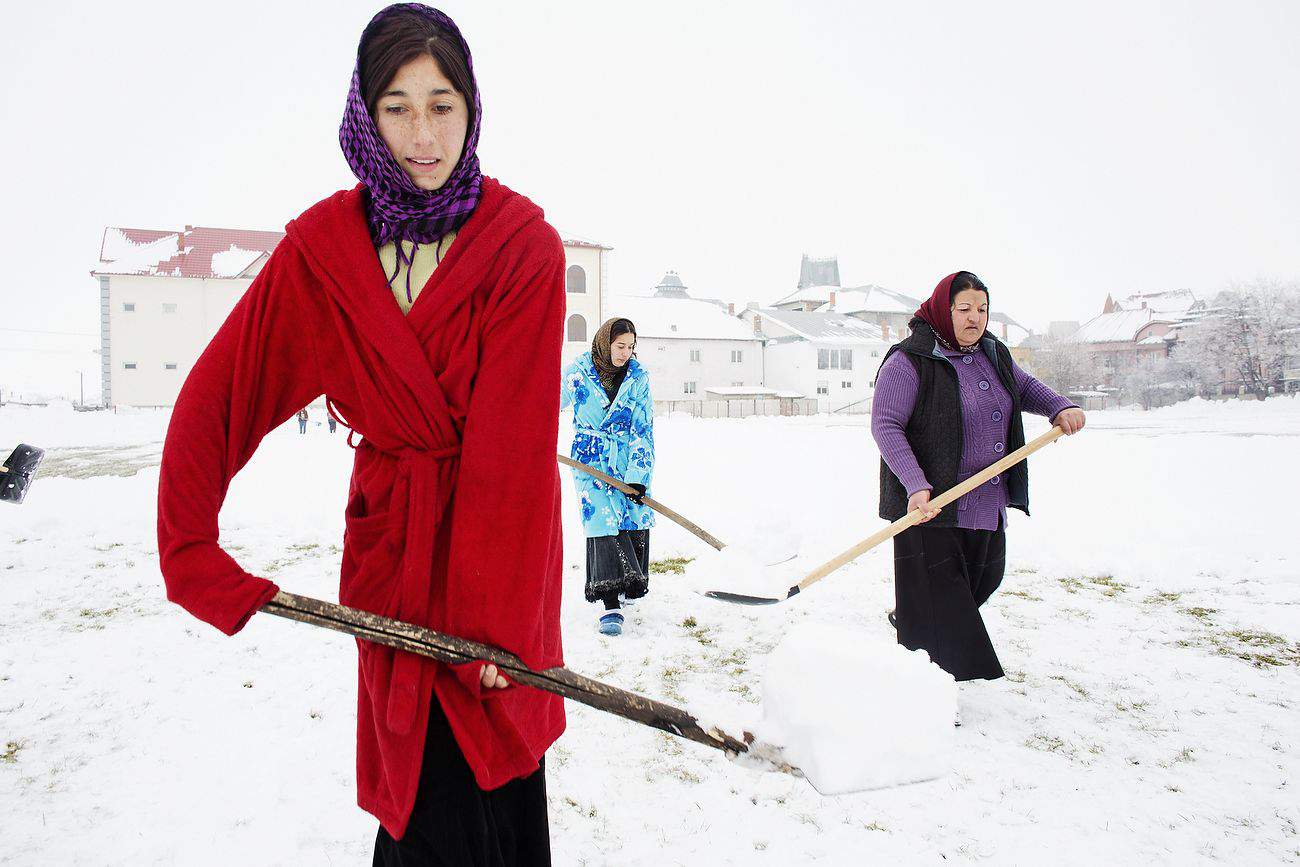
Roma people doing community work to secure social benefits eligibility, in Buzesti on February 6, 2014.
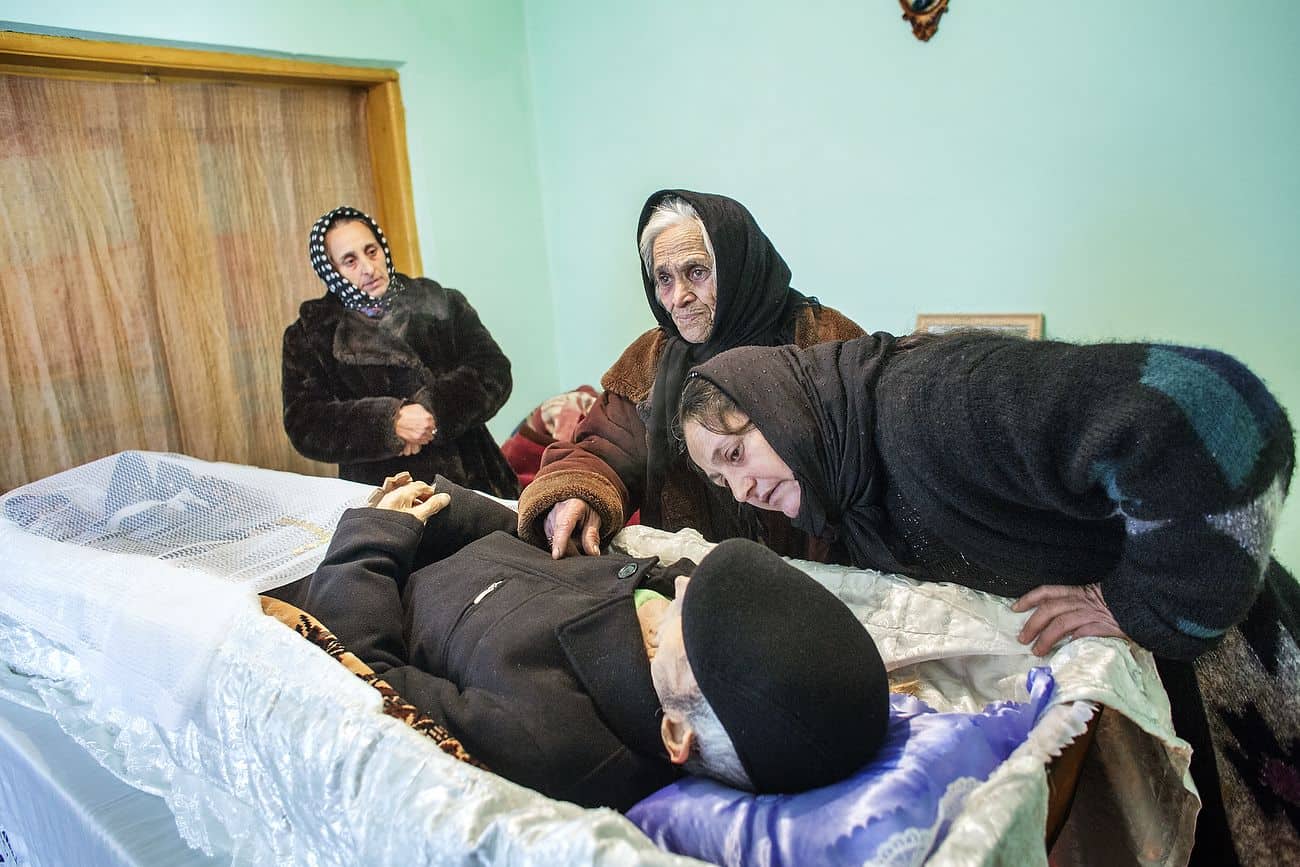
Roma people attending a funeral in Buzesti on February 6, 2014.
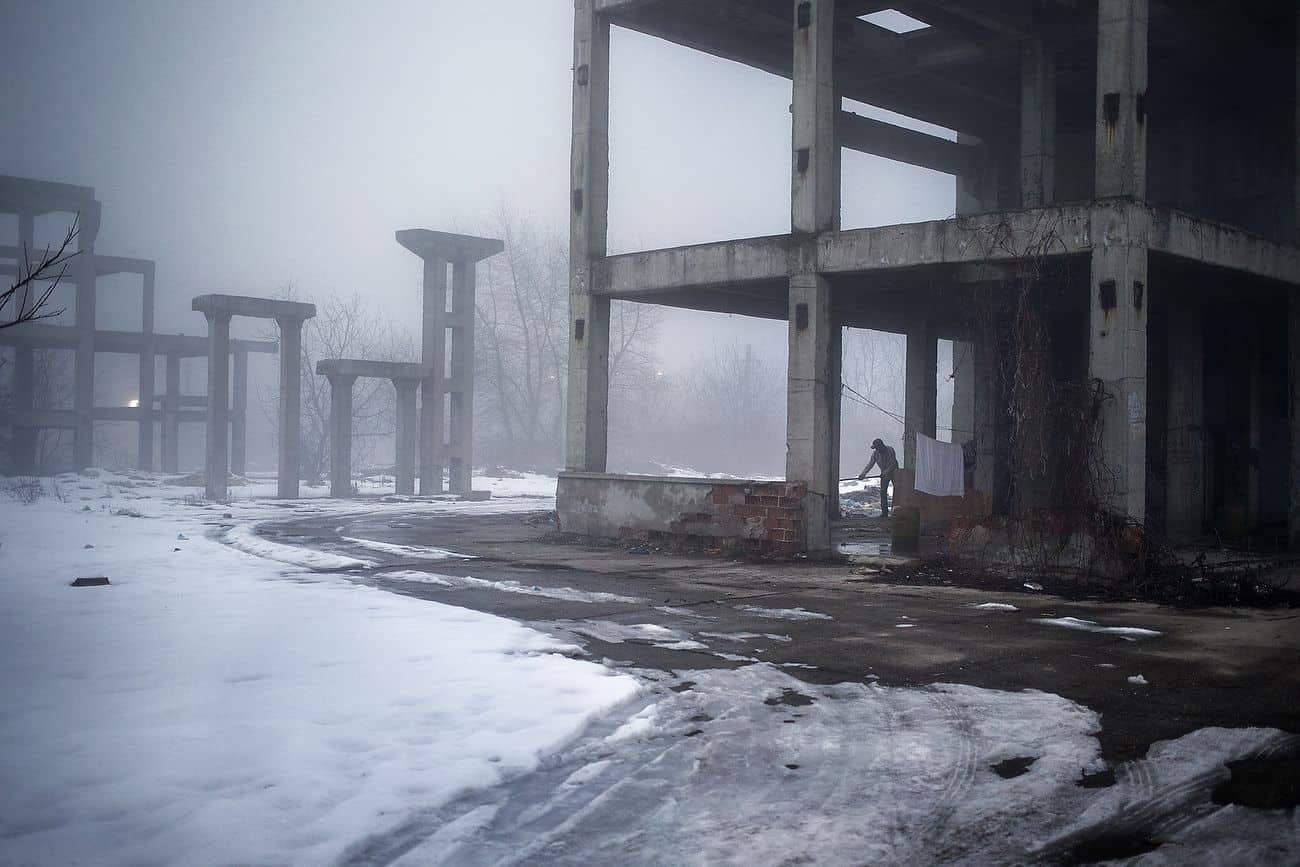

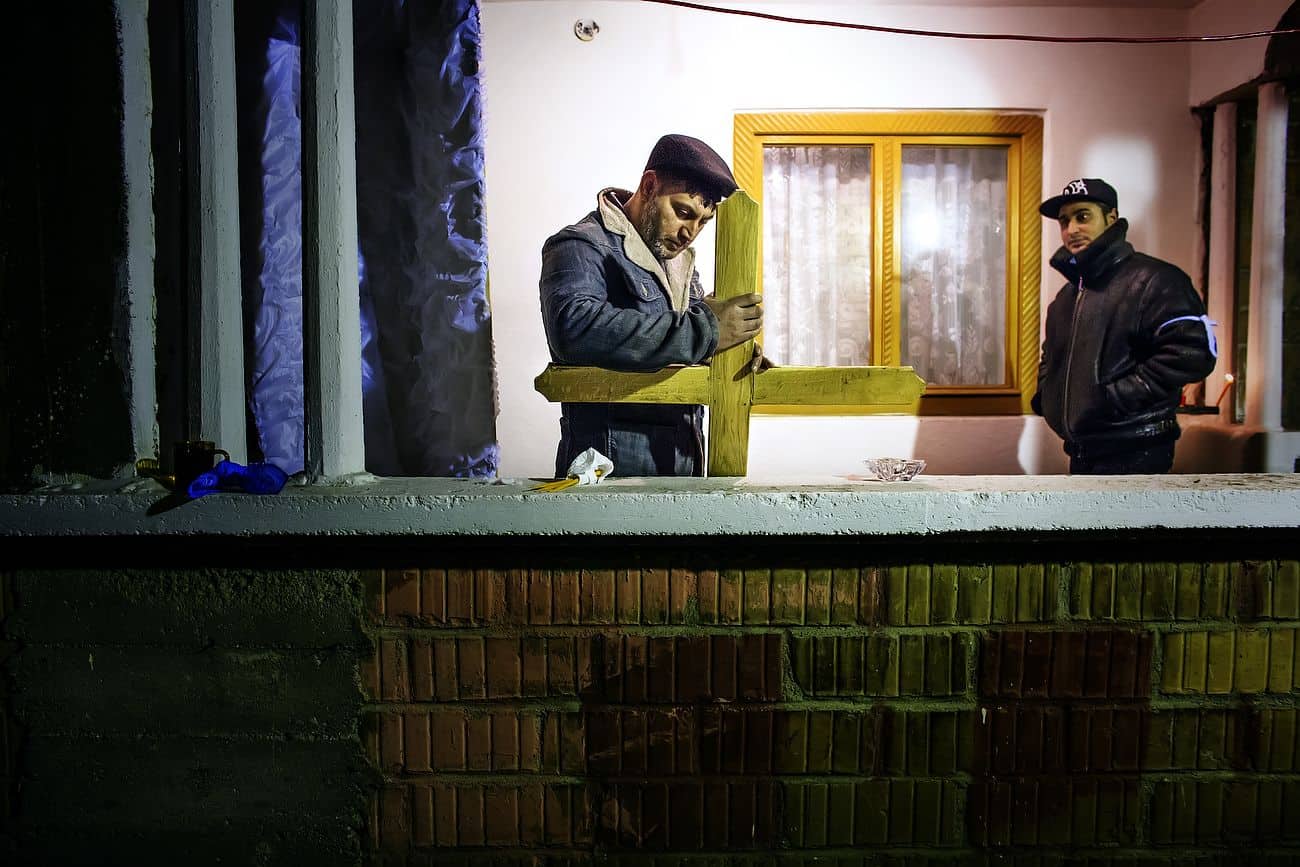
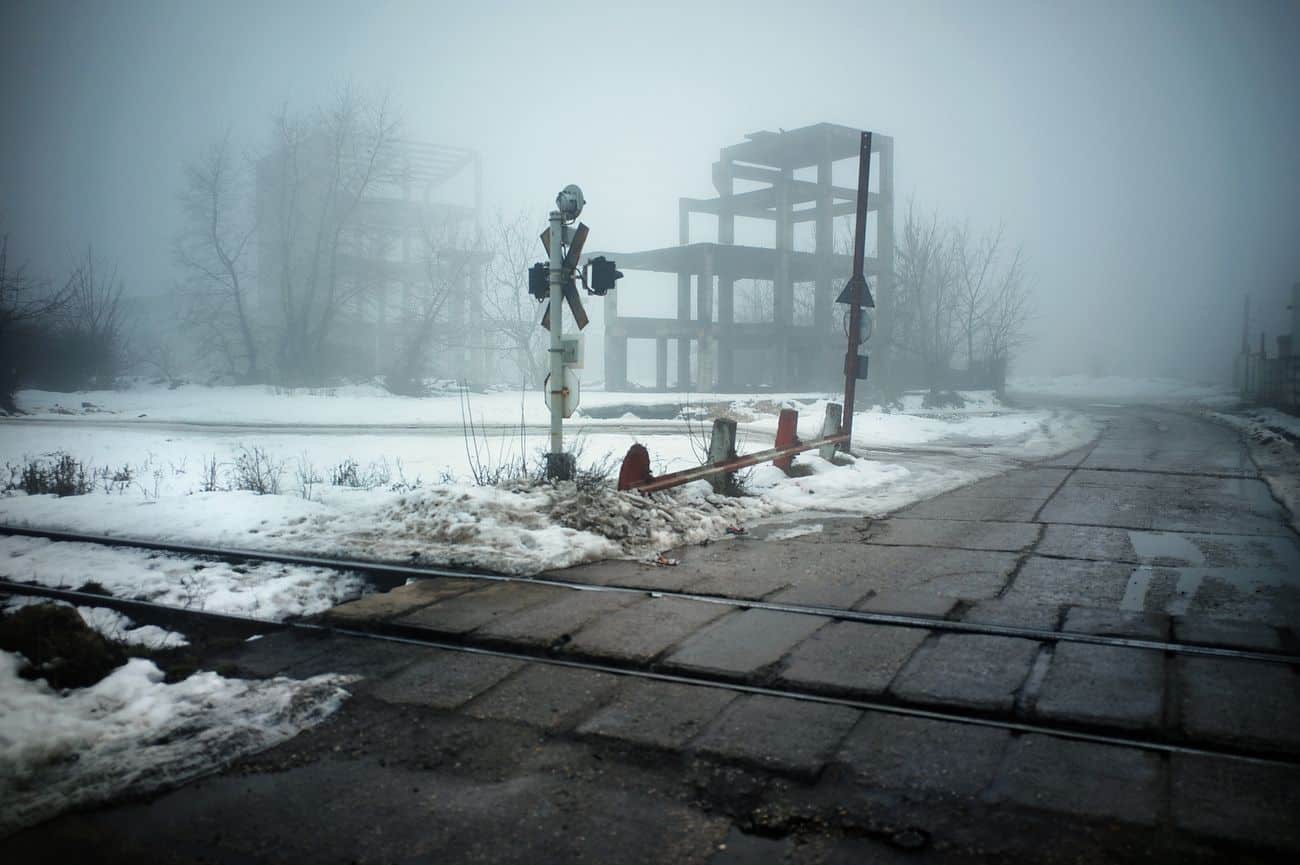
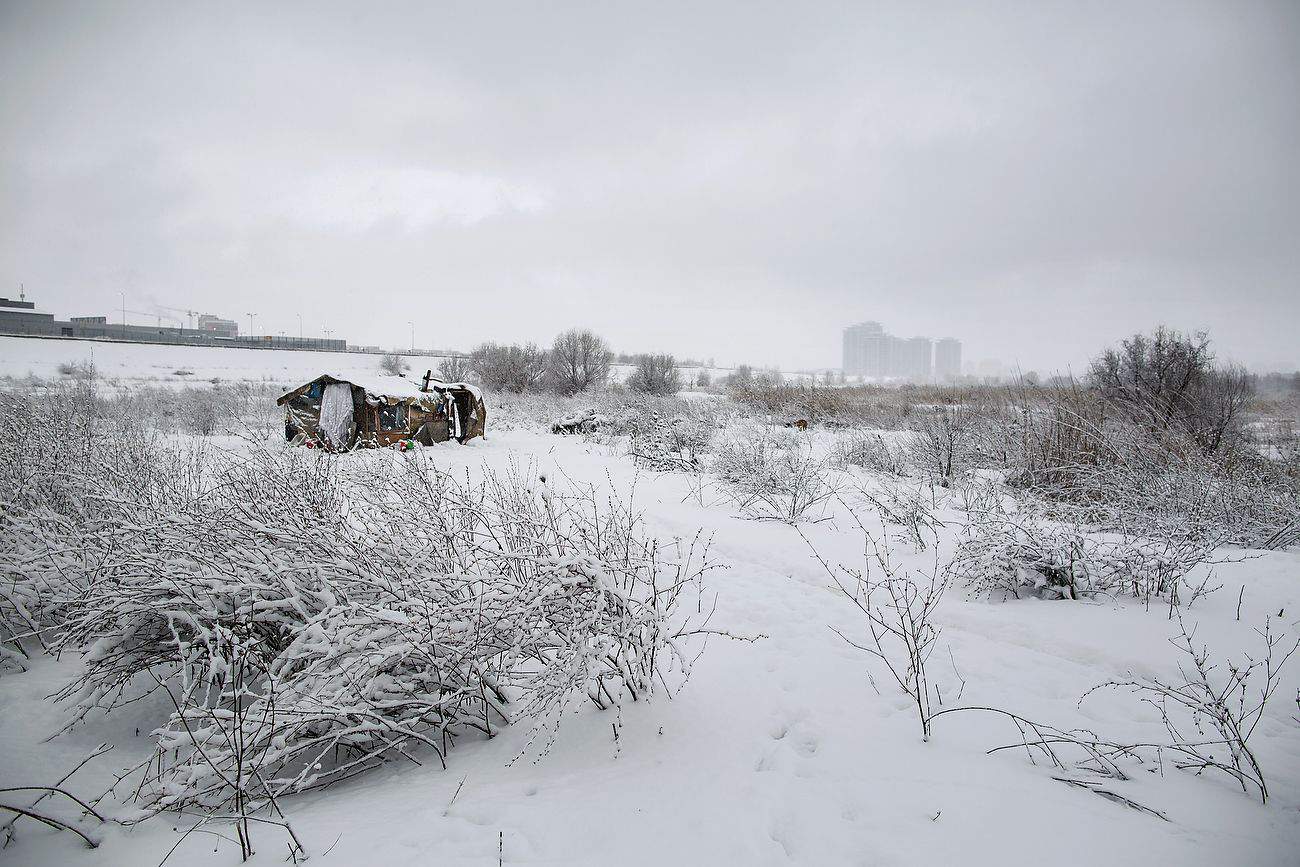
General view of the Vacaresti pit as seen in Bucharest on December 29, 2014. During Ceausescu regime the Vacaresti area, which was accommodating a 17th century monastery and a district of houses with big gardens, was demolished in order to build a lake. Since the works were abandoned in Õ88 nothing has been done here. In the presence of surfaced underground springs and plenty of time, mother nature has shape shifted the pit into a green oasis with delta like particularities where a variety of flora and fauna have blossomed. Starting 15 years ago many poor families, mainly Roma, have found shelter in the pit since the land property is still in dispute between the state and the former owners of the demolished houses. They all live in improvised shacks made from scraps they gather in the neighborhood. Those people are most resourceful when it comes to improvisation of what actually constitutes their life.
It seems that soon enough also the last three families will leave the area and move out while the pit would remain open to its next challenge Ð a natural park.
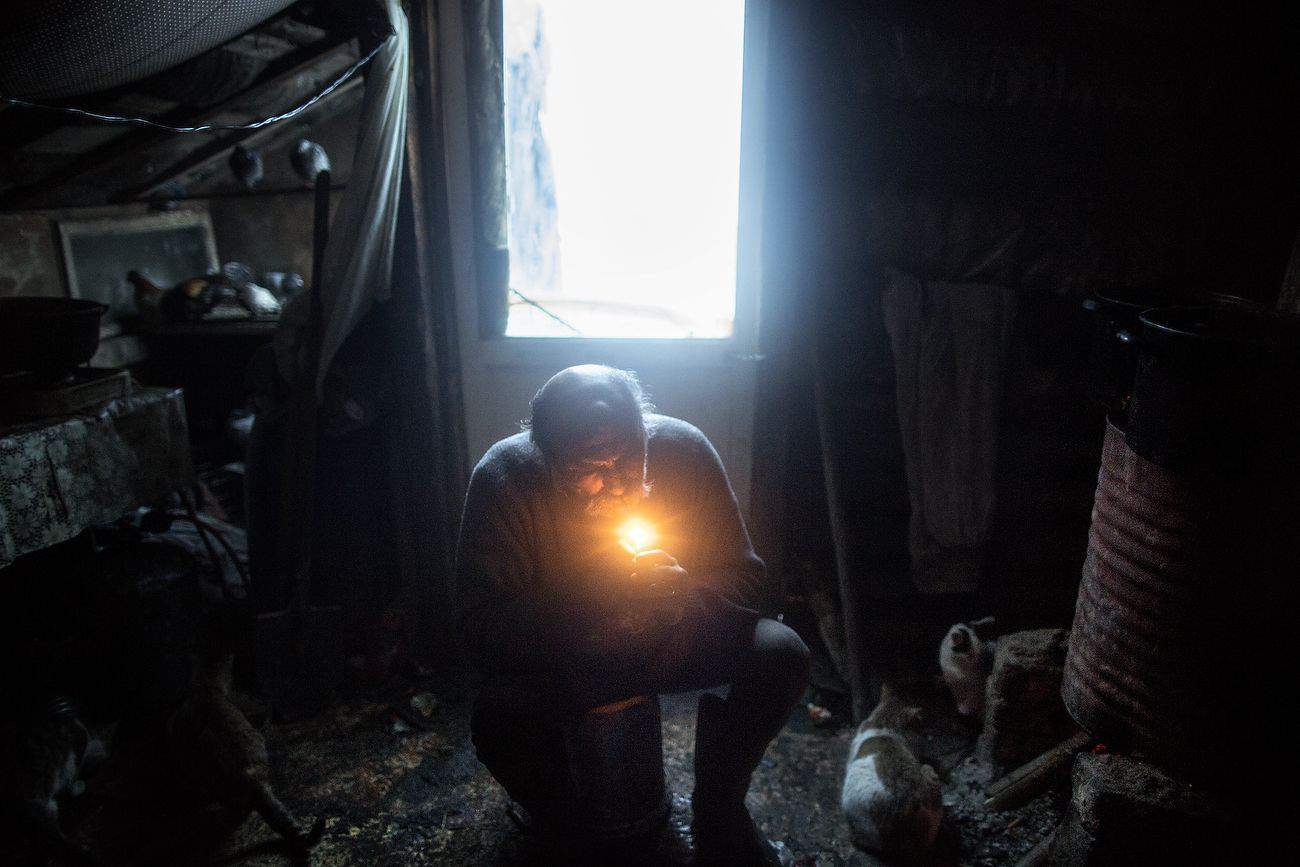
Roma man smoking inside his ramshackle dwelling as seen inside Vacaresti pit in Bucharest on December 29, 2014. During Ceausescu regime the Vacaresti area, which was accommodating a 17th century monastery and a district of houses with big gardens, was demolished in order to build a lake. Since the works were abandoned in Õ88 nothing has been done here. In the presence of surfaced underground springs and plenty of time, mother nature has shape shifted the pit into a green oasis with delta like particularities where a variety of flora and fauna have blossomed. Starting 15 years ago many poor families, mainly Roma, have found shelter in the pit since the land property is still in dispute between the state and the former owners of the demolished houses. They all live in improvised shacks made from scraps they gather in the neighborhood. Those people are most resourceful when it comes to improvisation of what actually constitutes their life.
It seems that soon enough also the last three families will leave the area and move out while the pit would remain open to its next challenge Ð a natural park.
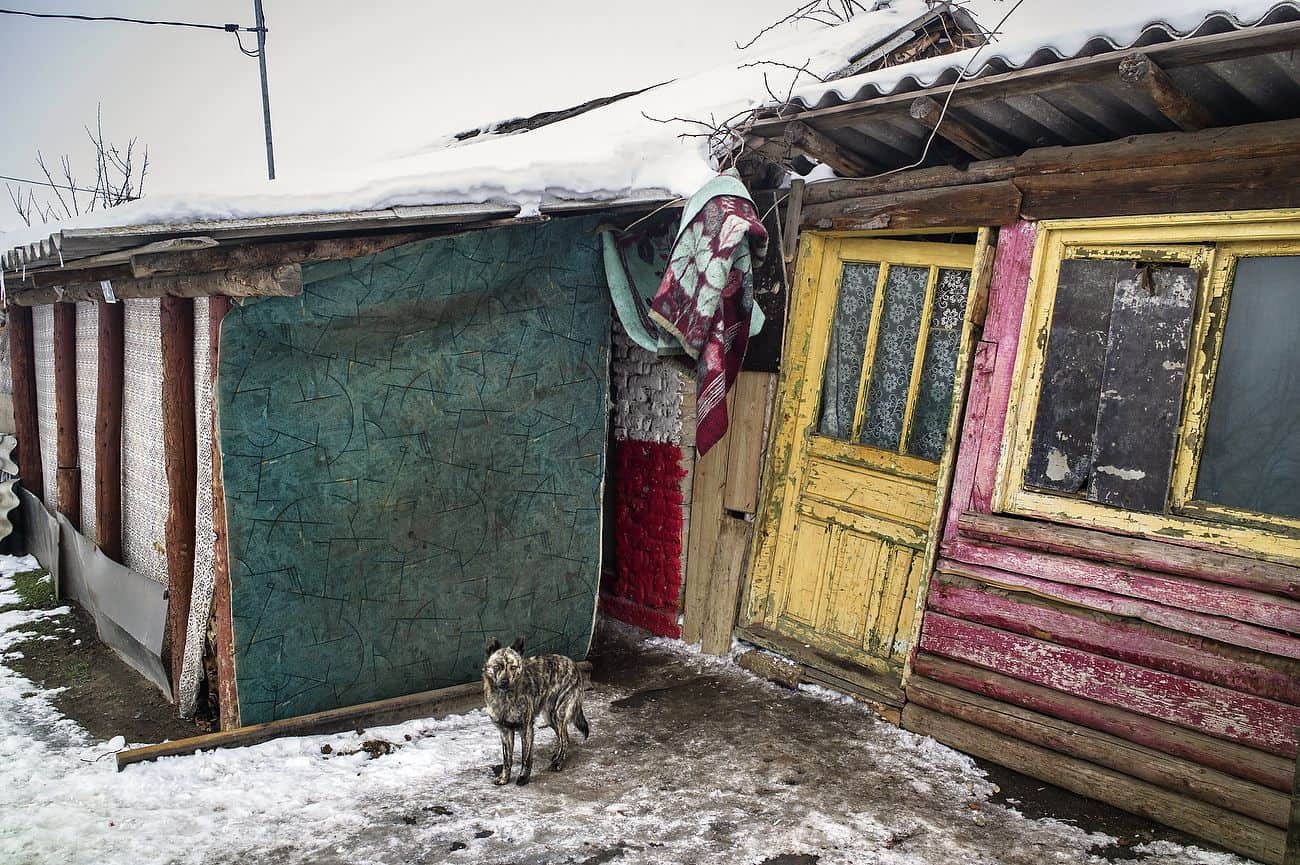
Roma people in Buzesti on February 6, 2014.
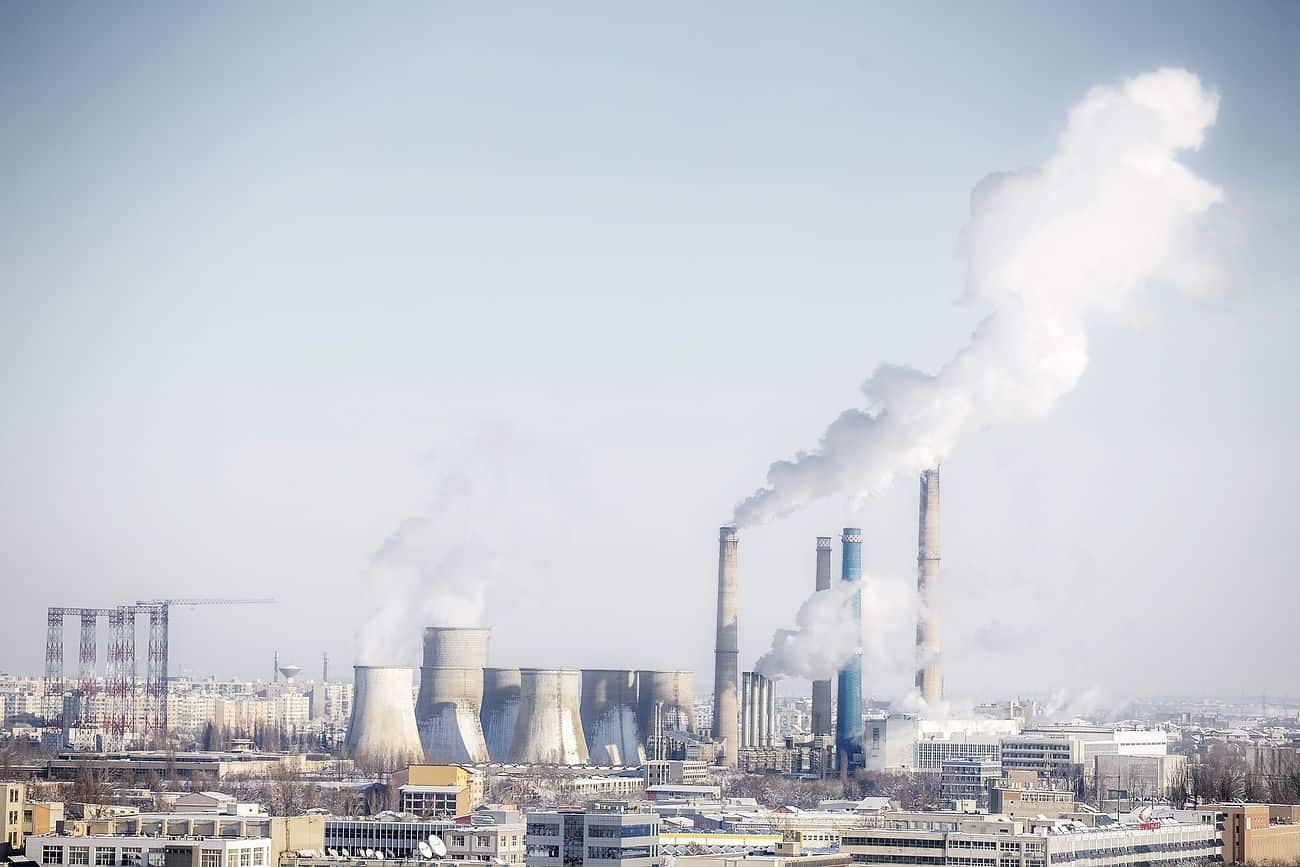
Man walking his dog in Vacaresti pit as seen in Bucharest on December 31, 2014. During Ceausescu regime the Vacaresti area, which was accommodating a 17th century monastery and a district of houses with big gardens, was demolished in order to build a lake. Since the works were abandoned in Õ88 nothing has been done here. In the presence of surfaced underground springs and plenty of time, mother nature has shape shifted the pit into a green oasis with delta like particularities where a variety of flora and fauna have blossomed. Starting 15 years ago many poor families, mainly Roma, have found shelter in the pit since the land property is still in dispute between the state and the former owners of the demolished houses. They all live in improvised shacks made from scraps they gather in the neighborhood. Those people are most resourceful when it comes to improvisation of what actually constitutes their life.
It seems that soon enough also the last three families will leave the area and move out while the pit would remain open to its next challenge Ð a natural park.
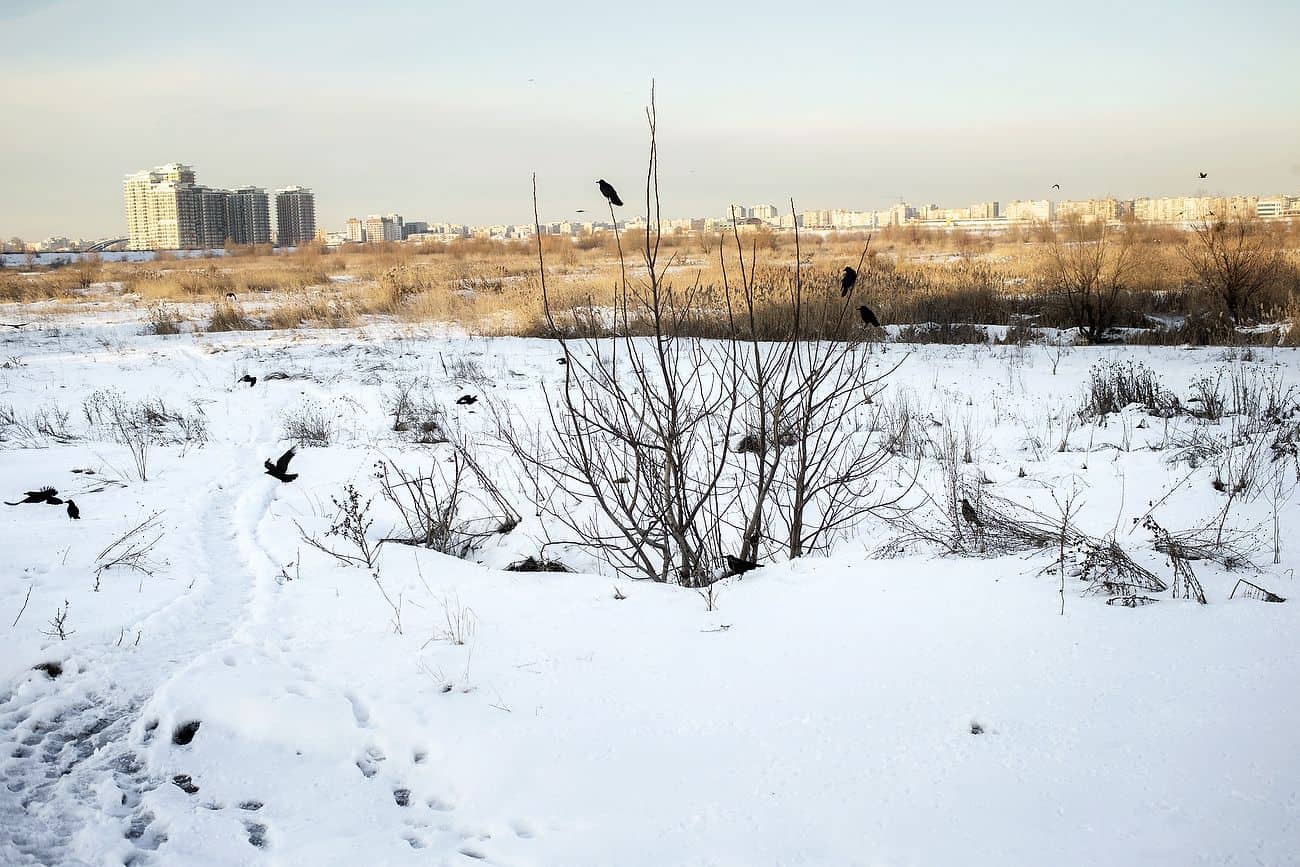
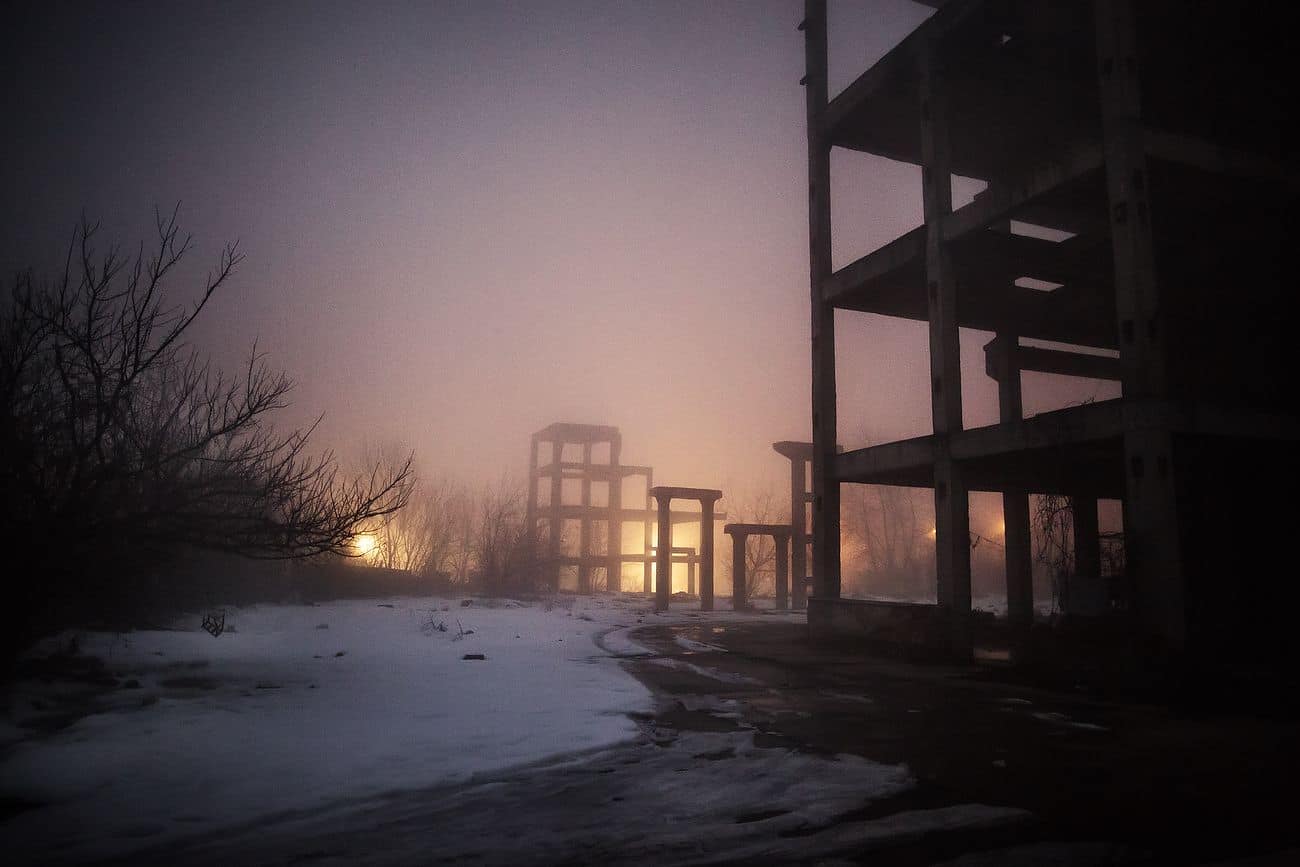
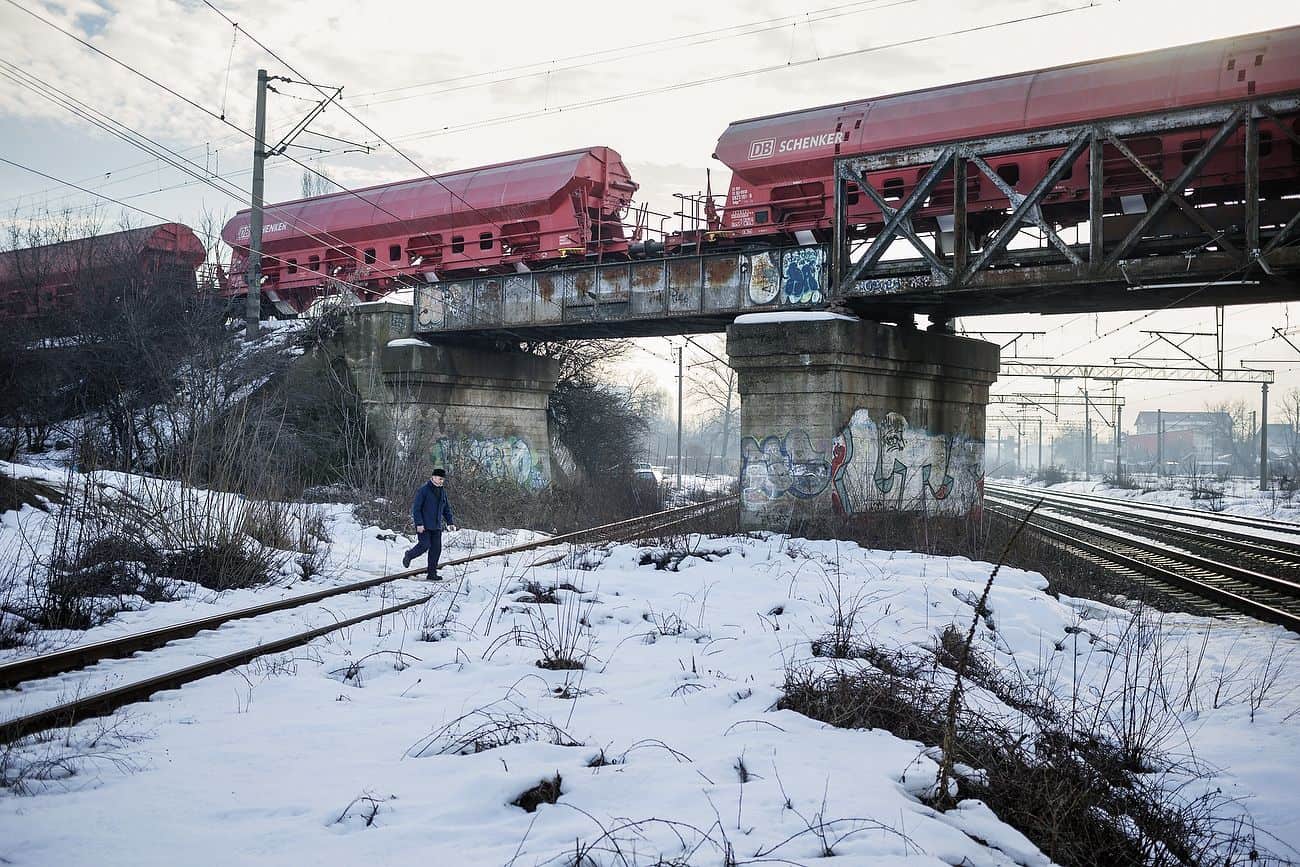

Abandoned train carts as seen in Bucharest near Gara de Nord on January 30, 2014. Weather forecasters issued a code red severe weather warning as a second wave of blizzards affects the southeastern regions of Romania disrupting road and rail traffic.
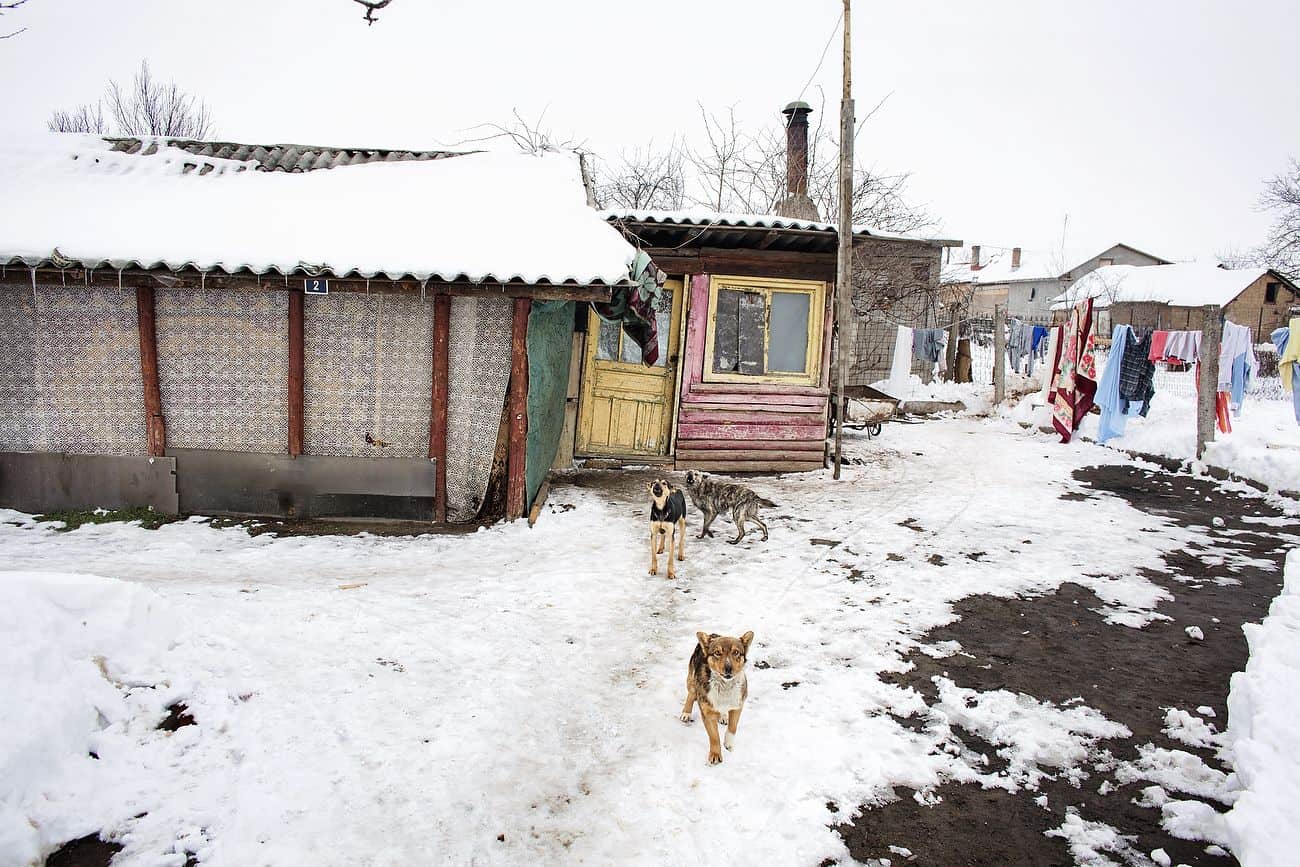

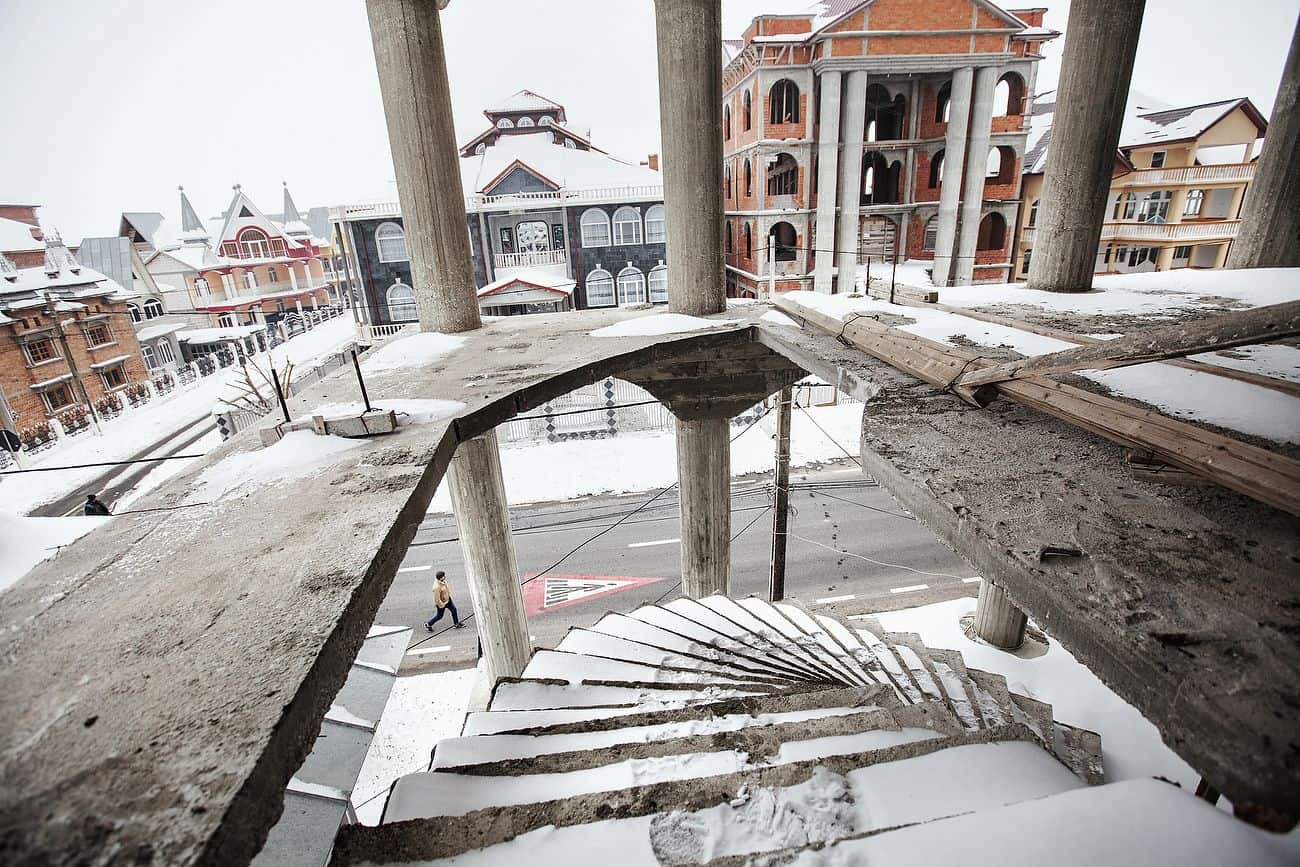
Roma people in Buzesti on February 6, 2014.
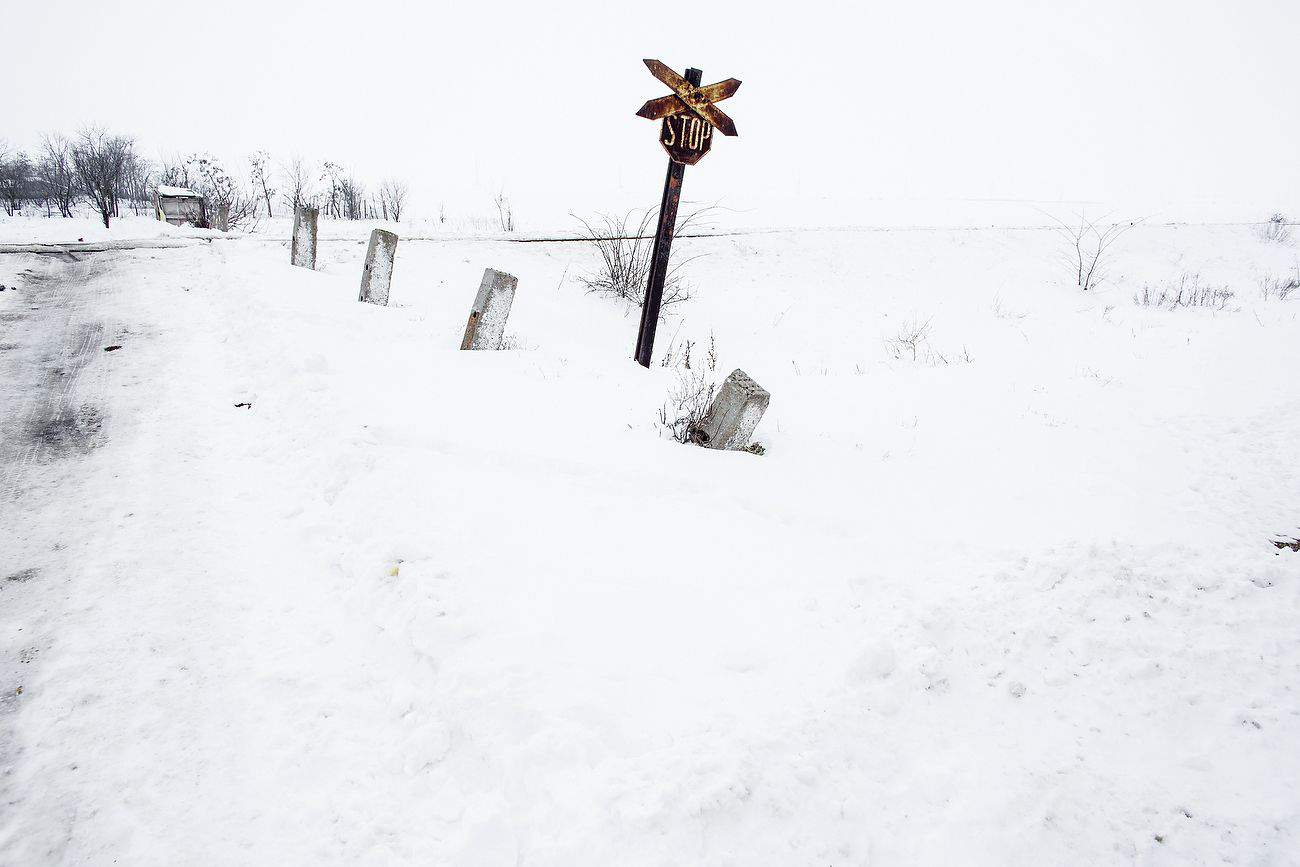
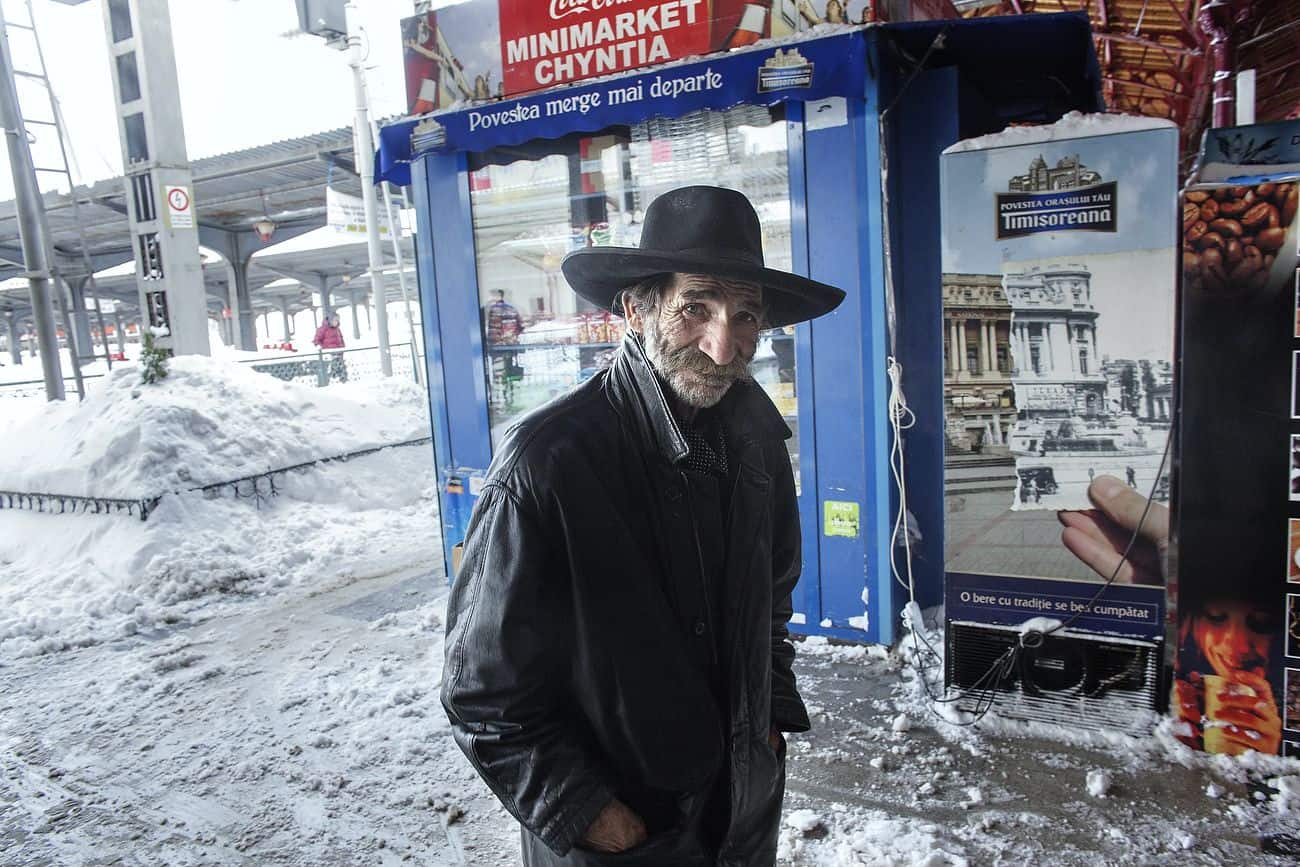
Passenger recently descended from a train walks by, as seen in Bucharest, in Gara de Nord on January 30, 2014. Weather forecasters issued a code red severe weather warning as a second wave of blizzards affects the southeastern regions of Romania disrupting road and rail traffic.
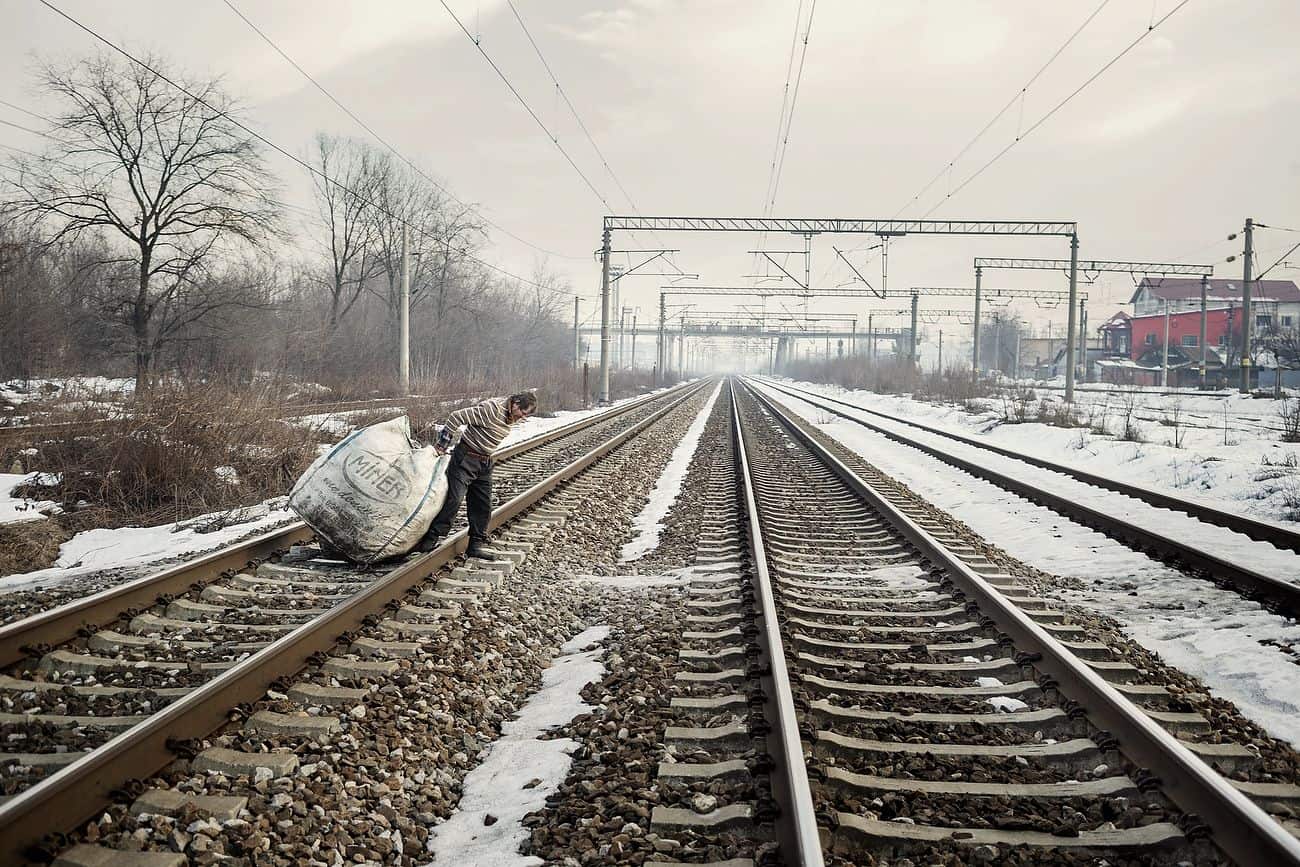
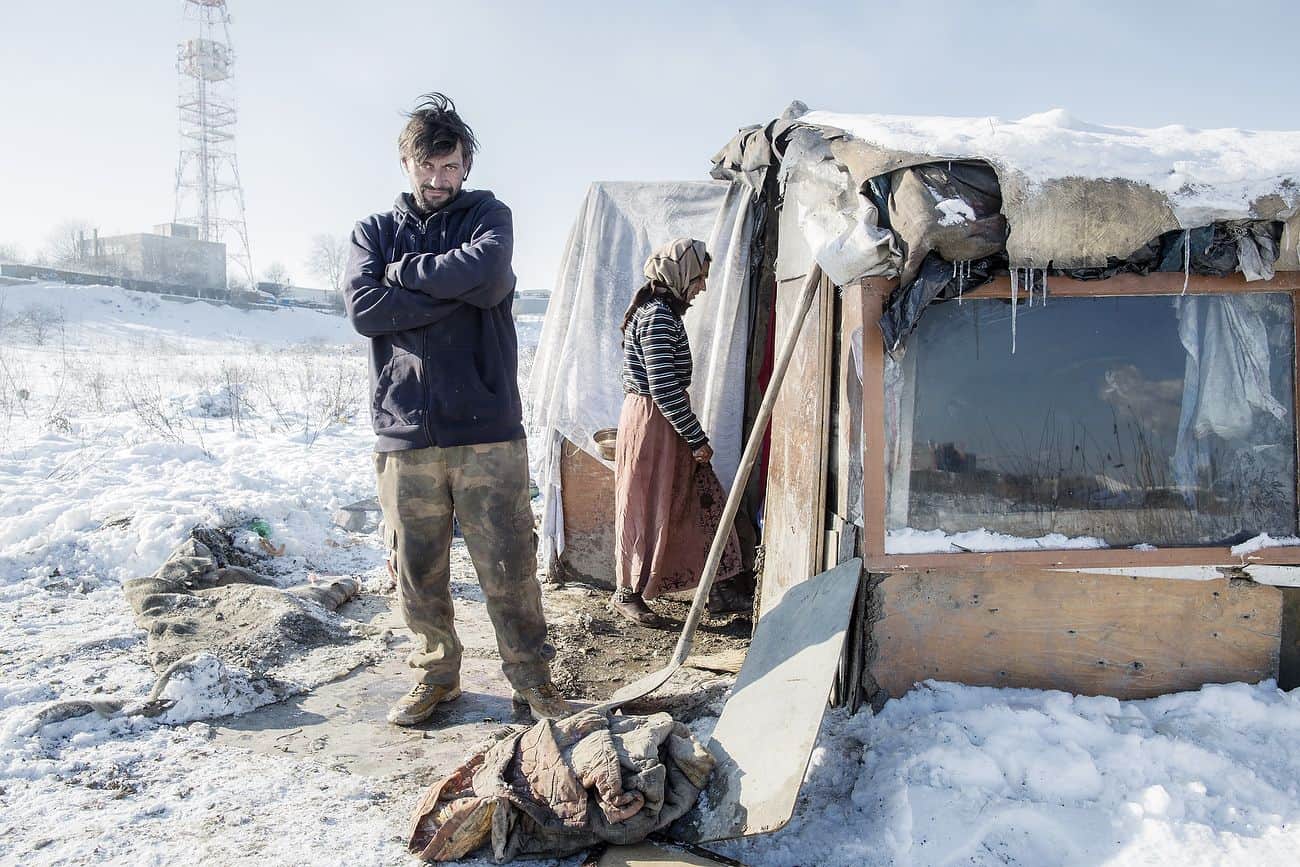
Roma people as seen inside Vacaresti pit in Bucharest on December 31, 2014. During Ceausescu regime the Vacaresti area, which was accommodating a 17th century monastery and a district of houses with big gardens, was demolished in order to build a lake. Since the works were abandoned in Õ88 nothing has been done here. In the presence of surfaced underground springs and plenty of time, mother nature has shape shifted the pit into a green oasis with delta like particularities where a variety of flora and fauna have blossomed. Starting 15 years ago many poor families, mainly Roma, have found shelter in the pit since the land property is still in dispute between the state and the former owners of the demolished houses. They all live in improvised shacks made from scraps they gather in the neighborhood. Those people are most resourceful when it comes to improvisation of what actually constitutes their life.
It seems that soon enough also the last three families will leave the area and move out while the pit would remain open to its next challenge Ð a natural park.
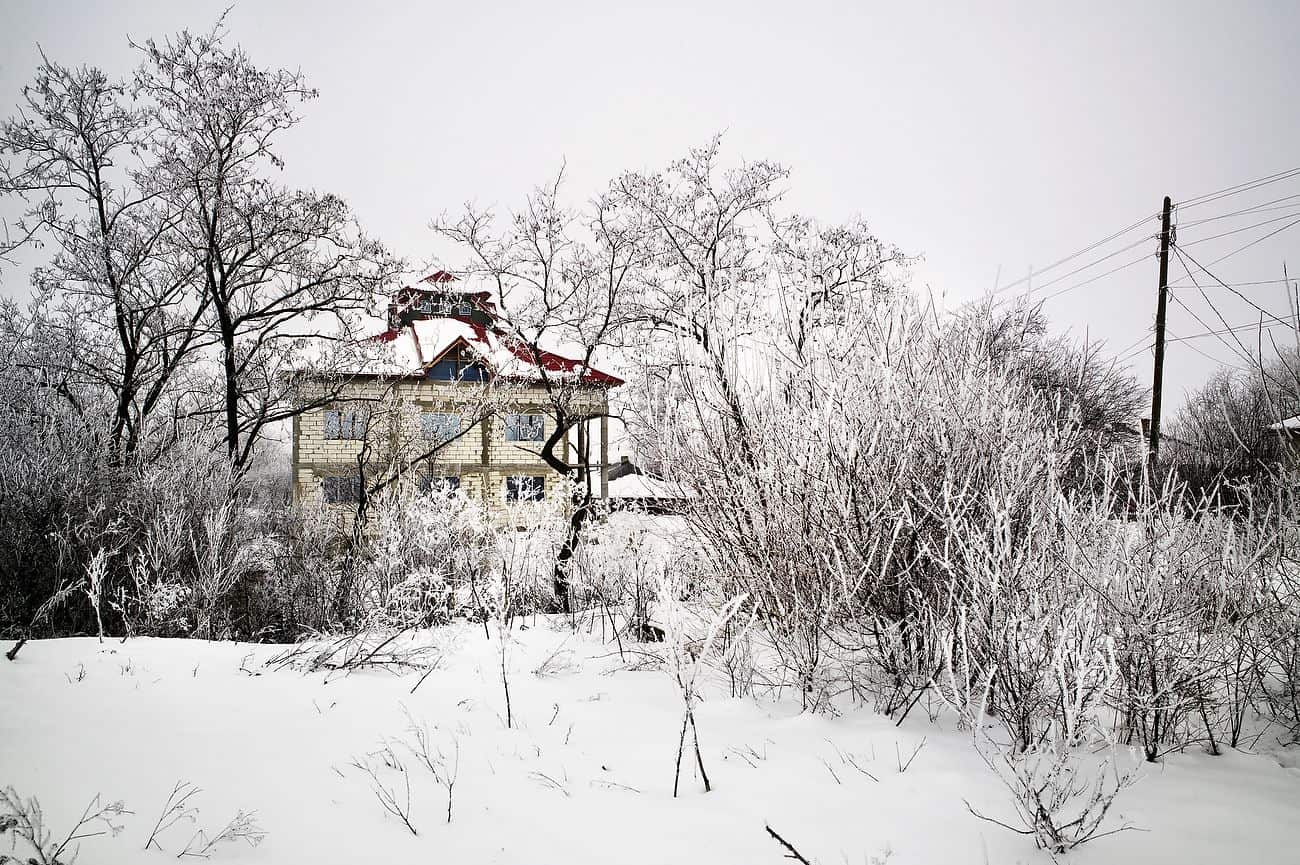
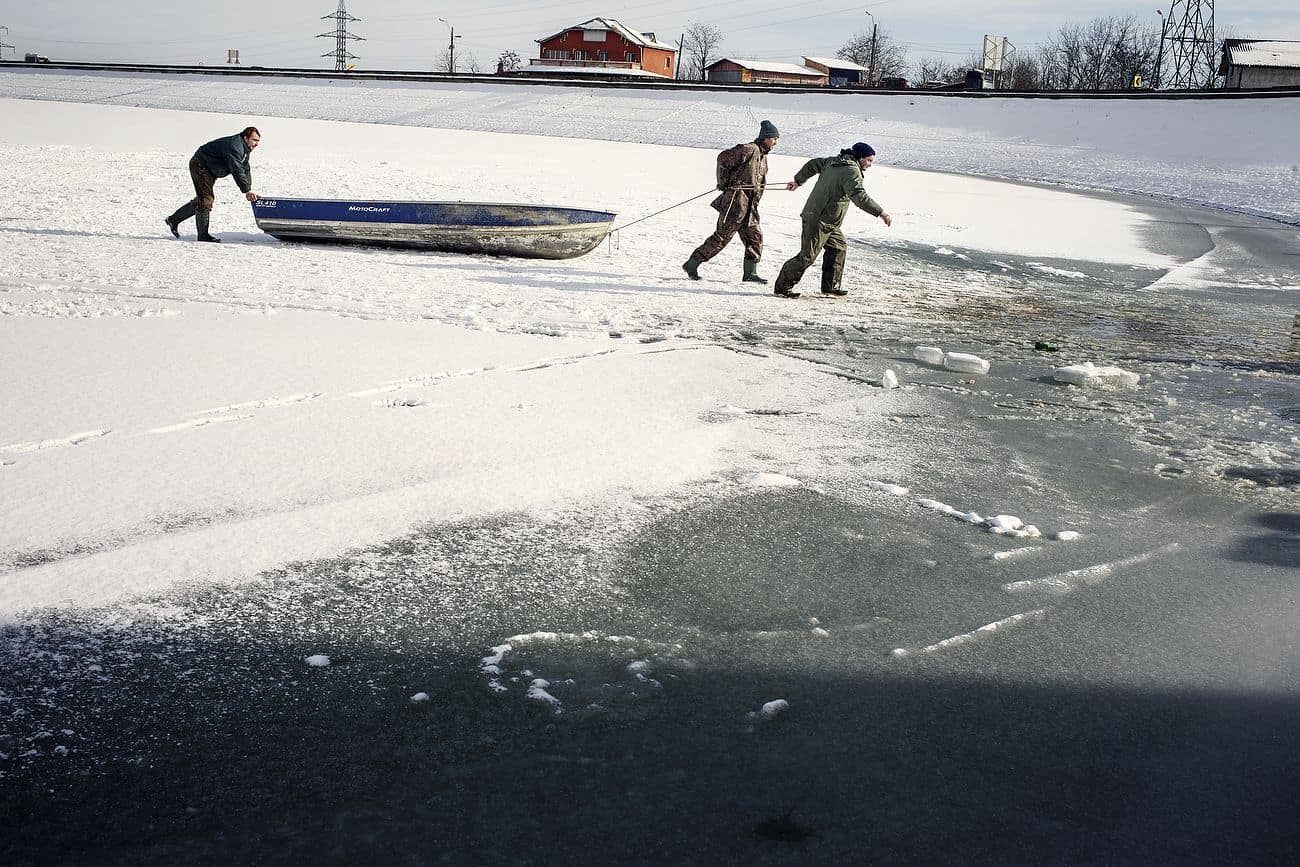
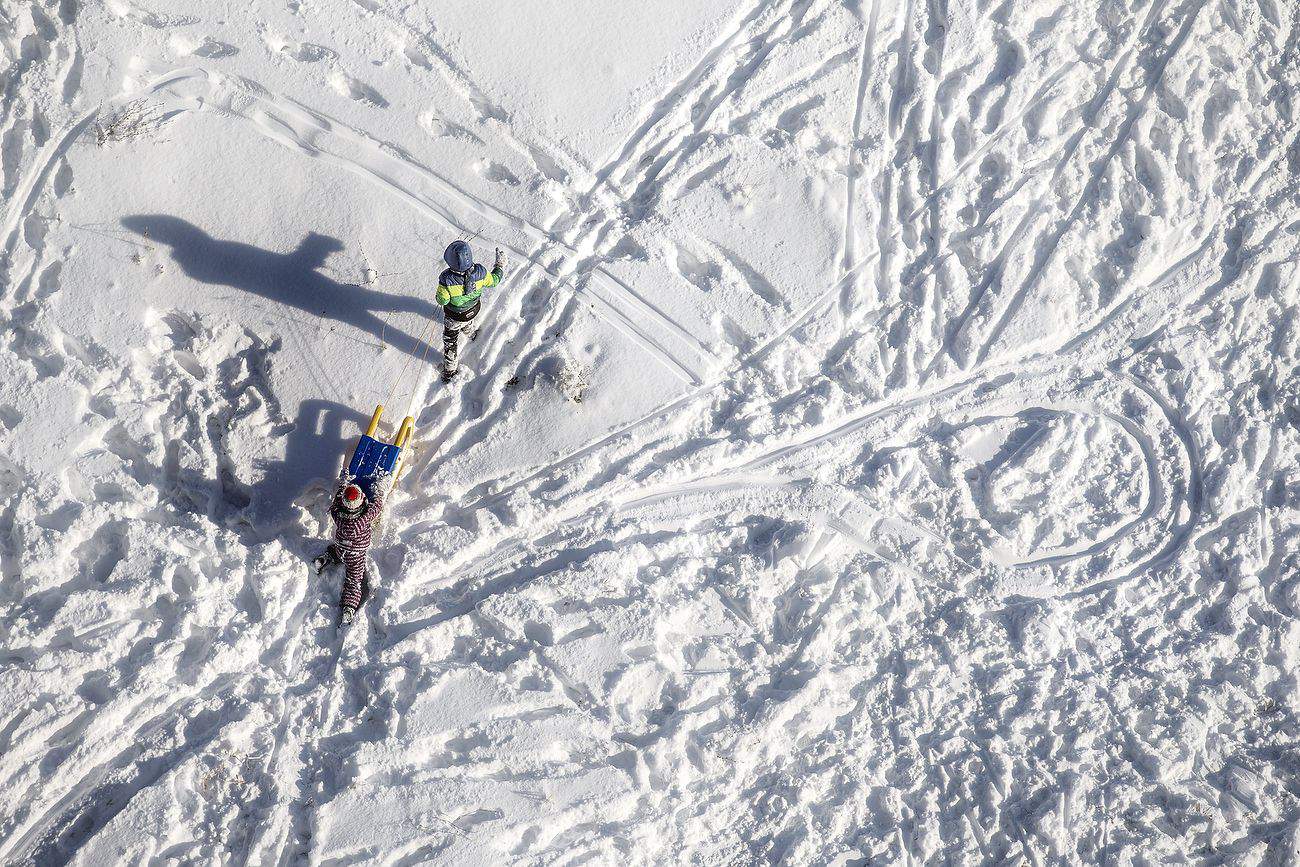
Kids playing in the snow on the edge of Vacaresti pit, as seen in Bucharest on December 31, 2014. During Ceausescu regime the Vacaresti area, which was accommodating a 17th century monastery and a district of houses with big gardens, was demolished in order to build a lake. Since the works were abandoned in Õ88 nothing has been done here. In the presence of surfaced underground springs and plenty of time, mother nature has shape shifted the pit into a green oasis with delta like particularities where a variety of flora and fauna have blossomed. Starting 15 years ago many poor families, mainly Roma, have found shelter in the pit since the land property is still in dispute between the state and the former owners of the demolished houses. They all live in improvised shacks made from scraps they gather in the neighborhood. Those people are most resourceful when it comes to improvisation of what actually constitutes their life.
It seems that soon enough also the last three families will leave the area and move out while the pit would remain open to its next challenge Ð a natural park.
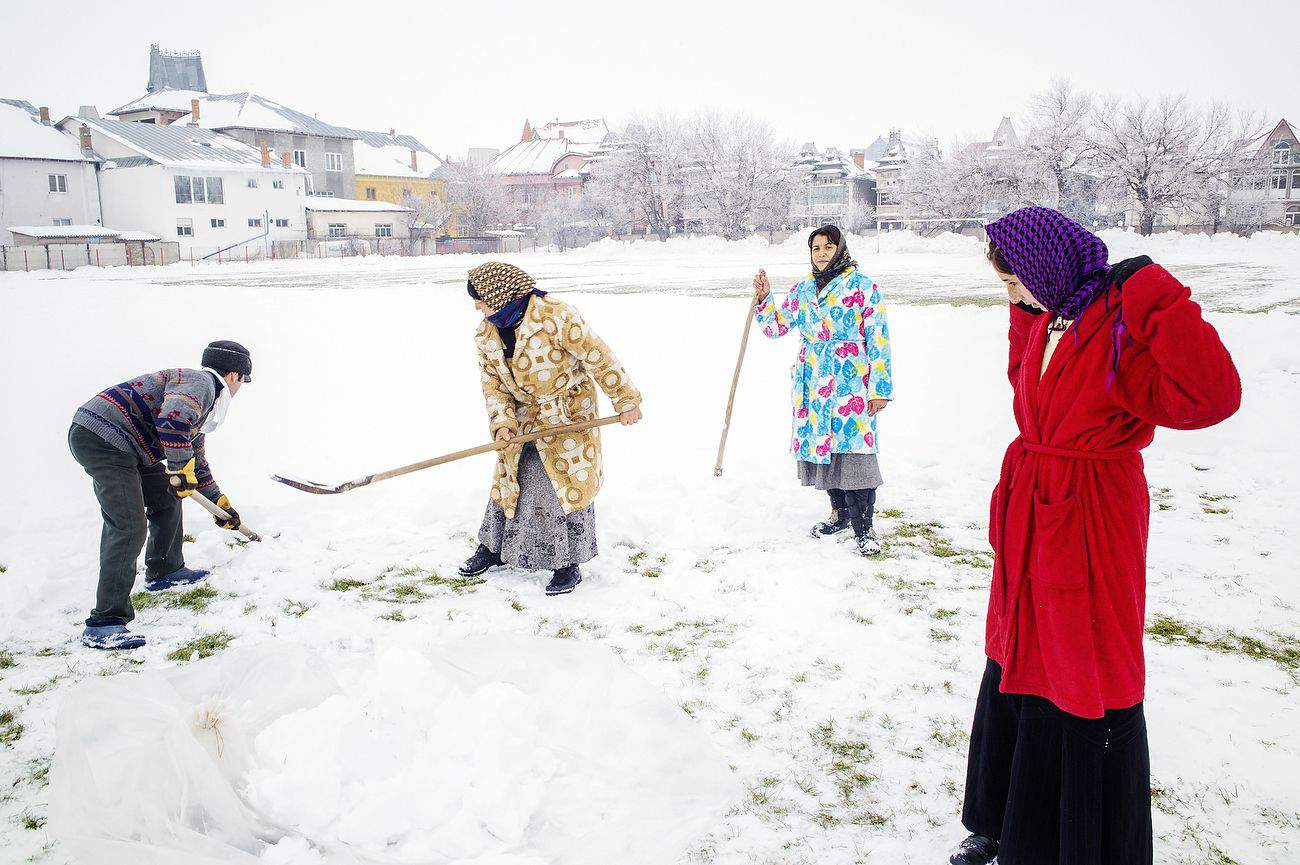
Roma people doing community work to secure social benefits eligibility, in Buzesti on February 6, 2014.
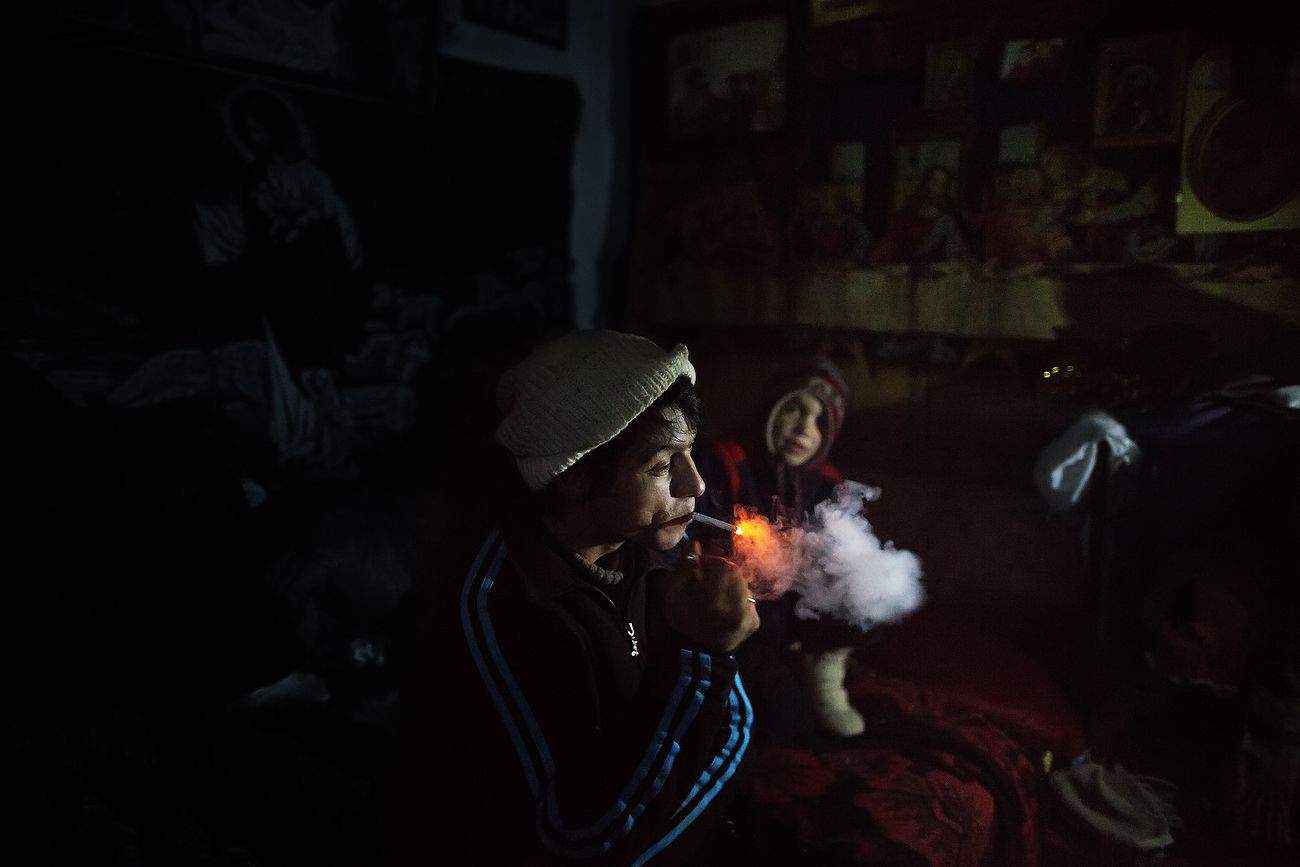
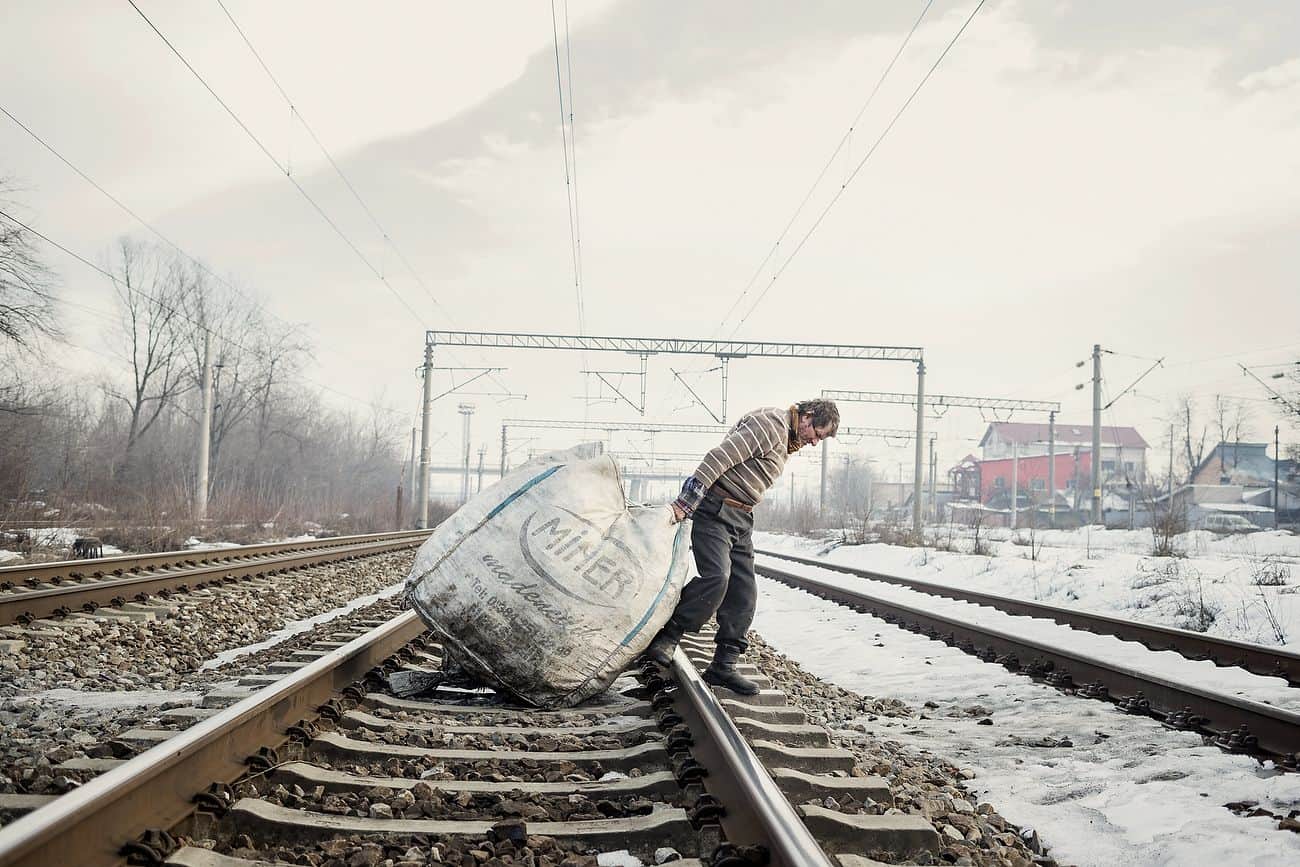
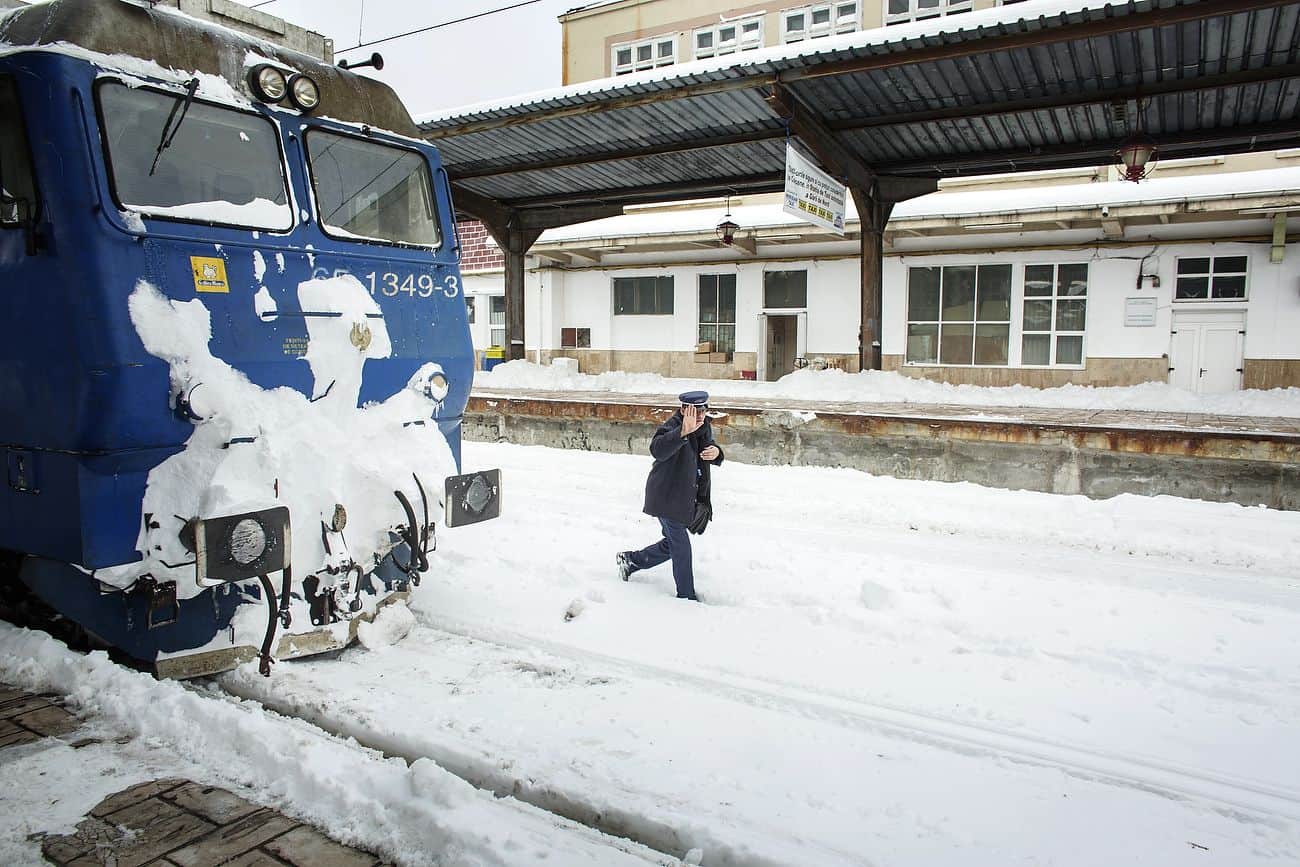
Romanian Railways employee walks by through the snow, as seen in Bucharest, in Gara de Nord on January 30, 2014. Weather forecasters issued a code red severe weather warning as a second wave of blizzards affects the southeastern regions of Romania disrupting road and rail traffic.
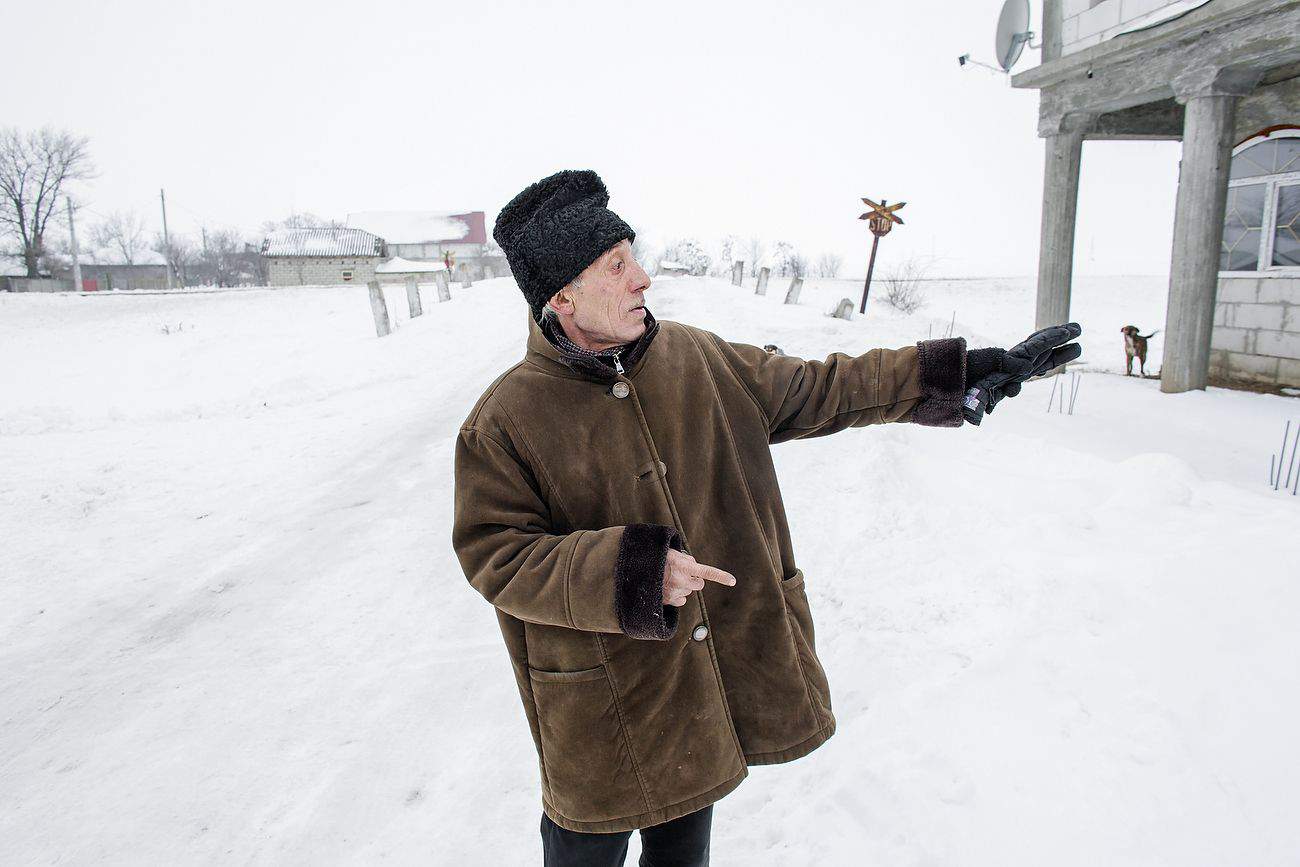
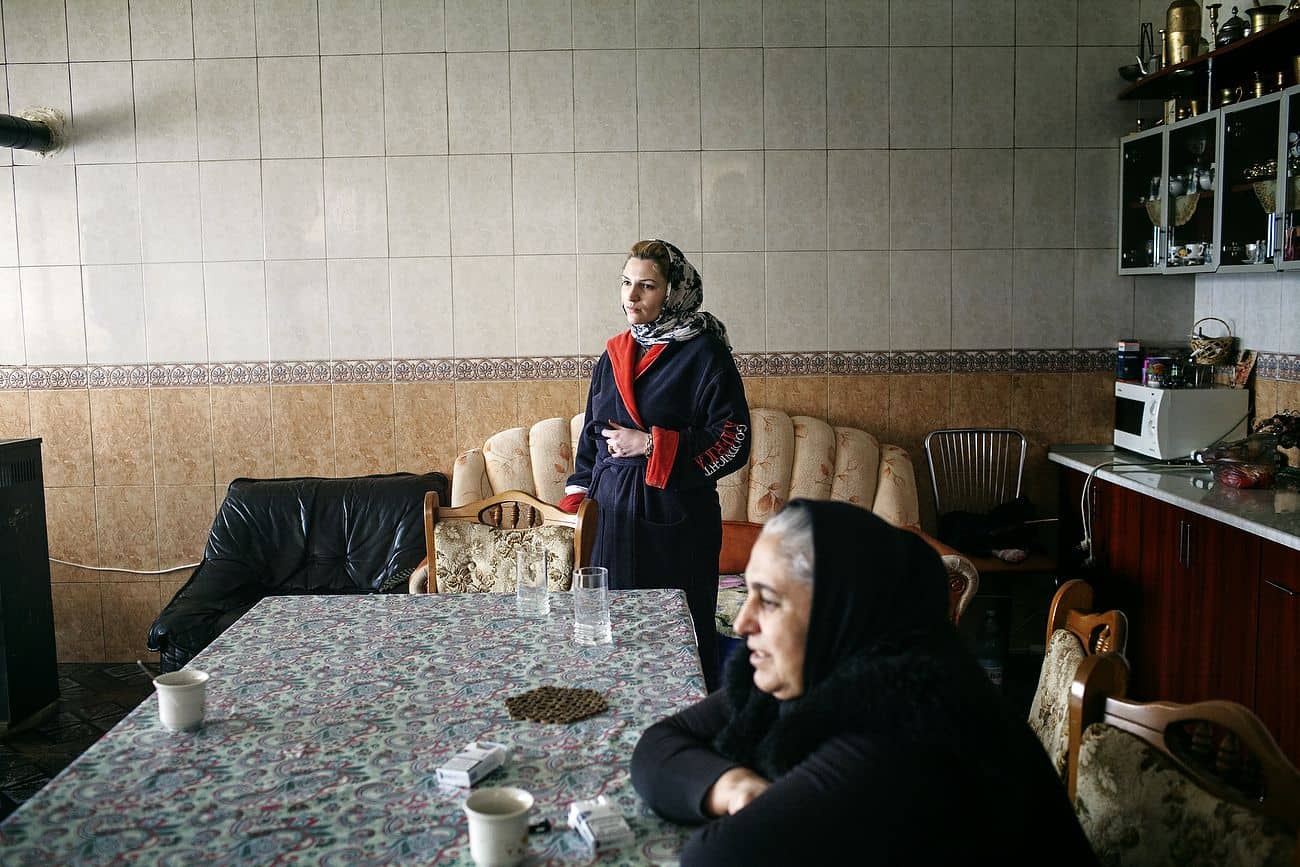
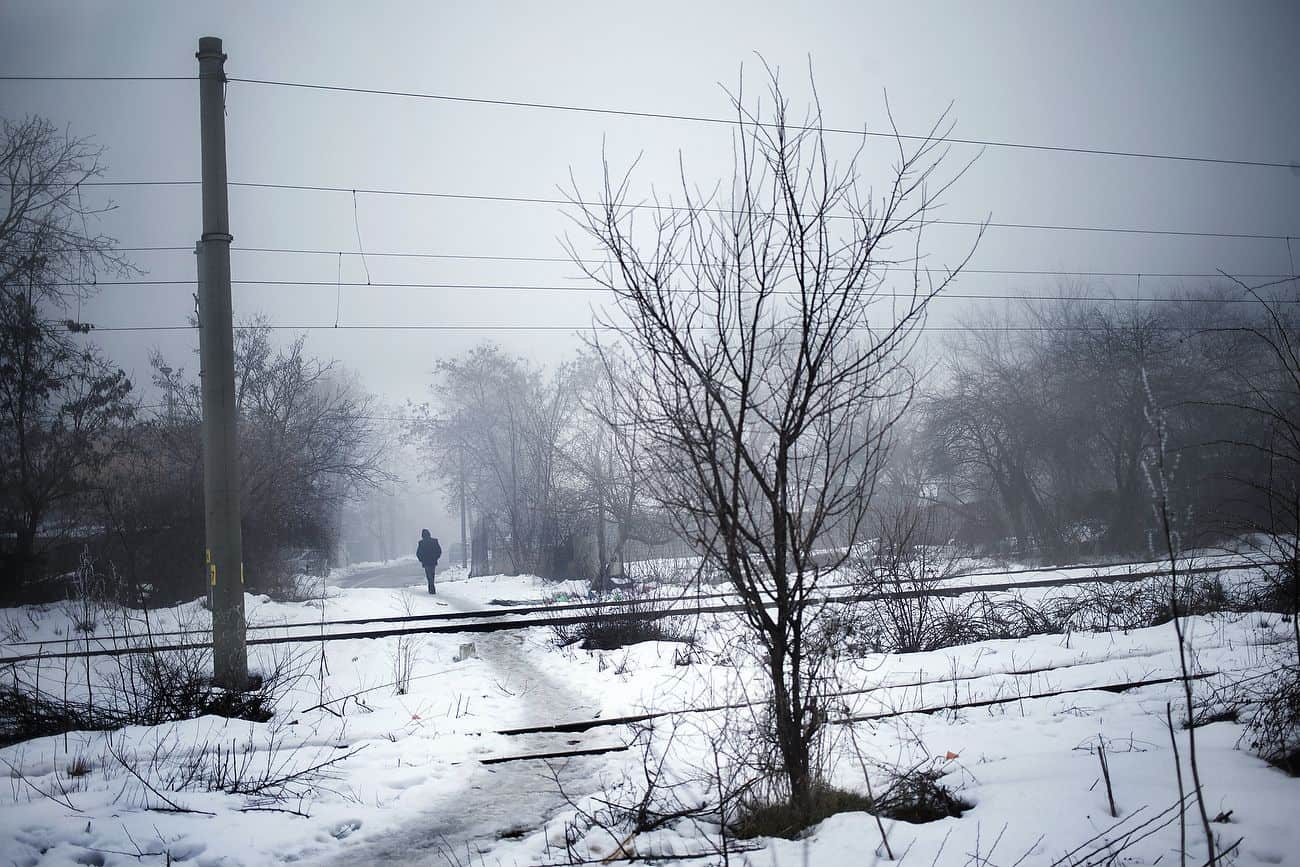
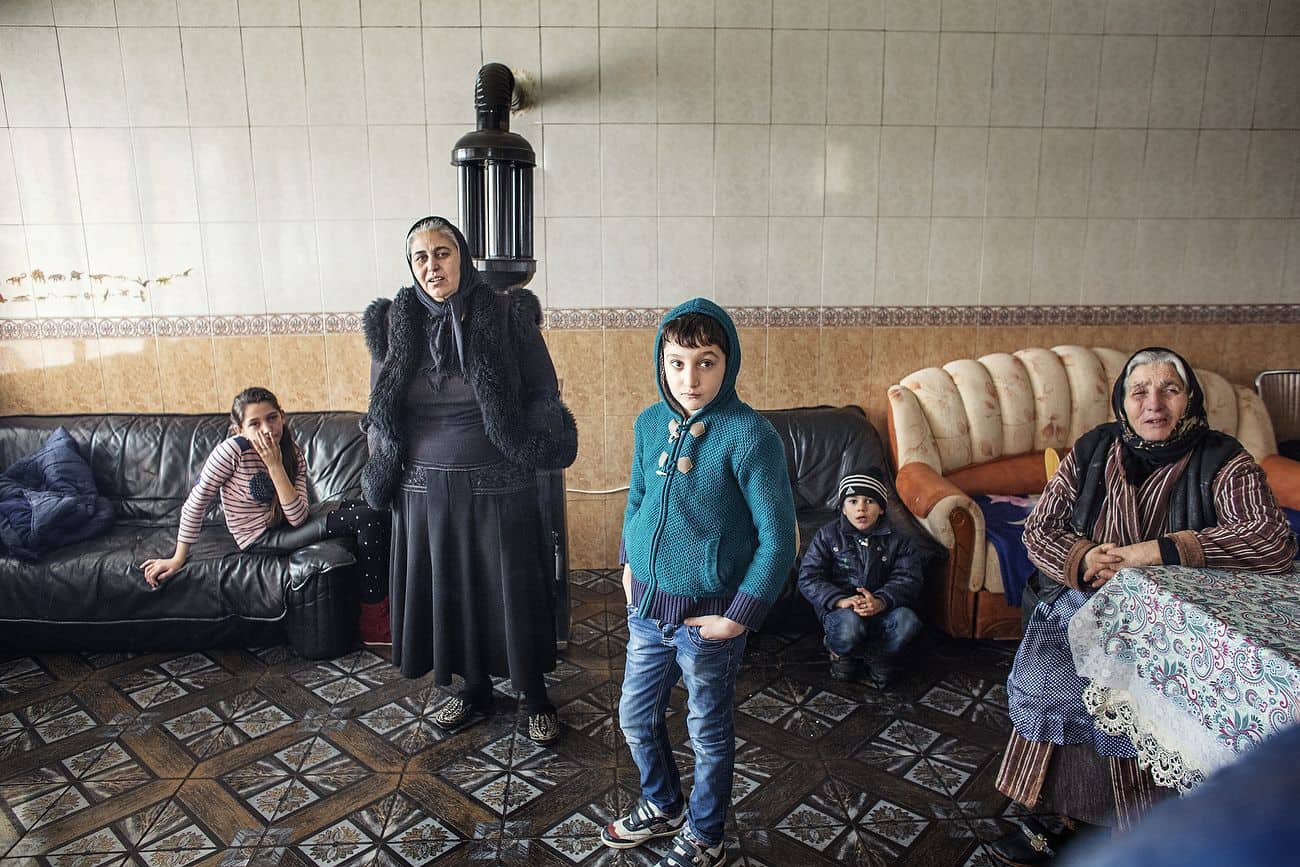
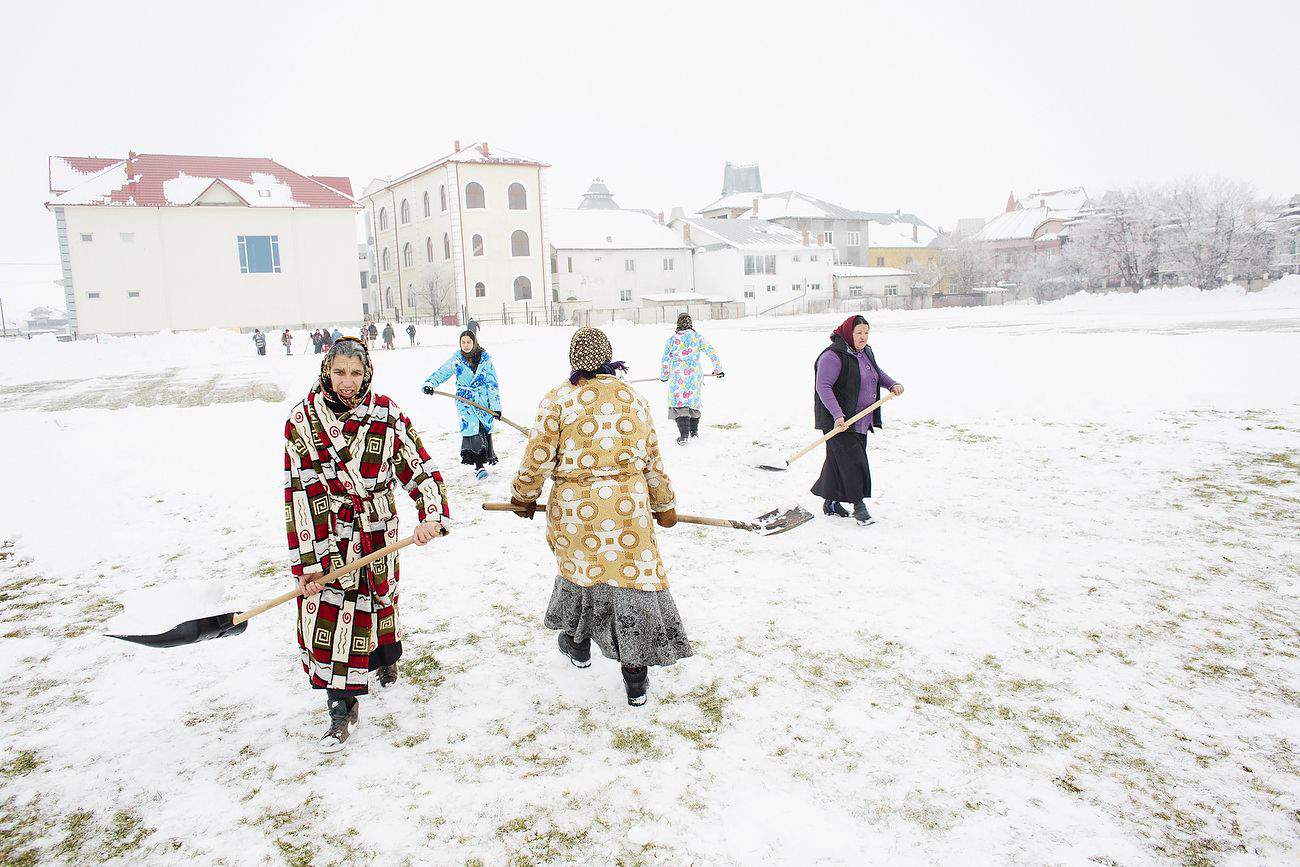
Roma people doing community work to secure social benefits eligibility, in Buzesti on February 6, 2014.
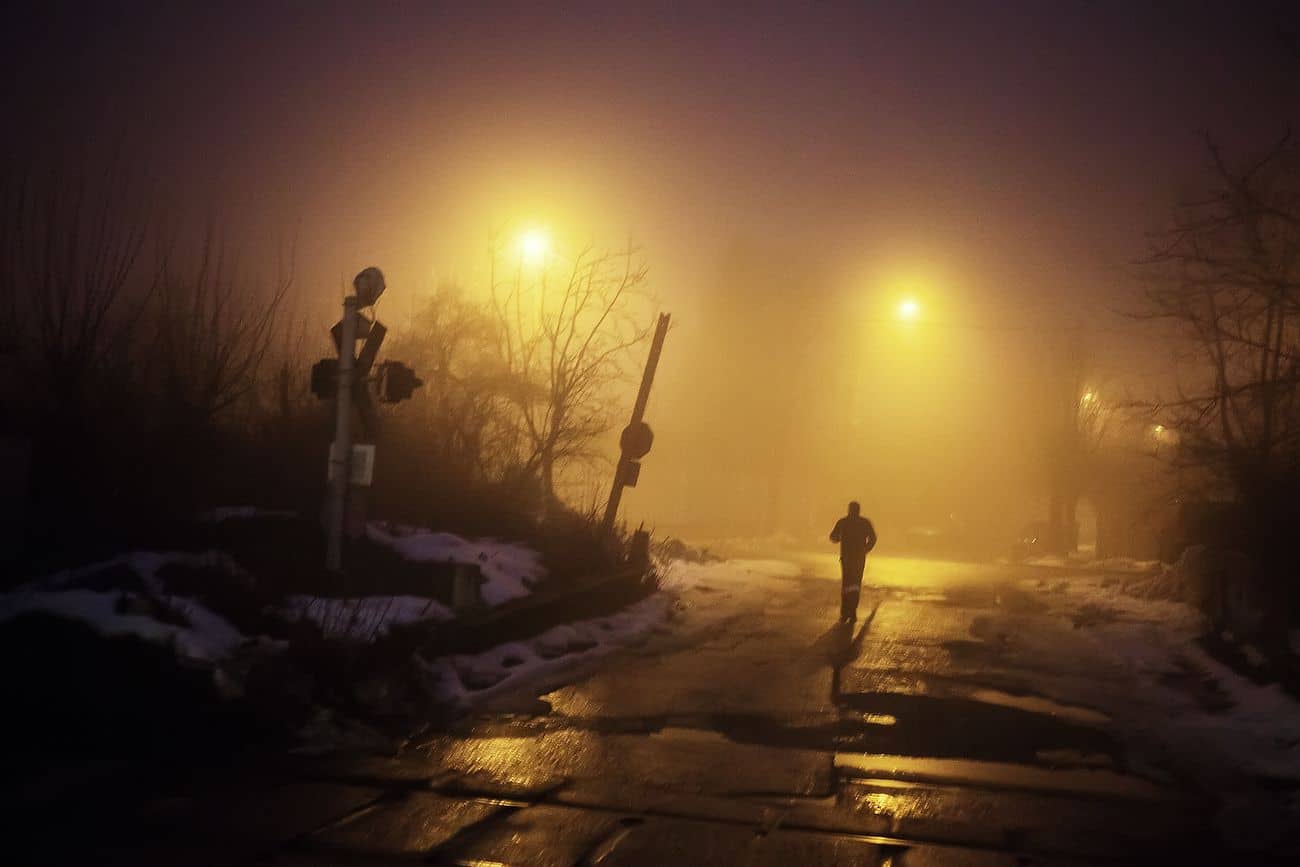
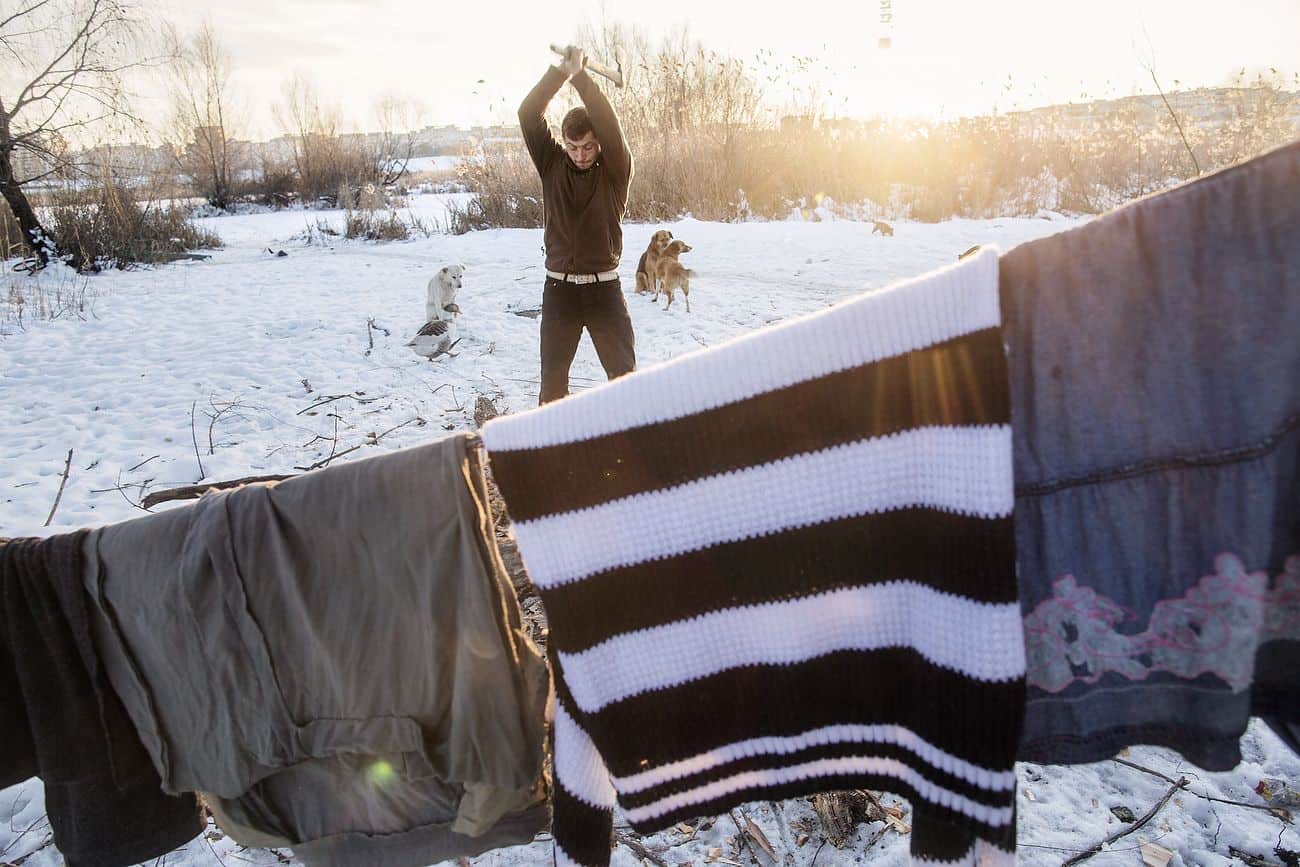
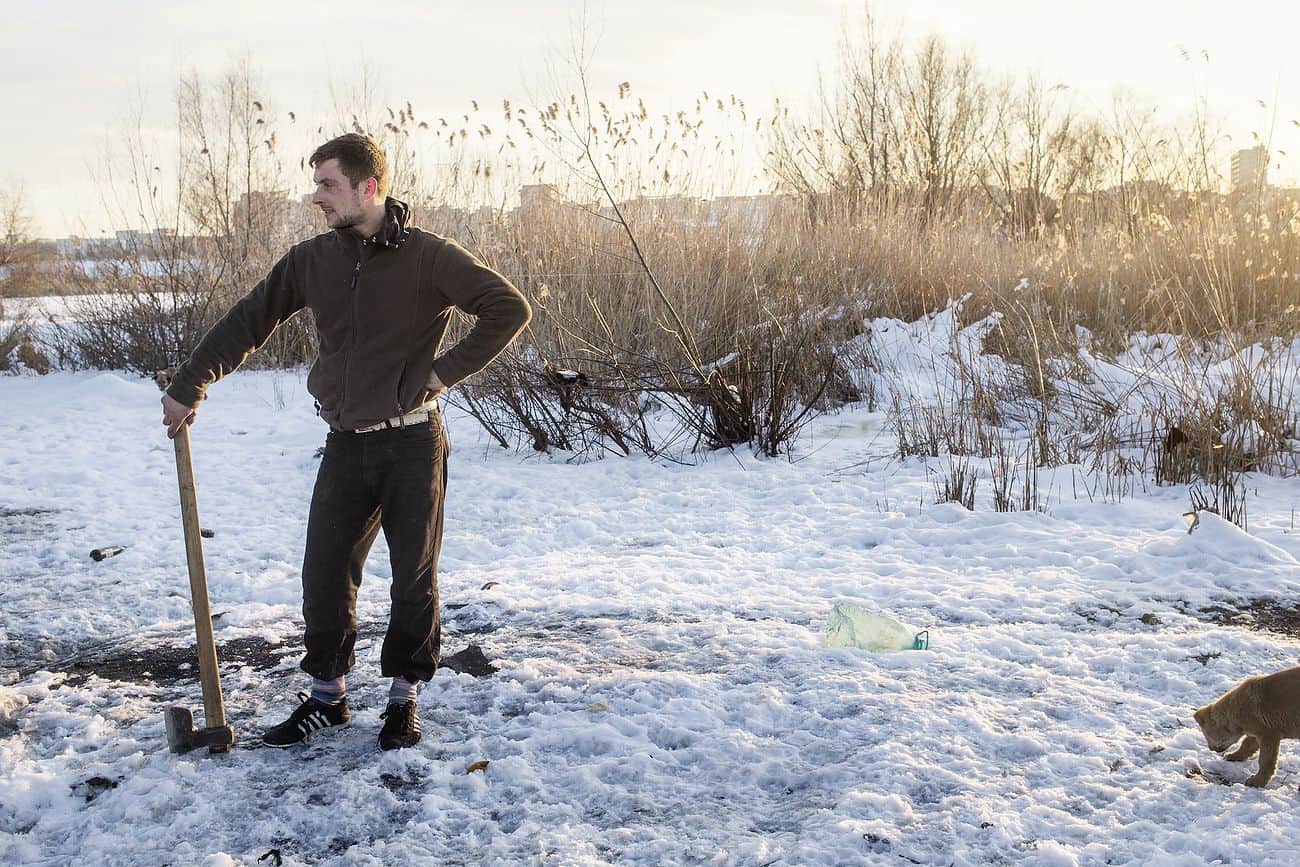
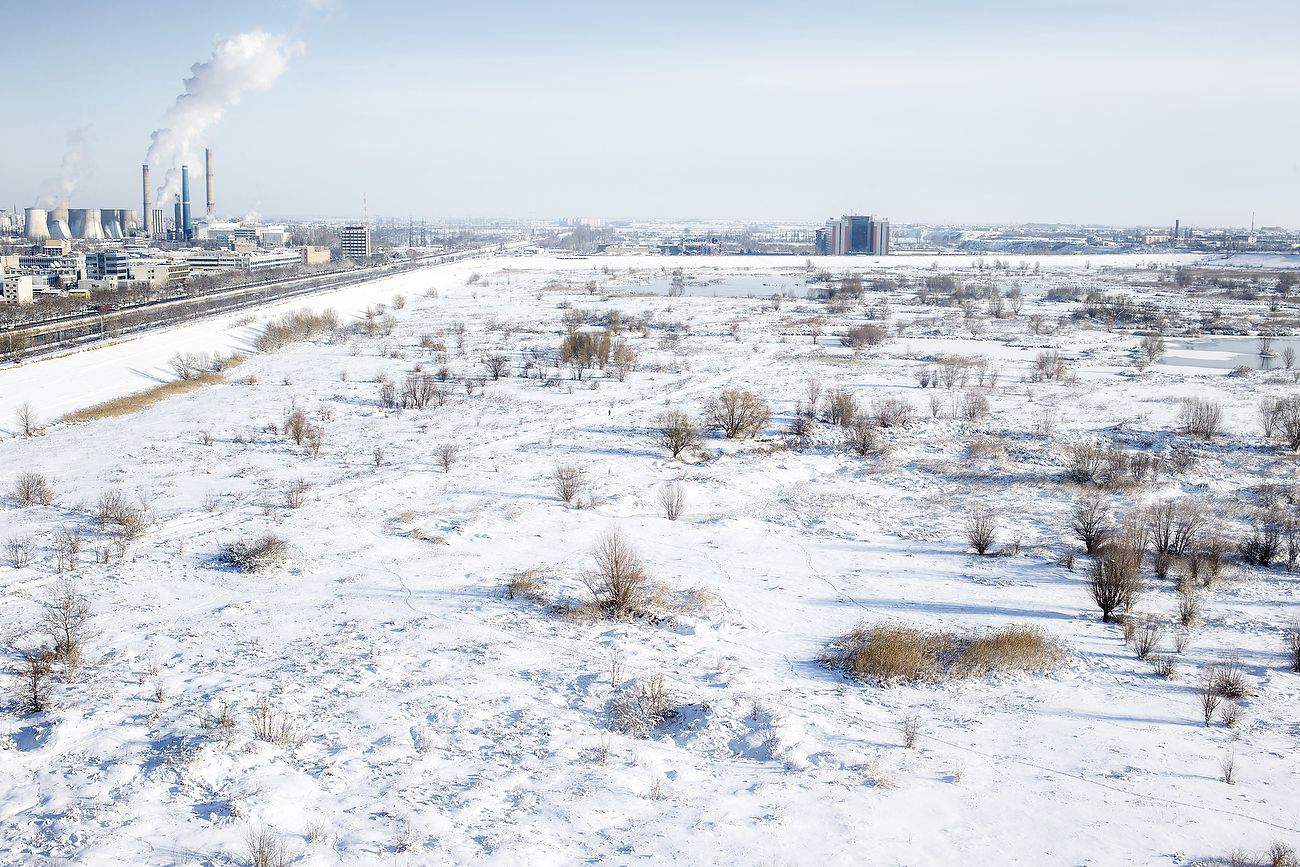
General view of the Vacaresti pit as seen in Bucharest on December 31, 2014. During Ceausescu regime the Vacaresti area, which was accommodating a 17th century monastery and a district of houses with big gardens, was demolished in order to build a lake. Since the works were abandoned in Õ88 nothing has been done here. In the presence of surfaced underground springs and plenty of time, mother nature has shape shifted the pit into a green oasis with delta like particularities where a variety of flora and fauna have blossomed. Starting 15 years ago many poor families, mainly Roma, have found shelter in the pit since the land property is still in dispute between the state and the former owners of the demolished houses. They all live in improvised shacks made from scraps they gather in the neighborhood. Those people are most resourceful when it comes to improvisation of what actually constitutes their life.
It seems that soon enough also the last three families will leave the area and move out while the pit would remain open to its next challenge Ð a natural park.
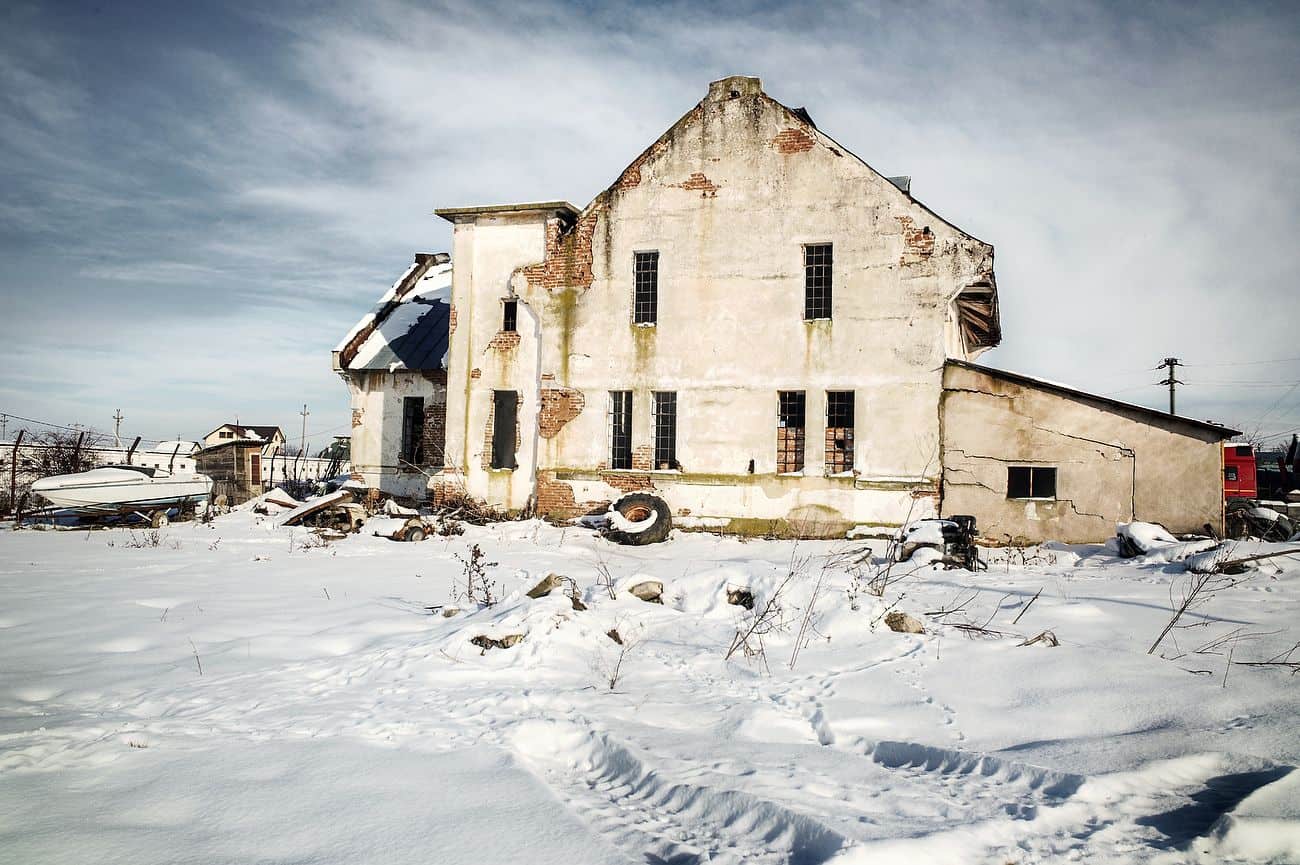
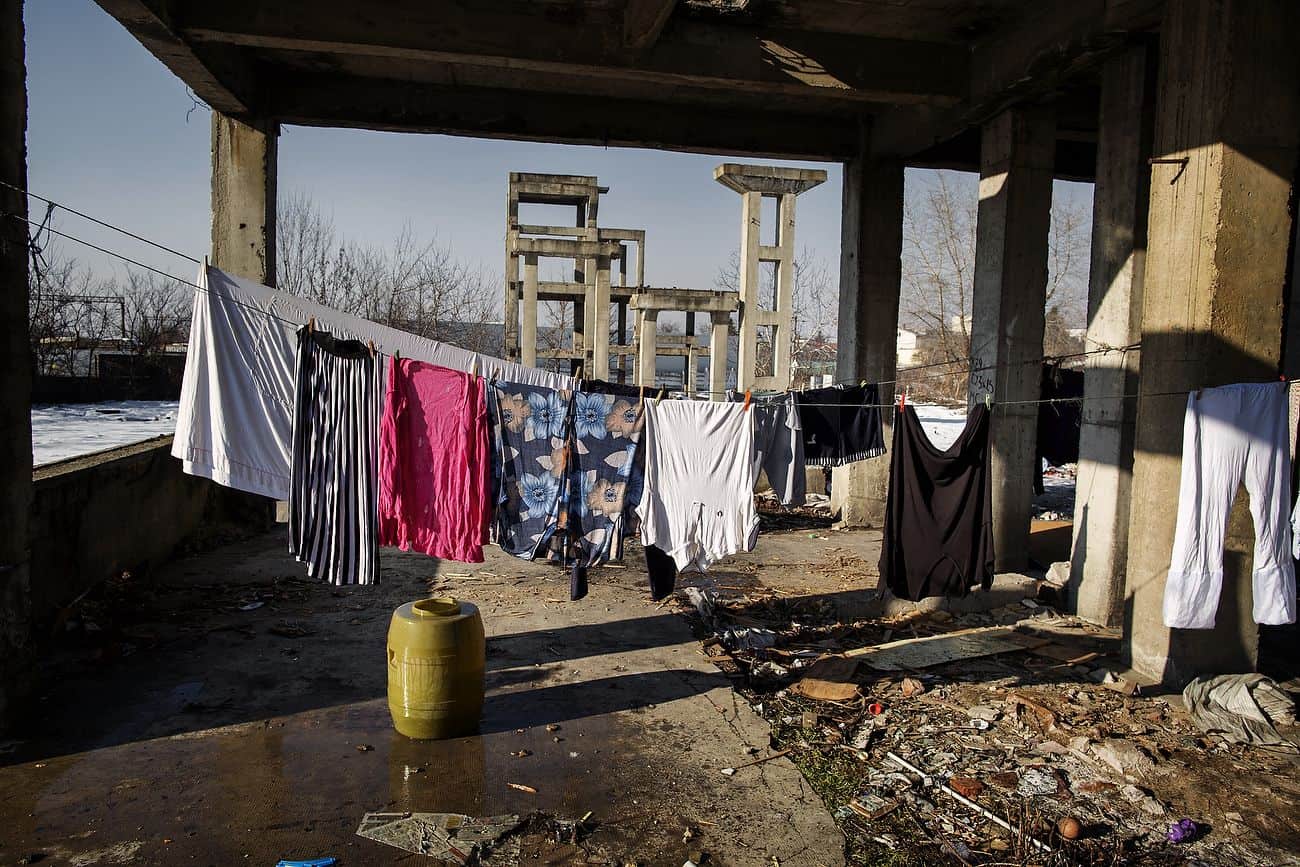
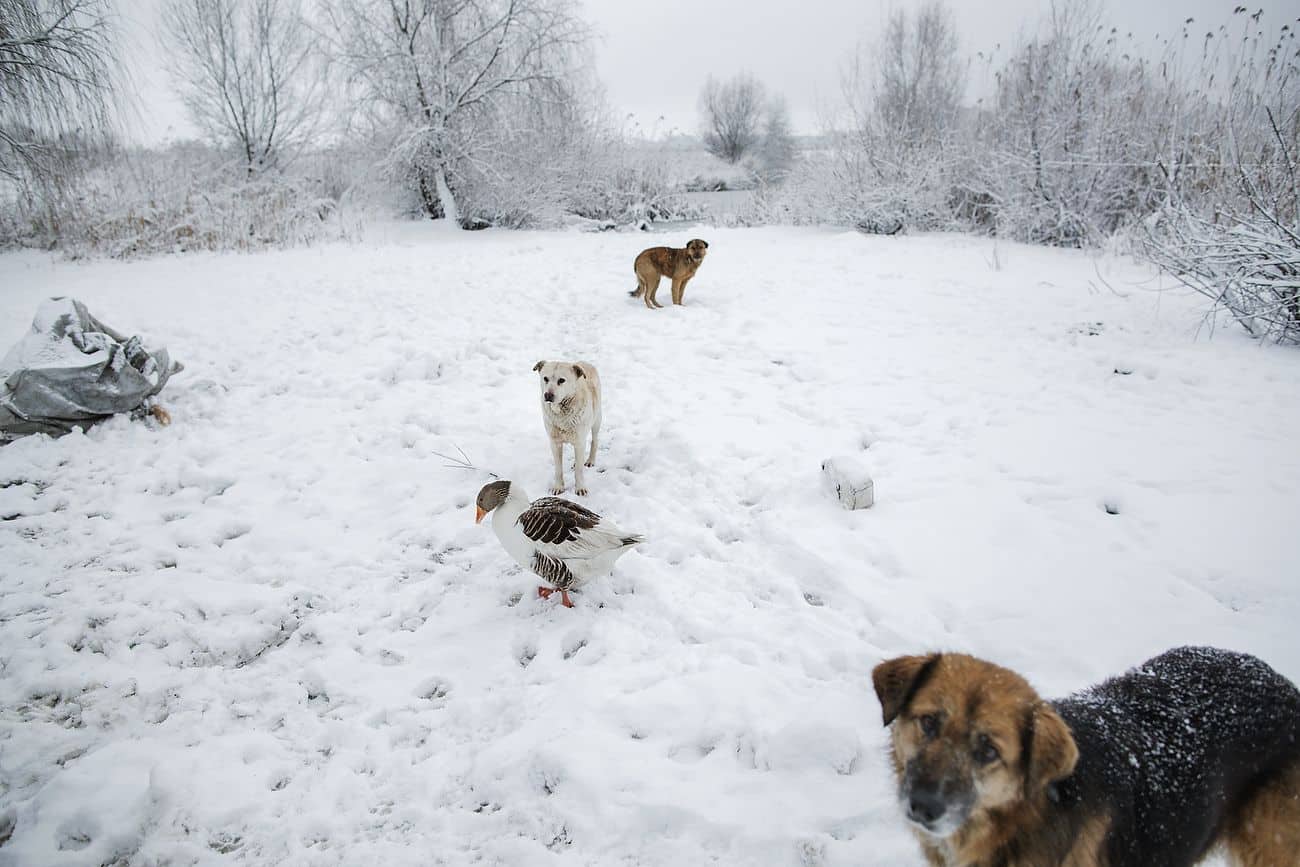
Stray dogs as seen inside Vacaresti pit in Bucharest on December 29, 2014. During Ceausescu regime the Vacaresti area, which was accommodating a 17th century monastery and a district of houses with big gardens, was demolished in order to build a lake. Since the works were abandoned in Õ88 nothing has been done here. In the presence of surfaced underground springs and plenty of time, mother nature has shape shifted the pit into a green oasis with delta like particularities where a variety of flora and fauna have blossomed. Starting 15 years ago many poor families, mainly Roma, have found shelter in the pit since the land property is still in dispute between the state and the former owners of the demolished houses. They all live in improvised shacks made from scraps they gather in the neighborhood. Those people are most resourceful when it comes to improvisation of what actually constitutes their life.
It seems that soon enough also the last three families will leave the area and move out while the pit would remain open to its next challenge Ð a natural park.

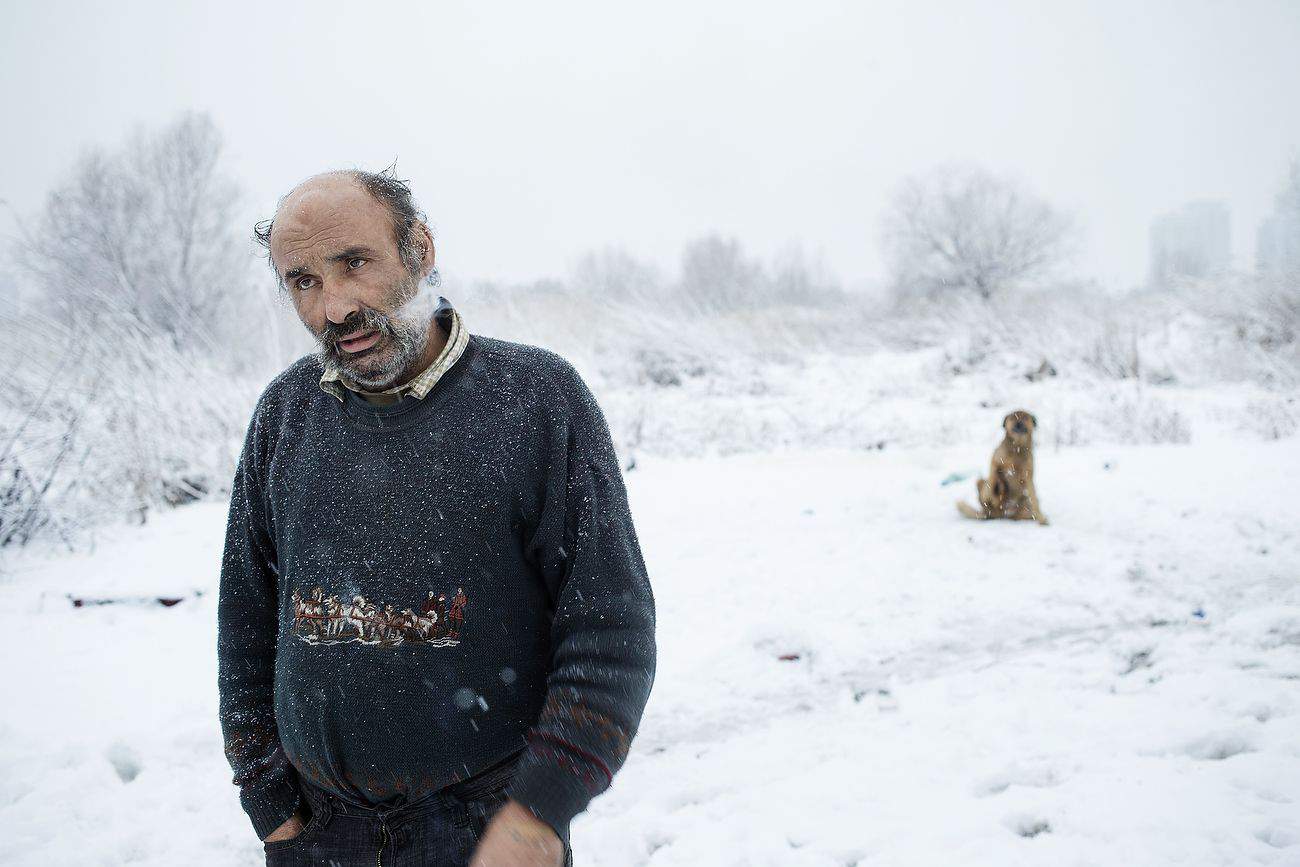
Roma man smoking as seen inside Vacaresti pit in Bucharest on December 29, 2014. During Ceausescu regime the Vacaresti area, which was accommodating a 17th century monastery and a district of houses with big gardens, was demolished in order to build a lake. Since the works were abandoned in Õ88 nothing has been done here. In the presence of surfaced underground springs and plenty of time, mother nature has shape shifted the pit into a green oasis with delta like particularities where a variety of flora and fauna have blossomed. Starting 15 years ago many poor families, mainly Roma, have found shelter in the pit since the land property is still in dispute between the state and the former owners of the demolished houses. They all live in improvised shacks made from scraps they gather in the neighborhood. Those people are most resourceful when it comes to improvisation of what actually constitutes their life.
It seems that soon enough also the last three families will leave the area and move out while the pit would remain open to its next challenge Ð a natural park.
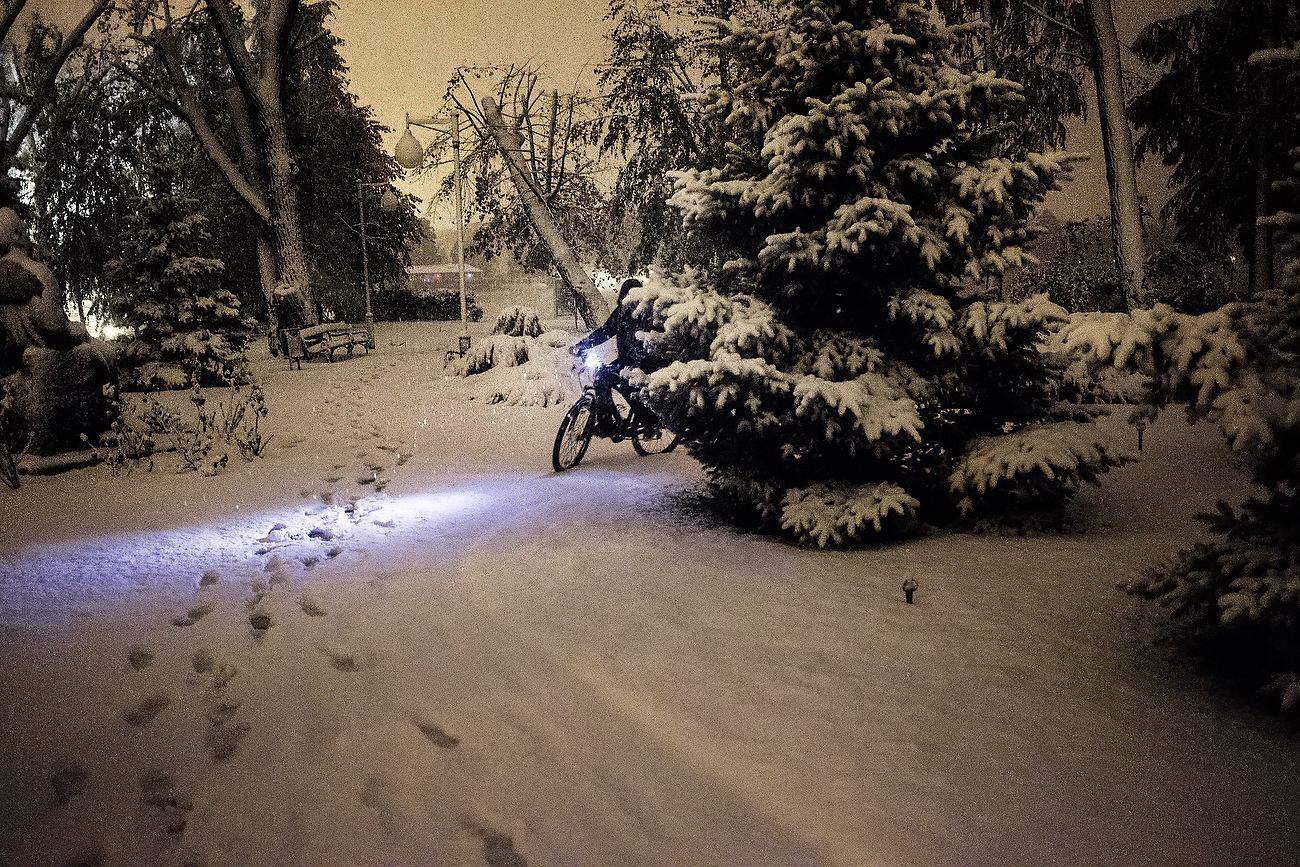

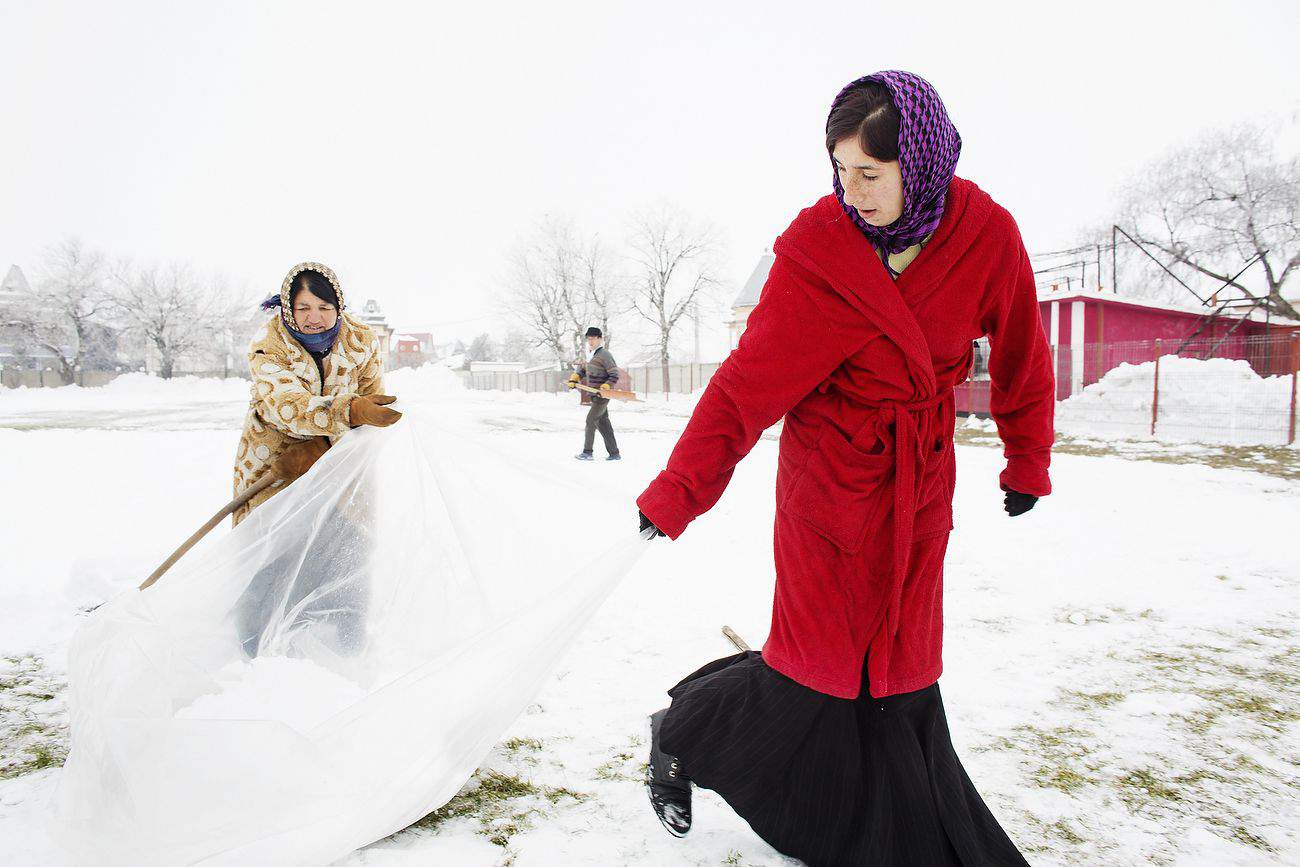
Roma people doing community work to secure social benefits eligibility, in Buzesti on February 6, 2014.


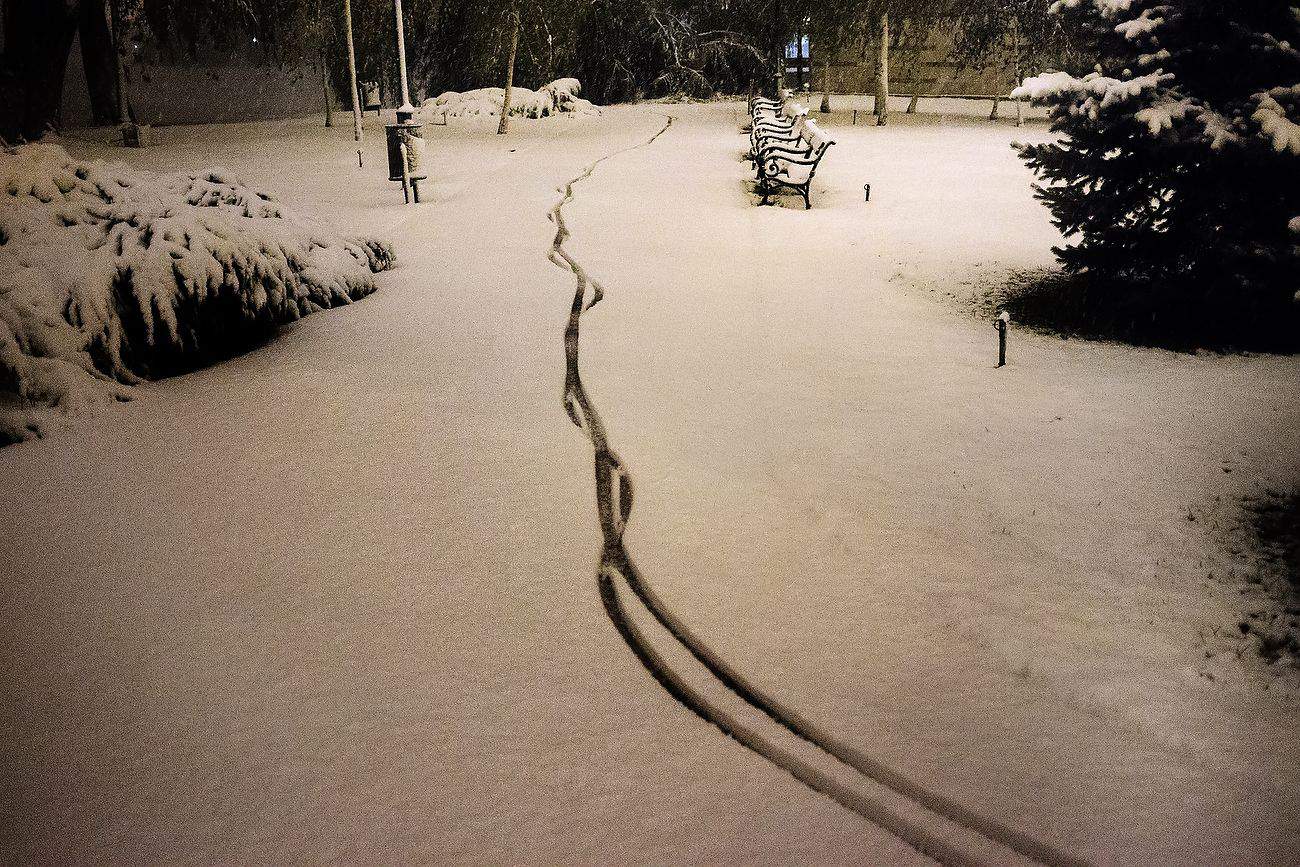

Roma kid in the doorway of a ramshackle dwelling as seen inside Vacaresti pit in Bucharest on December 29, 2014. During Ceausescu regime the Vacaresti area, which was accommodating a 17th century monastery and a district of houses with big gardens, was demolished in order to build a lake. Since the works were abandoned in Õ88 nothing has been done here. In the presence of surfaced underground springs and plenty of time, mother nature has shape shifted the pit into a green oasis with delta like particularities where a variety of flora and fauna have blossomed. Starting 15 years ago many poor families, mainly Roma, have found shelter in the pit since the land property is still in dispute between the state and the former owners of the demolished houses. They all live in improvised shacks made from scraps they gather in the neighborhood. Those people are most resourceful when it comes to improvisation of what actually constitutes their life.
It seems that soon enough also the last three families will leave the area and move out while the pit would remain open to its next challenge Ð a natural park.


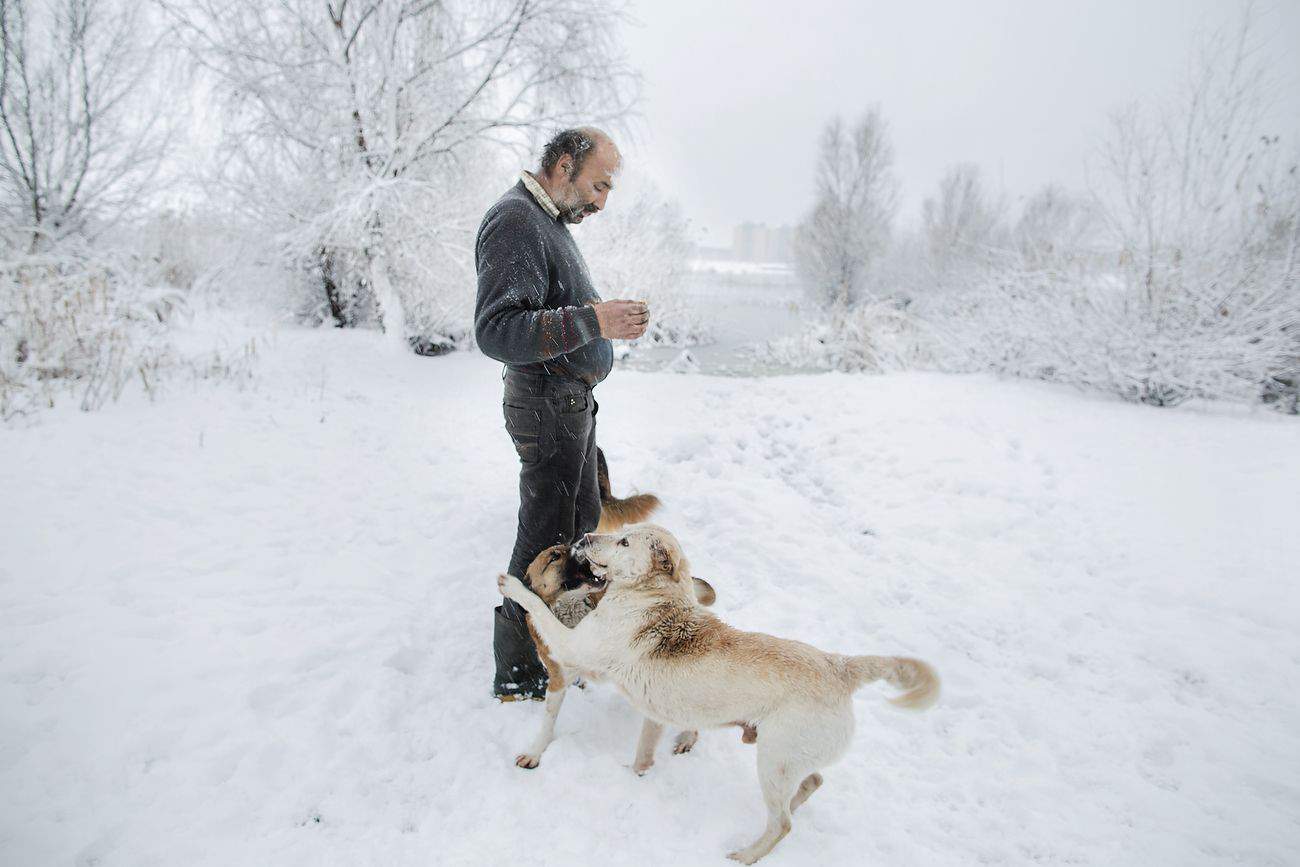
Roma man with his dogs as seen inside Vacaresti pit in Bucharest on December 29, 2014. During Ceausescu regime the Vacaresti area, which was accommodating a 17th century monastery and a district of houses with big gardens, was demolished in order to build a lake. Since the works were abandoned in Õ88 nothing has been done here. In the presence of surfaced underground springs and plenty of time, mother nature has shape shifted the pit into a green oasis with delta like particularities where a variety of flora and fauna have blossomed. Starting 15 years ago many poor families, mainly Roma, have found shelter in the pit since the land property is still in dispute between the state and the former owners of the demolished houses. They all live in improvised shacks made from scraps they gather in the neighborhood. Those people are most resourceful when it comes to improvisation of what actually constitutes their life.
It seems that soon enough also the last three families will leave the area and move out while the pit would remain open to its next challenge Ð a natural park.
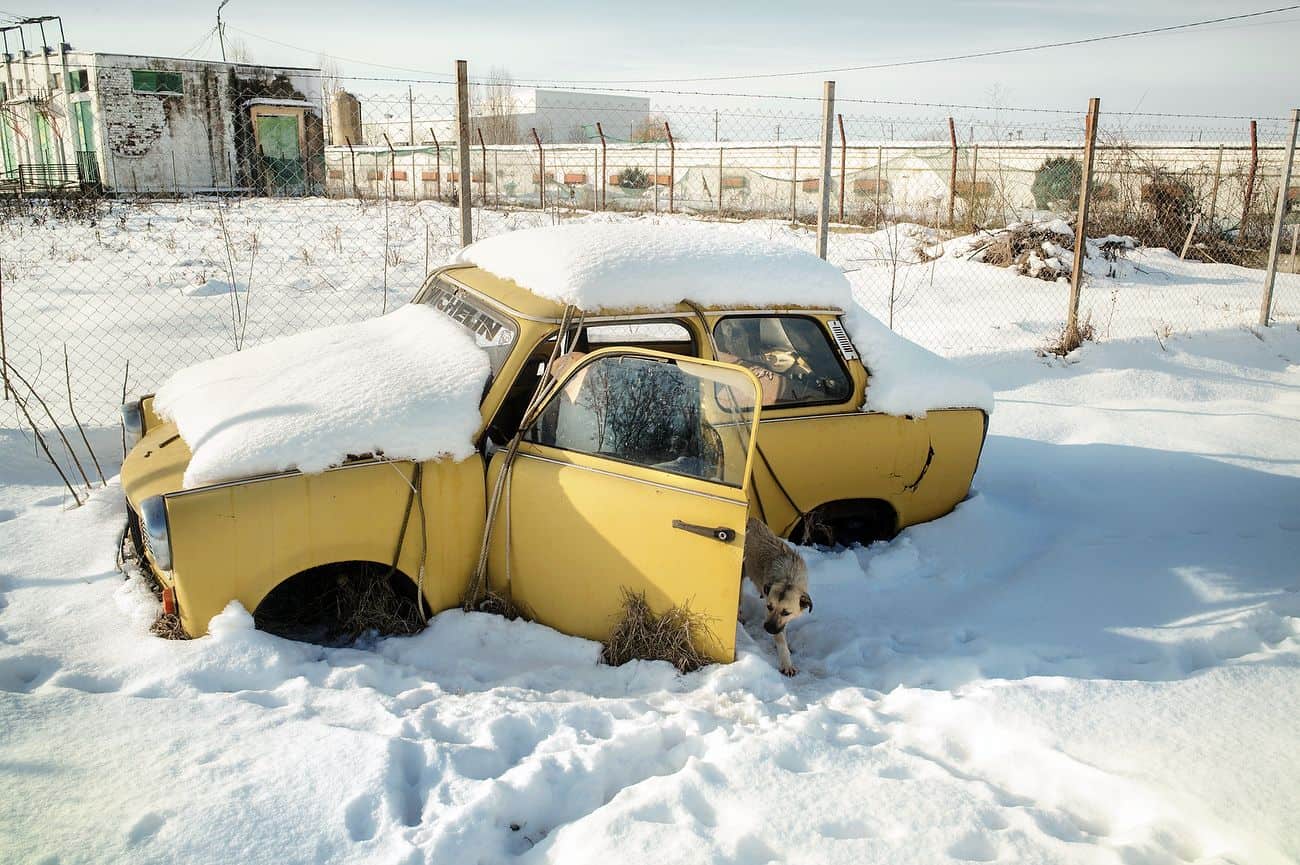
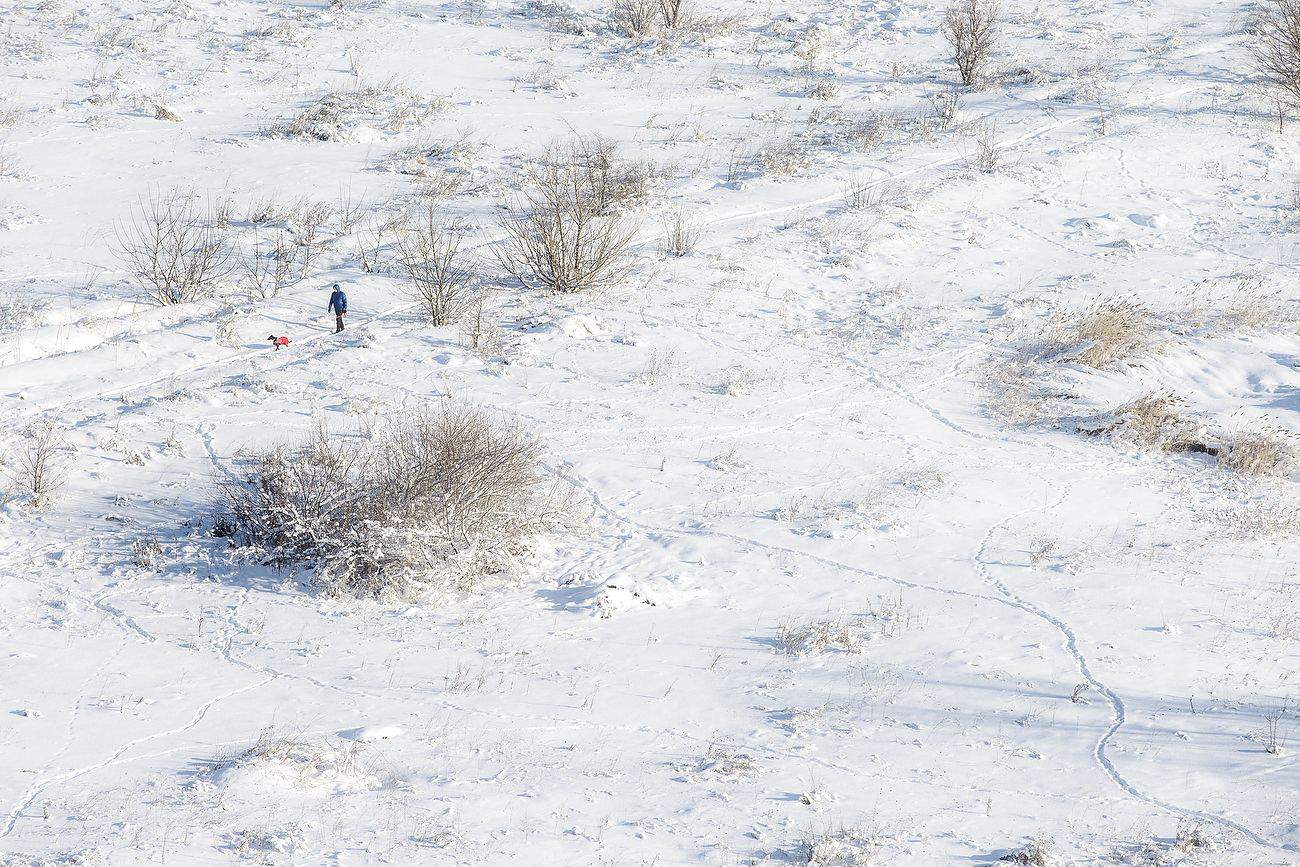
Man walking his dog in Vacaresti pit as seen in Bucharest on December 31, 2014. During Ceausescu regime the Vacaresti area, which was accommodating a 17th century monastery and a district of houses with big gardens, was demolished in order to build a lake. Since the works were abandoned in Õ88 nothing has been done here. In the presence of surfaced underground springs and plenty of time, mother nature has shape shifted the pit into a green oasis with delta like particularities where a variety of flora and fauna have blossomed. Starting 15 years ago many poor families, mainly Roma, have found shelter in the pit since the land property is still in dispute between the state and the former owners of the demolished houses. They all live in improvised shacks made from scraps they gather in the neighborhood. Those people are most resourceful when it comes to improvisation of what actually constitutes their life.
It seems that soon enough also the last three families will leave the area and move out while the pit would remain open to its next challenge Ð a natural park.

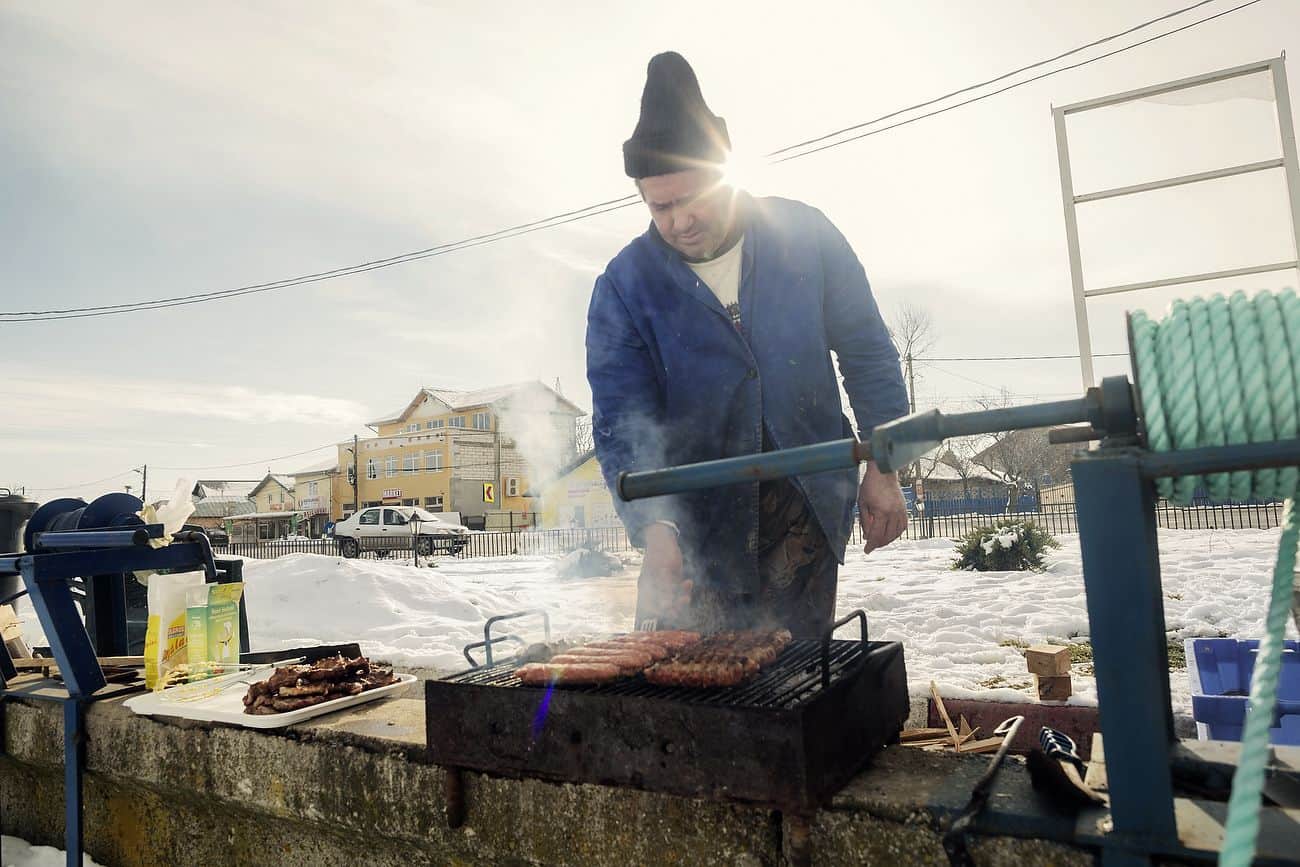
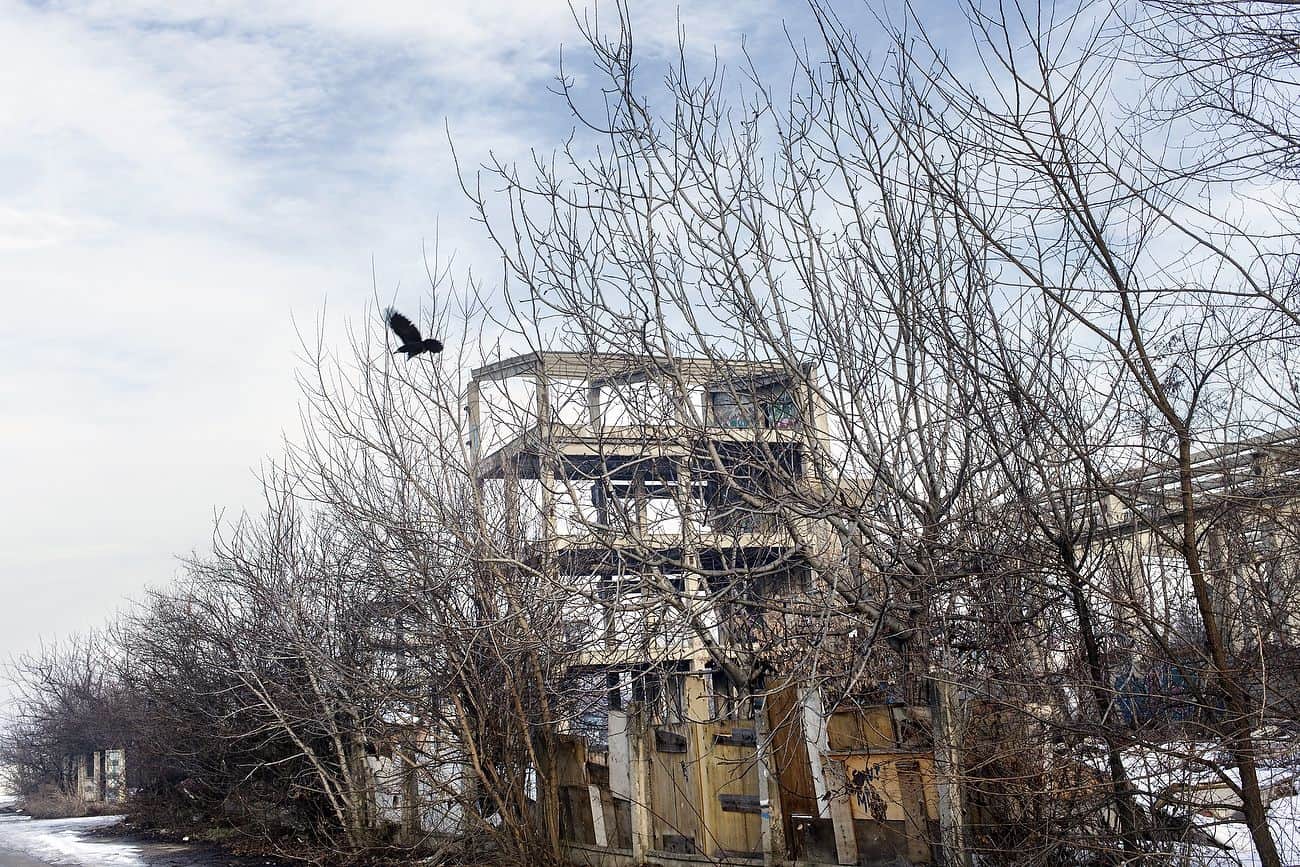
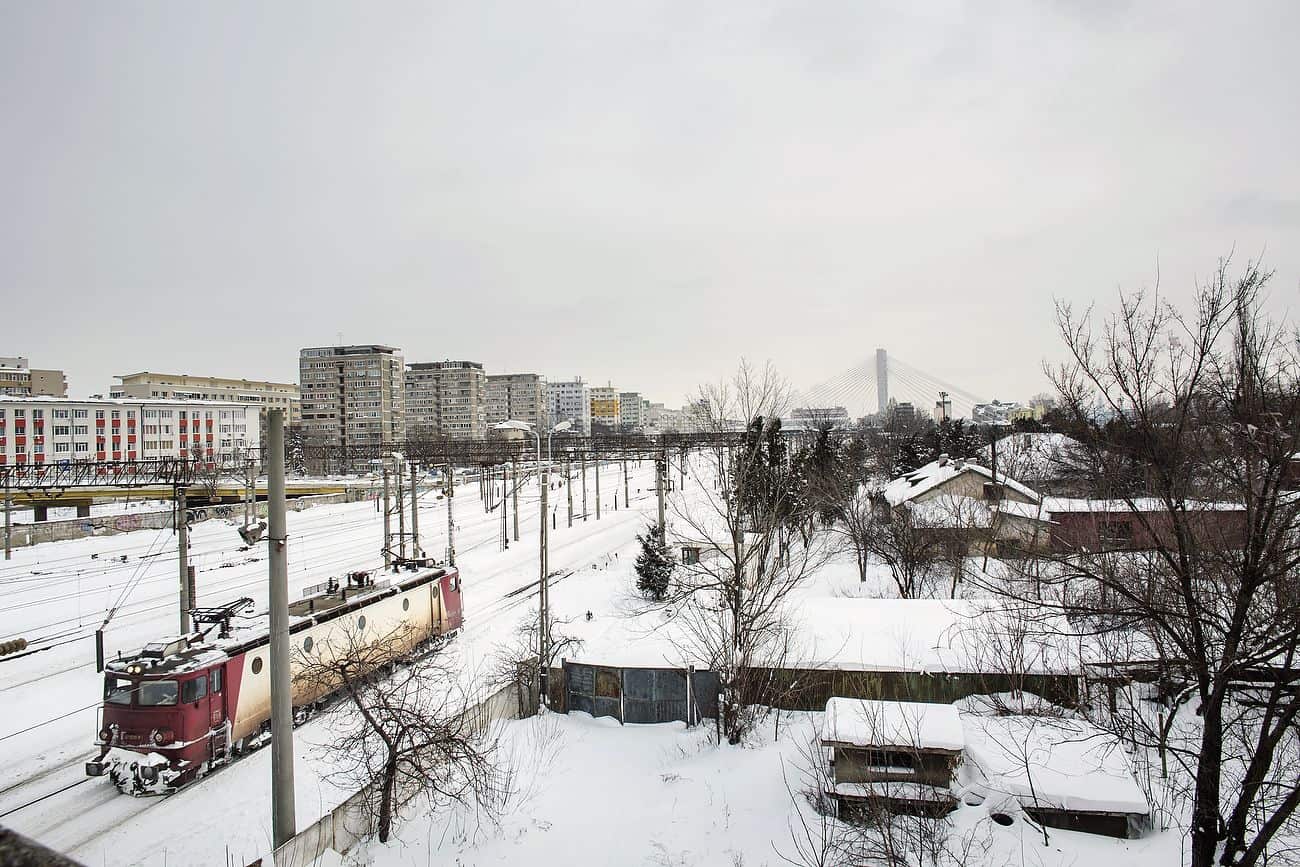
Locomotive passing by, as seen in Bucharest near Gara de Nord on January 30, 2014. Weather forecasters issued a code red severe weather warning as a second wave of blizzards affects the southeastern regions of Romania disrupting road and rail traffic.

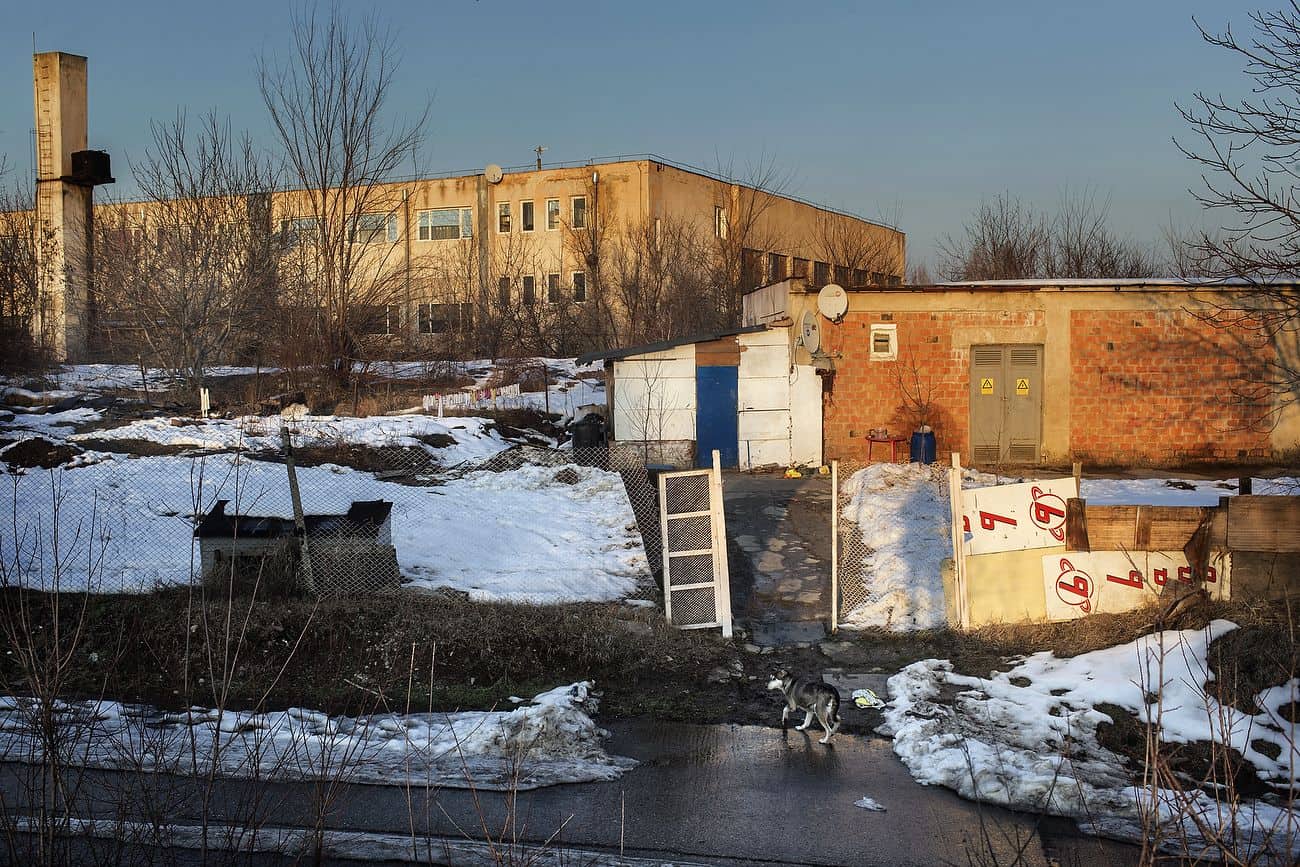
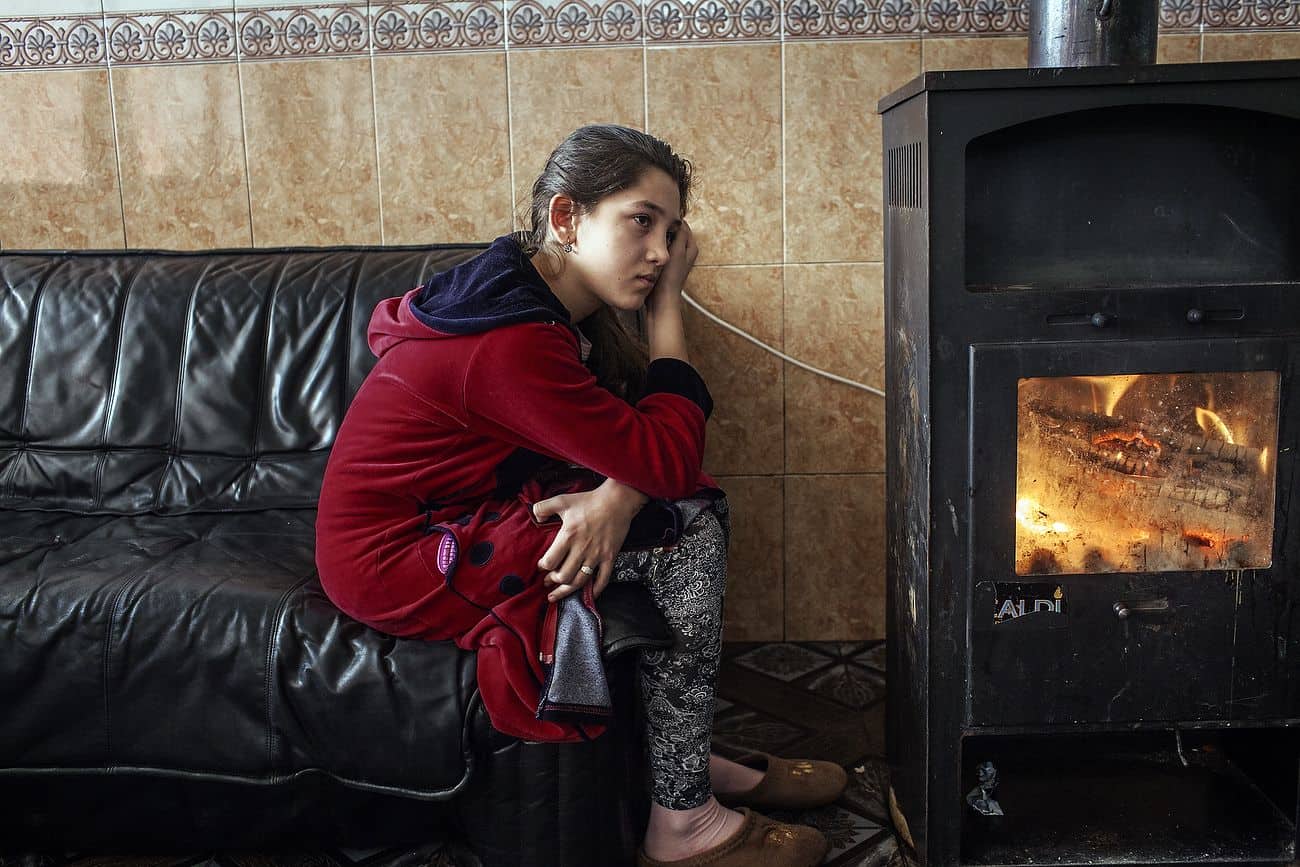
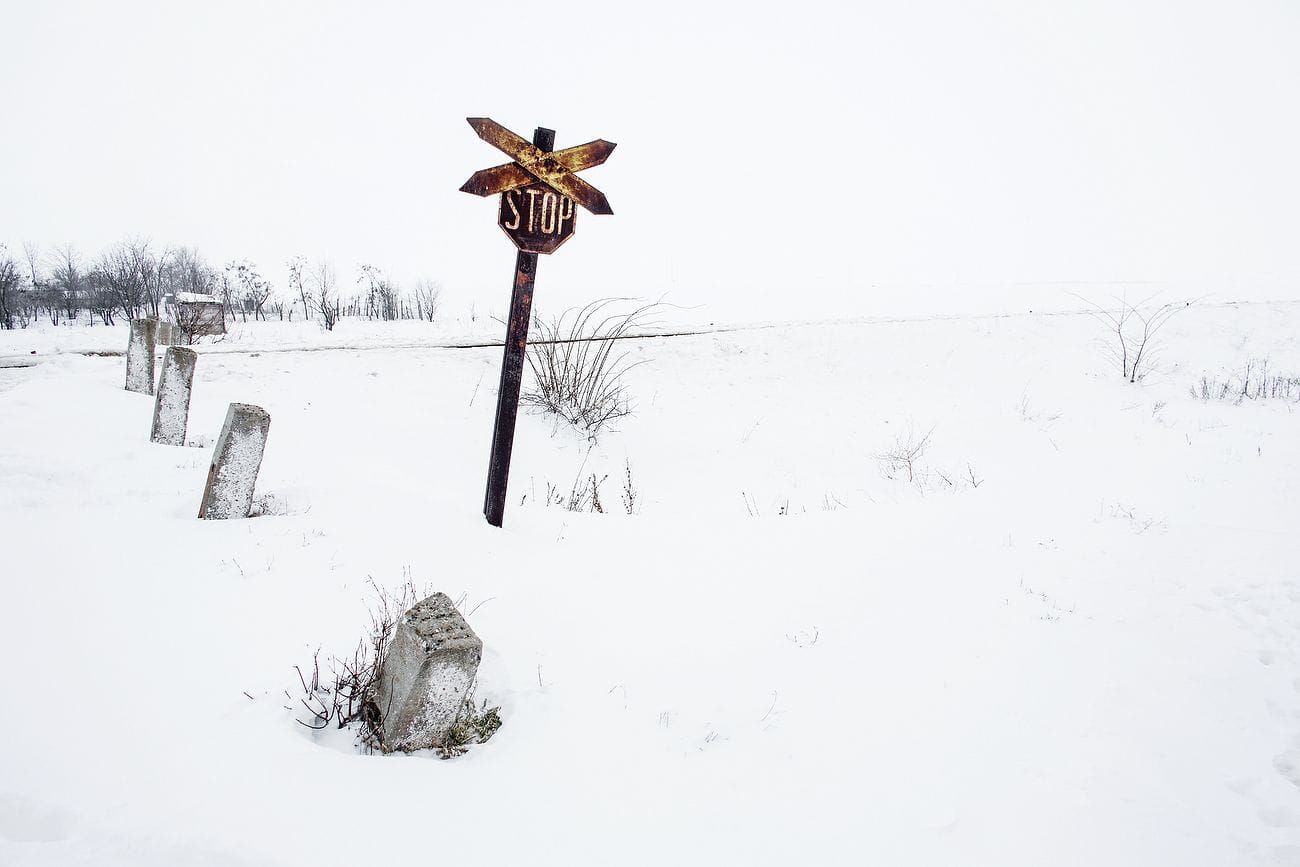

Man holding a a child walks by, as seen in Bucharest, in Gara de Nord on January 30, 2014. Weather forecasters issued a code red severe weather warning as a second wave of blizzards affects the southeastern regions of Romania disrupting road and rail traffic.
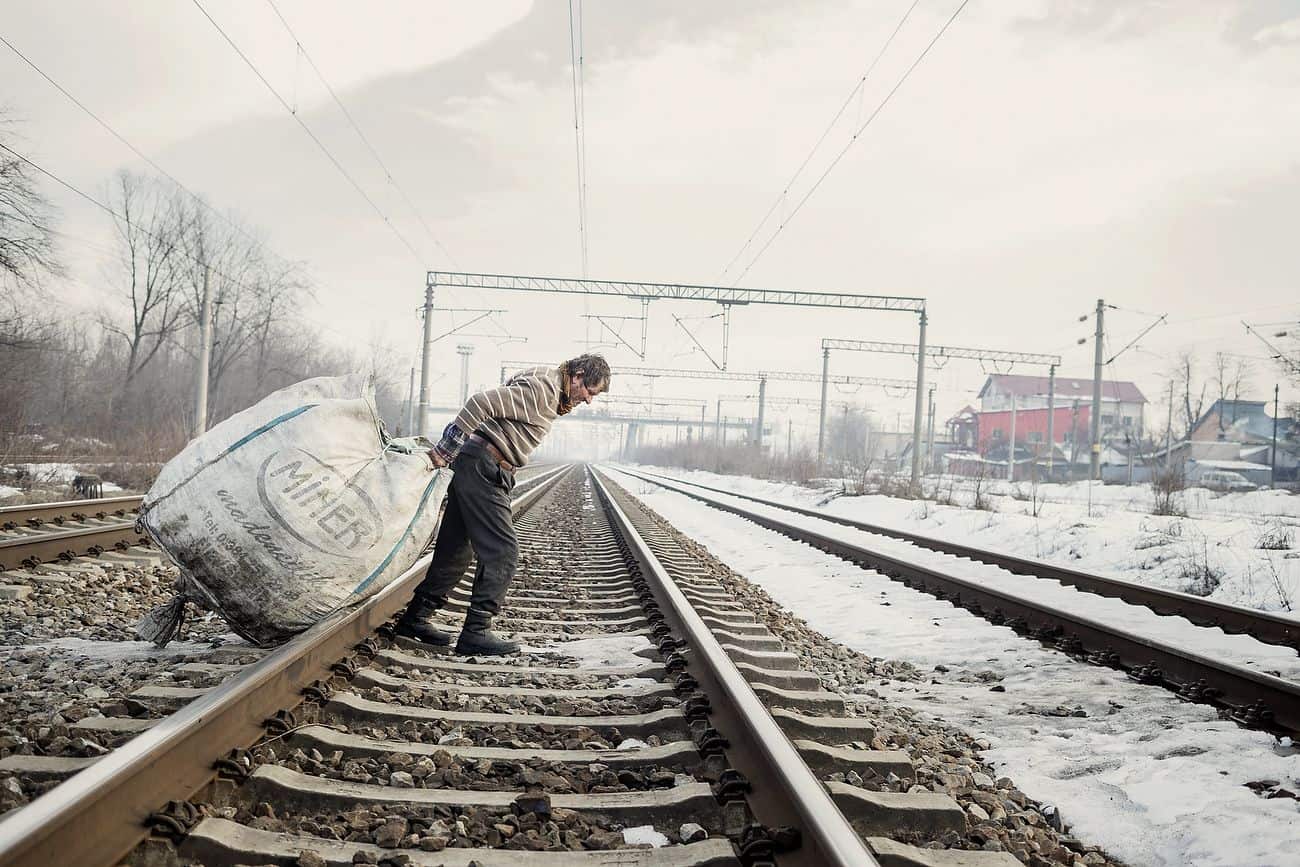
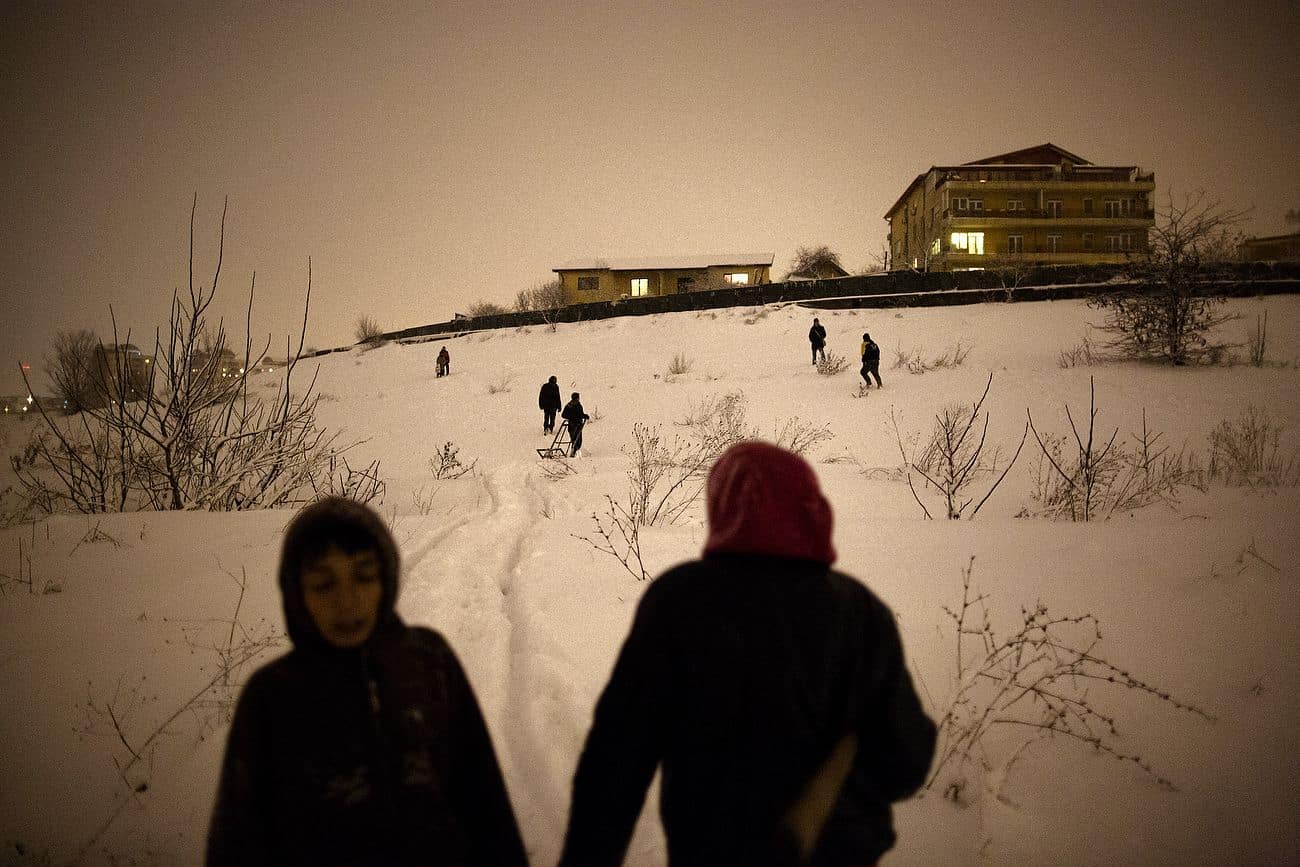
People as seen inside Vacaresti pit in Bucharest on December 29, 2014. During Ceausescu regime the Vacaresti area, which was accommodating a 17th century monastery and a district of houses with big gardens, was demolished in order to build a lake. Since the works were abandoned in Õ88 nothing has been done here. In the presence of surfaced underground springs and plenty of time, mother nature has shape shifted the pit into a green oasis with delta like particularities where a variety of flora and fauna have blossomed. Starting 15 years ago many poor families, mainly Roma, have found shelter in the pit since the land property is still in dispute between the state and the former owners of the demolished houses. They all live in improvised shacks made from scraps they gather in the neighborhood. Those people are most resourceful when it comes to improvisation of what actually constitutes their life.
It seems that soon enough also the last three families will leave the area and move out while the pit would remain open to its next challenge Ð a natural park.
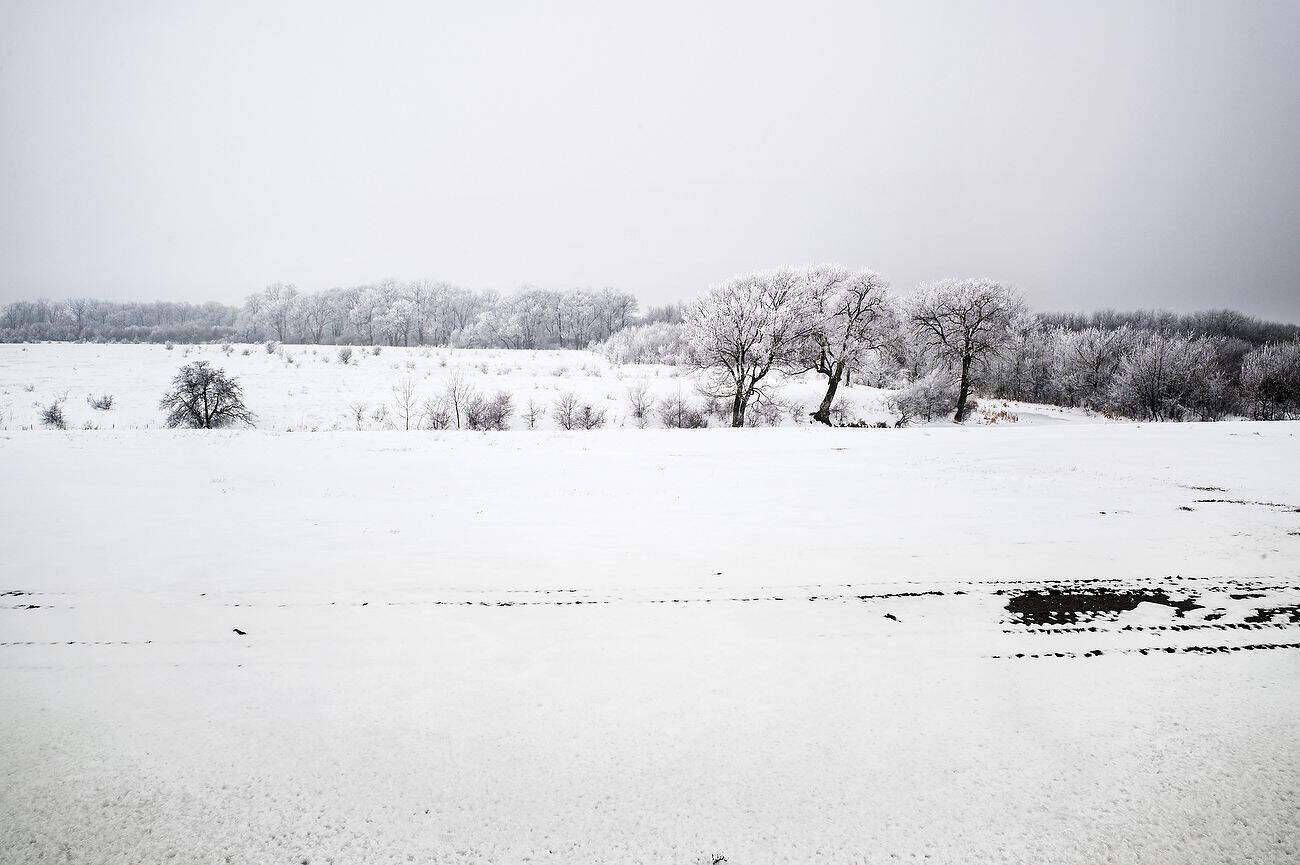
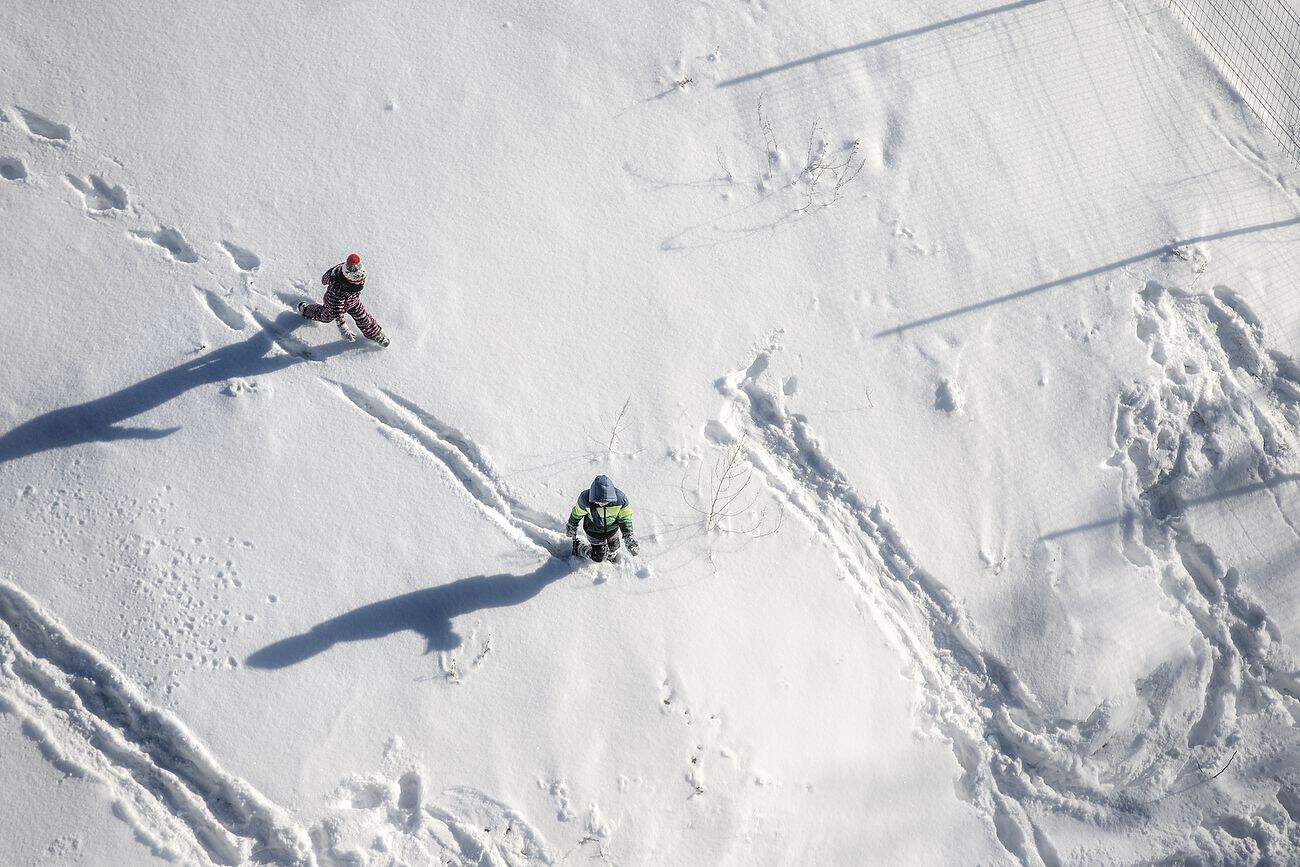
Kids playing in the snow on the edge of Vacaresti pit, as seen in Bucharest on December 31, 2014. During Ceausescu regime the Vacaresti area, which was accommodating a 17th century monastery and a district of houses with big gardens, was demolished in order to build a lake. Since the works were abandoned in Õ88 nothing has been done here. In the presence of surfaced underground springs and plenty of time, mother nature has shape shifted the pit into a green oasis with delta like particularities where a variety of flora and fauna have blossomed. Starting 15 years ago many poor families, mainly Roma, have found shelter in the pit since the land property is still in dispute between the state and the former owners of the demolished houses. They all live in improvised shacks made from scraps they gather in the neighborhood. Those people are most resourceful when it comes to improvisation of what actually constitutes their life.
It seems that soon enough also the last three families will leave the area and move out while the pit would remain open to its next challenge Ð a natural park.
